The Manor of Duxbury Part 1.
Return to - the Ancient Parish of Standish
900 to 1525 AD. Deowuc the Saxon - Knights of St. John.
1303 to 1647 AD. Hugh de Haydock de Standish to Alexander Standish - Haydock Blood Line. FAMILY 1.
1647 to 1812 AD. Richard Standish to Sir Frank Standish Haydock Blood Line FAMILY 2.
1490 to 1771 AD. Thurstan Standish of the Burgh - Standish of Standish Blood Line. FAMILY 3.
DNA of the Standish of Standish Family.
1584. Alexander Pilkington son of Richard of the Burgh.
1799. Frank Hall - Lord of the Manor of EGGLESCLIFFE and DUXBURY. FAMILY 4.
1841. Carr Family of the Manor of Duxbury.
1898 The Mayhew Family of Duxbury.
1932. The End of the Manor of Duxbury.
![]()
Two branches of the Standish family with two very different Bloodlines and DNA profiles.
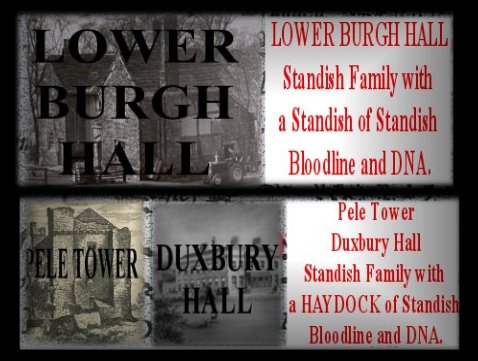
1.The Standish family of the Burgh upon the Manor of Duxbury had a Bloodline from the Male line of the House of Standish of Standish.
2.The Standish family of the Pele and Hall of Duxbury who were the Lords of the Manor of Duxbury 1300 to 1812, had a Bloodline from the Male line of Haydock of Standish.
![]()

The Manor of DUXBURY.
within the -
Ancient Parish of Standish Lancashire England.
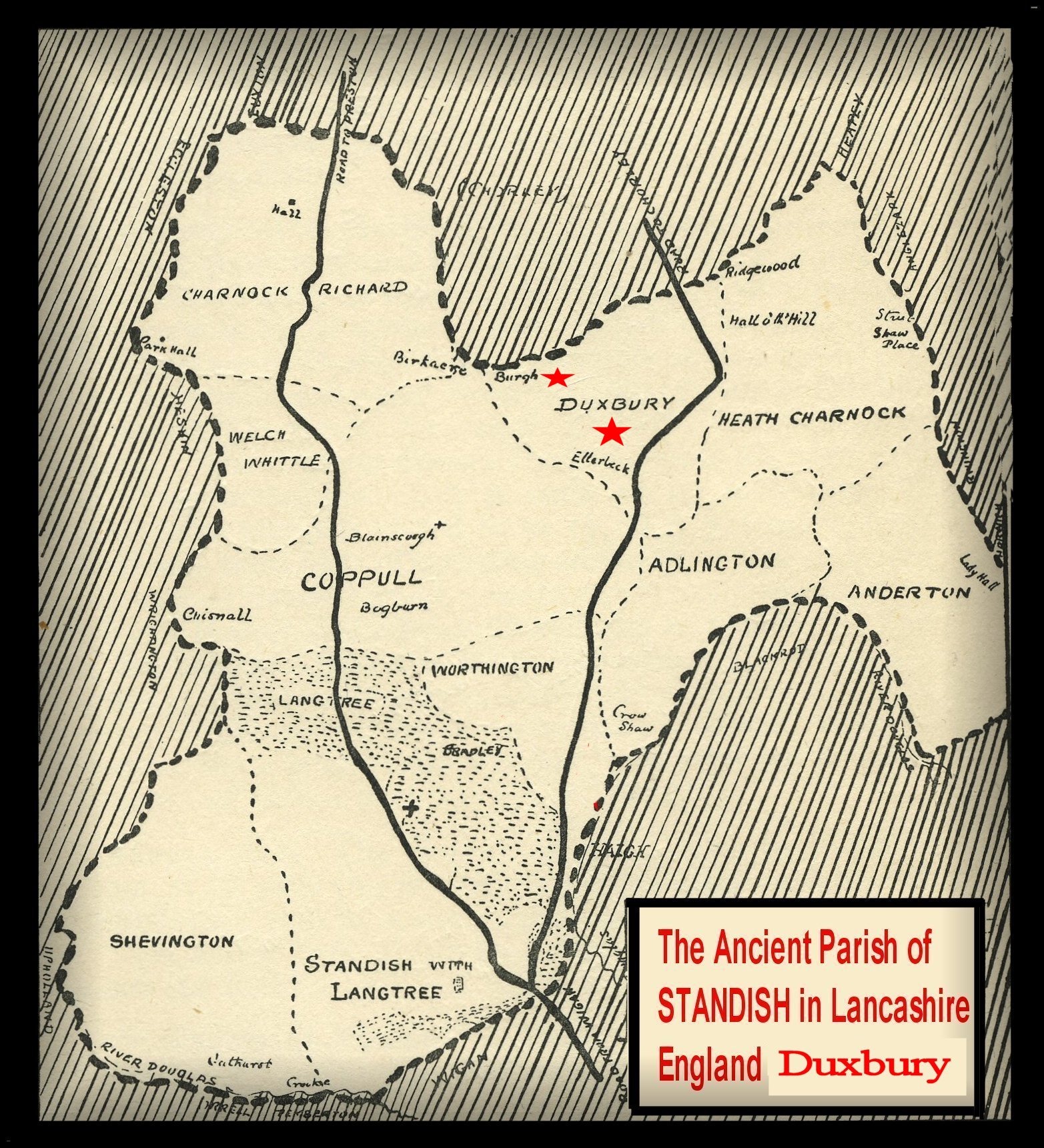
![]()
900 to 1525 AD. Deowuc the Saxon and his descendants the Duxbury Family.
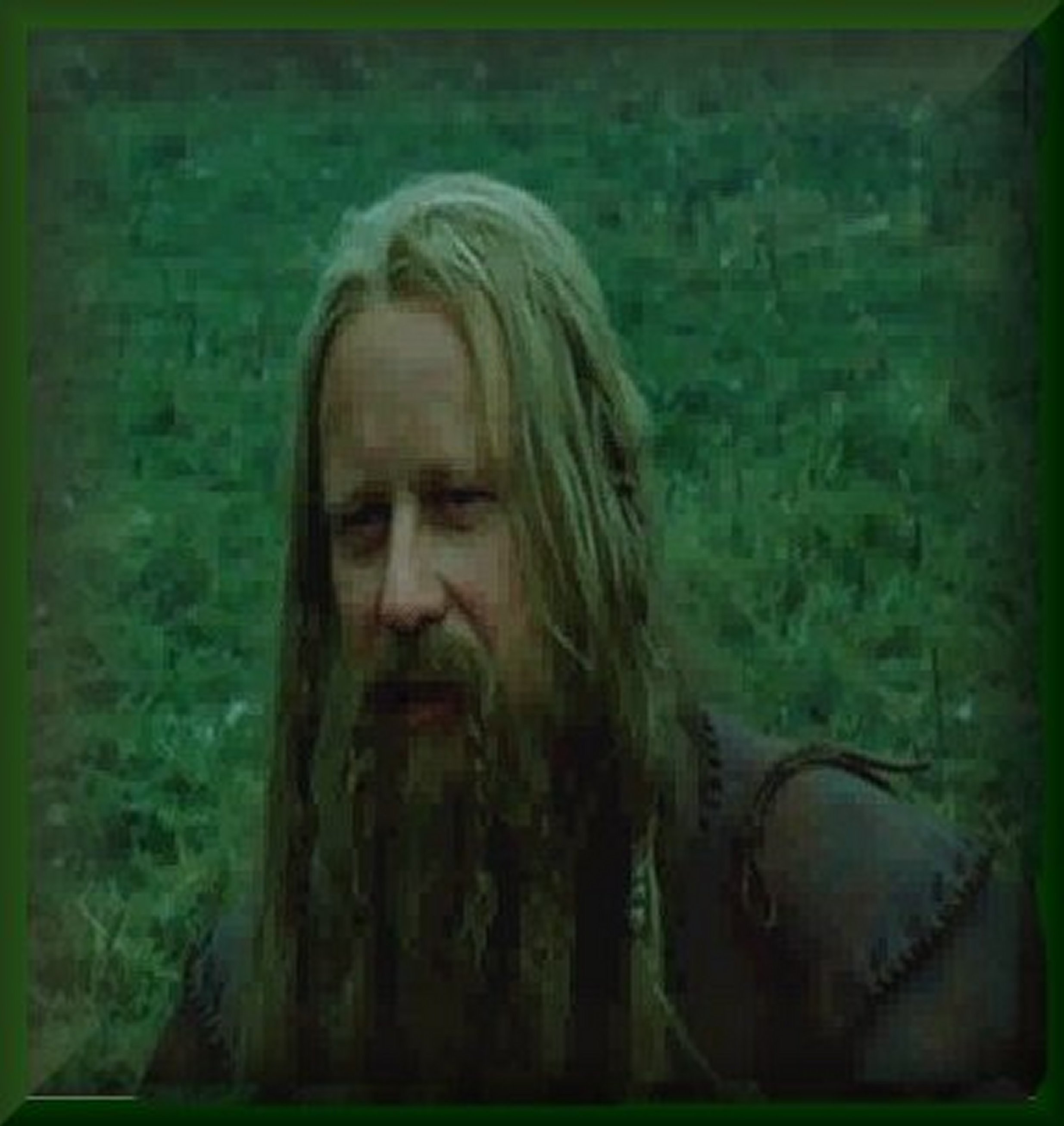
Deowuc the Saxon
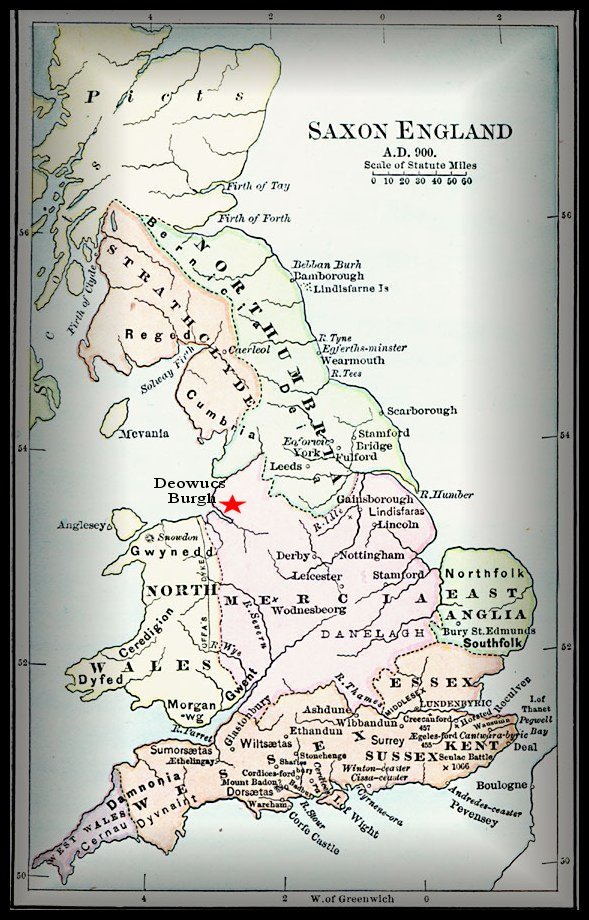
The term Anglo-Saxon refers to settlers from the German regions of Angeln and Saxony, who made their way over to Britain after the fall of the Roman Empire around AD 410.
The Roman armies withdrew from Britain early in the fifth century because they were needed back home to defend the crumbling centre of the Empire. Britain was considered a far-flung outpost of little value.
At this time, the Jutes and the Frisians from Denmark were also settling in the British Isles, but the Anglo-Saxon settlers were effectively their own masters in a new land and they did little to keep the legacy of the Romans alive. They replaced the Roman stone buildings with their own wooden ones, and spoke their own language, which gave rise to the English spoken today.
The Anglo-Saxons also brought their own religious beliefs, but the arrival of Saint Augustine in 597 converted most of the country to Christianity.
The Anglo-Saxon period lasted for 600 years, from 410 to 1066, and in that time Britain’s political landscape underwent many changes.
Most of the information we have about the Anglo-Saxons comes from the Anglo-Saxon Chronicle, a year-by-year account of all the major events of the time. Among other things it describes the rise and fall of the bishops and kings and the important battles of the period. It begins with the story of Hengist and Horsa in AD 449. Anglo-Saxon rule came to an end in 1066, soon after the death of Edward the Confessor, who had no heir. He had willed the kingdom to William Duke of Normandy.
The name Duxbury is derived from Deowuc and his descendents who sold the land at Duxbury to several Standish family members between 1241 - 1523 with the exception of the land upon which Deowuc built his original Burgh There were also several marriages between the Duxbury and Standish families which involved land transfers.
1290. Deowuc the Saxon was the original settler of Duxbury and the builder of the Burgh. Deowuc built his Burgh in the 8th century well before the year 1066 when the Normans arrived in England and made their compilations in the Doomsday Book.
Manorial boundaries came into official state control under statute of Quia Emptores in 1290.
The effect of the statute of Quia Emptores (1290) was to make the creation of manors henceforward impossible, inasmuch as it enacted "that upon all sales and feoffments of land the feoffee shall hold the same, not of his immediate feoffor, but of the chief lord of the fee of whom such feoffor himself held it". The statute did not apply to a tenant-in-chief of the king, who might have alienated his land under a license. Accordingly it is assumed that all existing manors are "of a date prior to the statute of Quia Emptores except perhaps some which may have been created by the king's tenants-in-chief with license from the crown". When a great baron had granted out smaller manors to others, the seignory of the superior baron was frequently termed an honour.
Duxbury Family Deeds
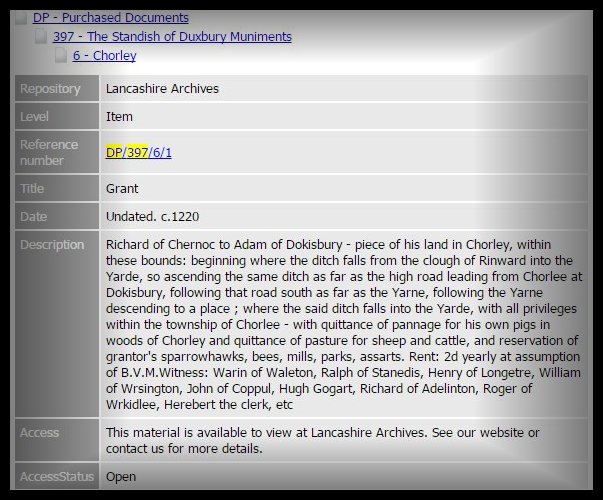
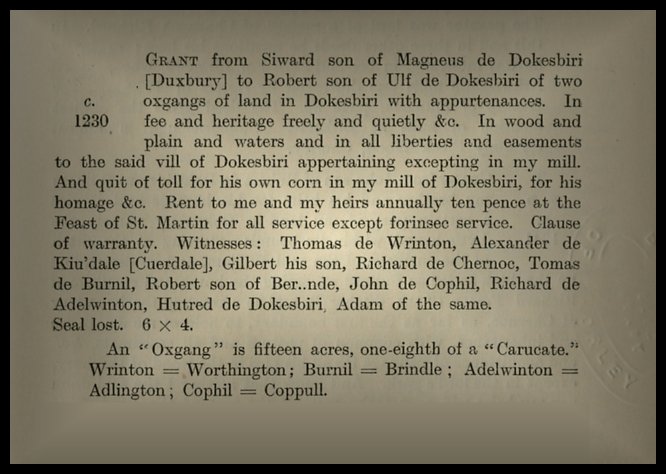

LA 8/21 Grant c. 1304: Henry son of Henry of Dokesburye to Hugh de Haydok de Stanedissh – Plot of meadow in D., namely that which Ralph, s. of Juliana, held of him at will annually and plot of moor, scrub and waste lying between Syokeffeld and the Bothounes, surrounded by wells and ditches; also mess. and plot of land called the Bothounes, with homage etc. of William Spylok, with 2 parts of common wood of D. and 2 parts of river called Yharowe which Margery, daughter of Hugh de Morle(gh?) held for life, which should revert to Henry, to Hugh in remainder, (mill reserved to Henry)Witness: William of Bradshagh, Matthew of Haydok, Henry of Chernok, William of Worthington, John of Copphul, Hugh of Haywood, clerk.
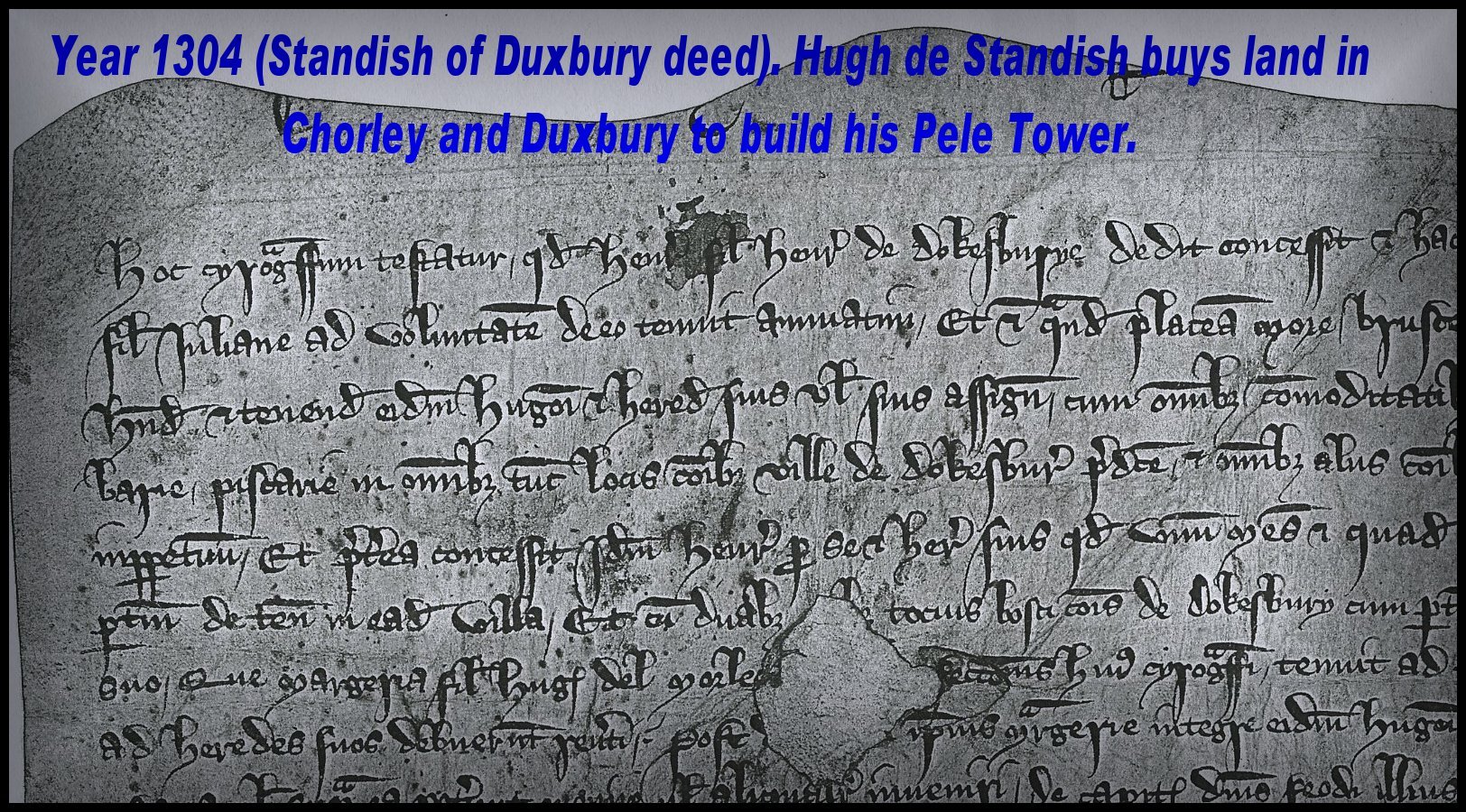
Hugh de Haydock de Stanedissh buys land upon the Manor of Duxbury.
Hugh de Haydock changed his name soon after 1315 to Hugh de Standish using his grandmothers maiden name of Standish.
Hugh de Haydock's descendants became Lords of the Manor of Duxbury in succession to the Duxbury family.
1523: Thomas Duxbury sells the last of the family land upon the Manor of Duxbury.
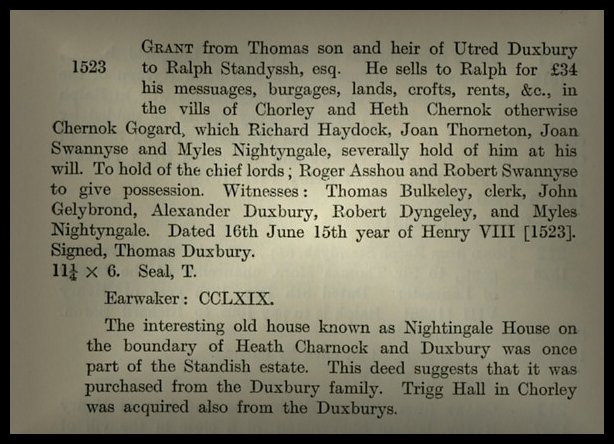
One of the most interesting transfers of Land by the descendents of Deowuc was the gift of the land upon which Deowuc built his original Burgh. This area of land was gifted to the Knights of St. John and the gift was recorded by the Abbots of Cockersands Abbey.
The original area of the Burgh was then contained between four stone crosses to denote the gifted land. One of the original markers remains in situe in the year 2015 minus its head stone. The site became the property of the Crown under King Henry Vlll having been confiscated from the Knights of St. John.
A rental for the site of Deowuc's Burgh was demanded by the Crown and payment was made by James Standish Lord of the Manor of Duxbury. The rental payment is recorded in the Standish Deeds in 1593 and the gifted land in a Duxbury Family deed dated 1260.
Dixbury Family Deed dated 1260 - Knights of St. John
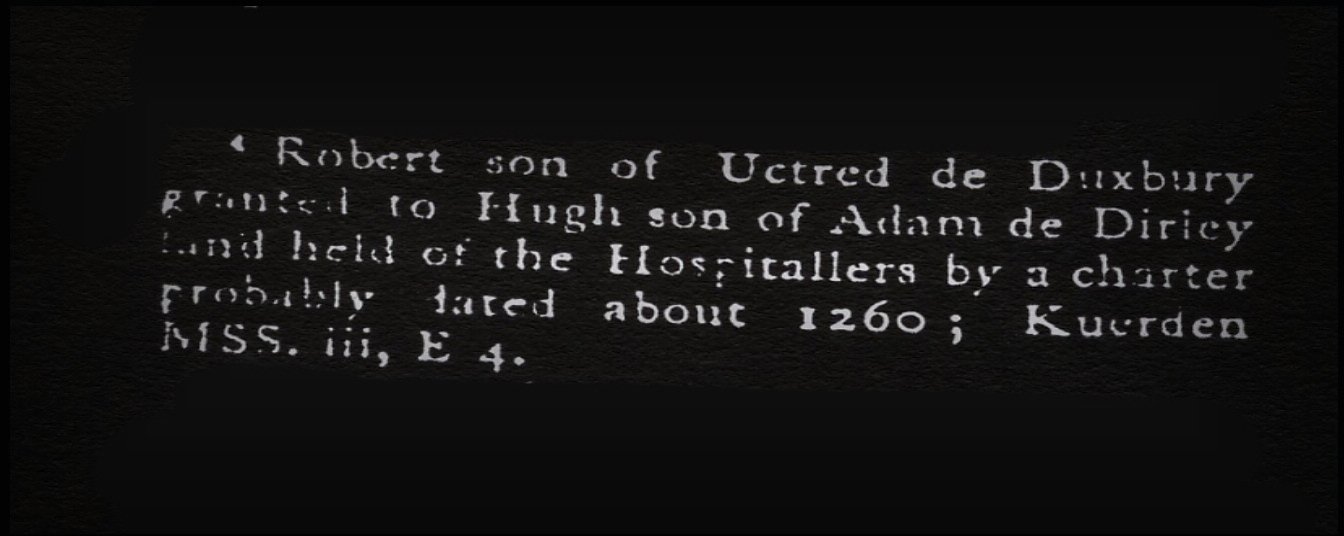
Standish Deed dated 1593 - Knights of St. John
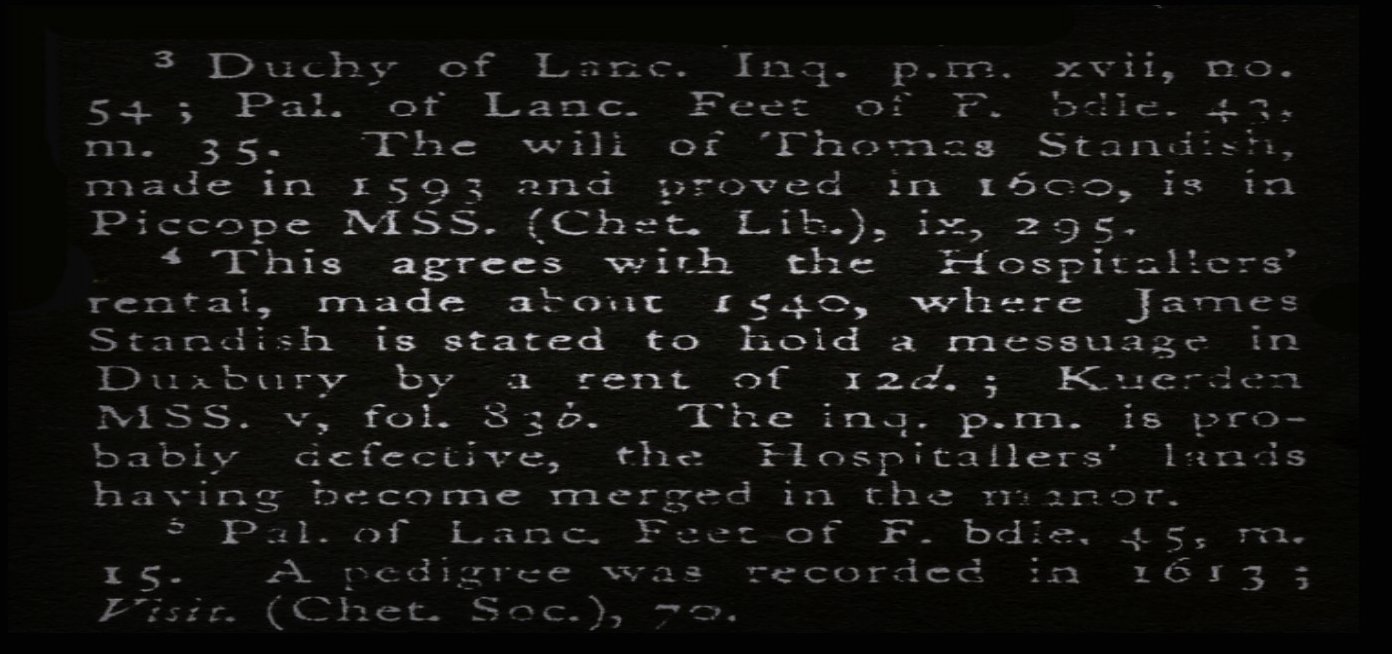
The area of land in Deowuc's Burgh was substantial and predated the Manorial boundaries. When the Manorial boundaries were set the largest area of the Burgh including the defensive and fortified Burgh became part of the Manor of Duxbury. Lower Burgh and other western sections of the Burgh including the site of the Standish Pele Tower became a part of the Manor of Chorley.
The site of the defensive and fortified area of Deowuc's Burgh with the four Crosses of the Knights Templar .
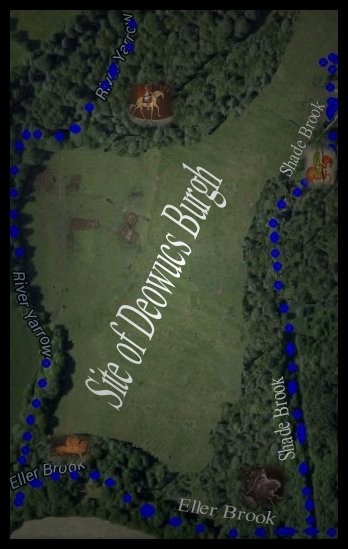
Deowuc’s Burgh had water on three sides with a narrow land access from the North onto the promintory of the Burgh, which stood high above the water level around it "a mini headland".
The Four Crosses of the Knights Templar stood adjacent to the river lines lower than the promintory of the Burgh which stood above them akin to an alter top or possibly the arrangement was more akin to the occult traditions of the Knights Templar.
(Such as the Four Horse Men of the Apocylese guarding a portal to another dimension?)
Knights Templar, the Order of Solomon’s Temple.
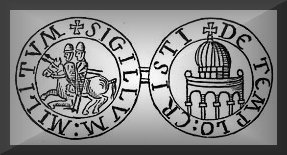
Seal of the Knights Templar
Officially endorsed by the Roman Catholic Church around 1129, the Order became a favoured charity throughout Christendom and grew rapidly in membership and power. Templar knights, in their distinctive white mantles with a red cross, were among the most skilled fighting units of the Crusades. Non-combatant members of the Order managed a large economic infrastructure throughout Christendom, innovating financial techniques that were an early form of banking, and building fortifications across Europe and the Holy Land.
2015. The last remaining cross or horseman of Knights Templar.
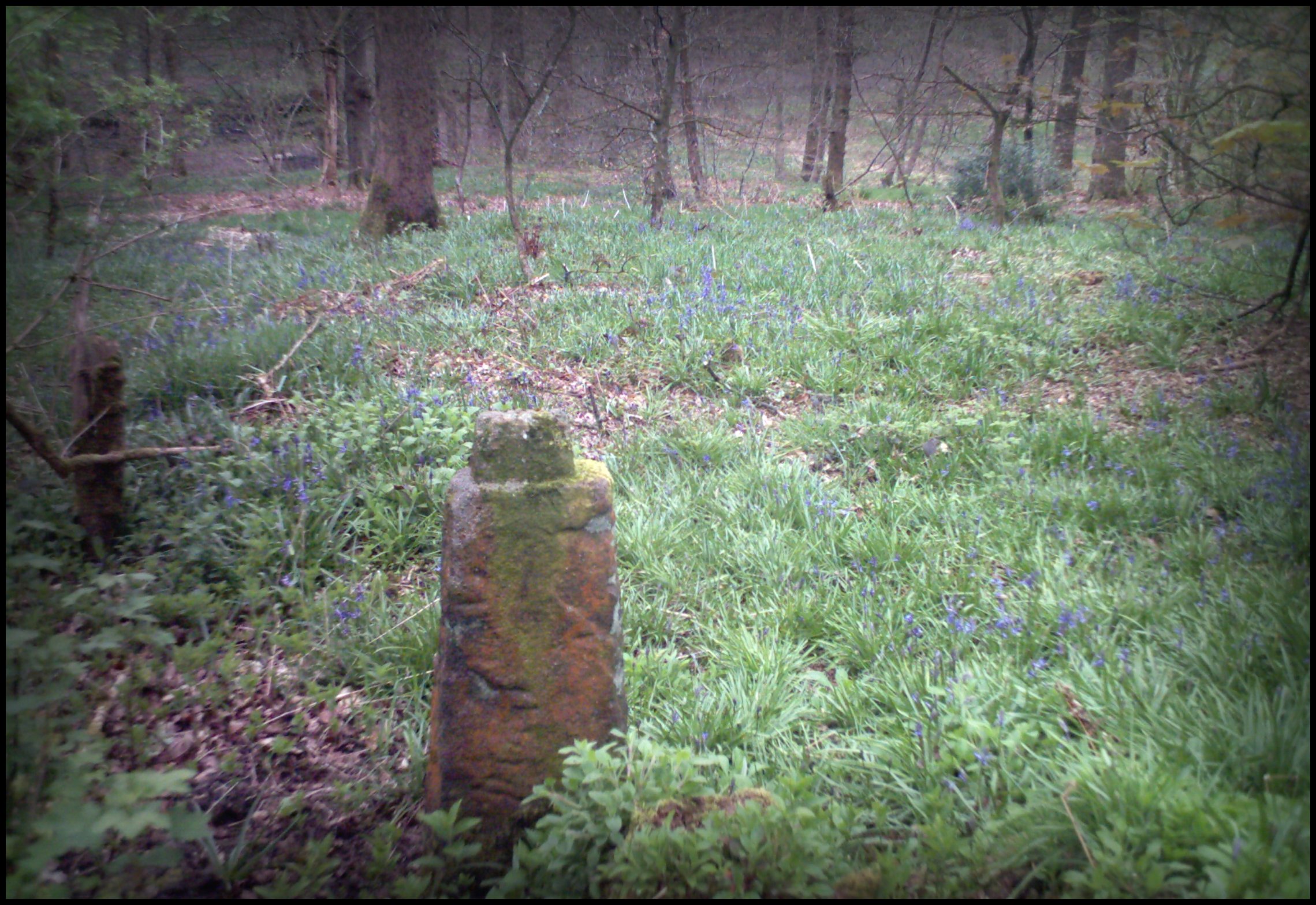
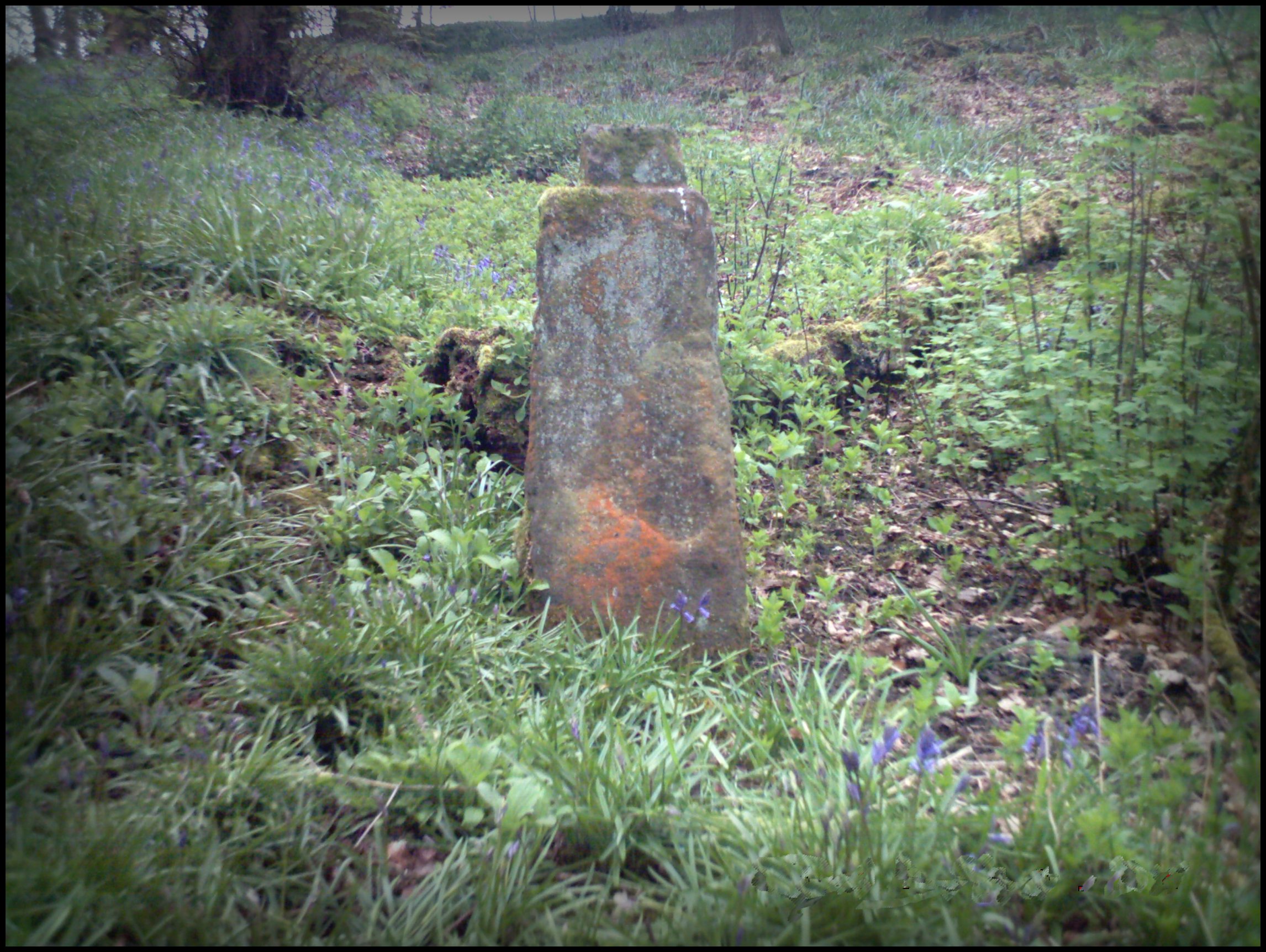
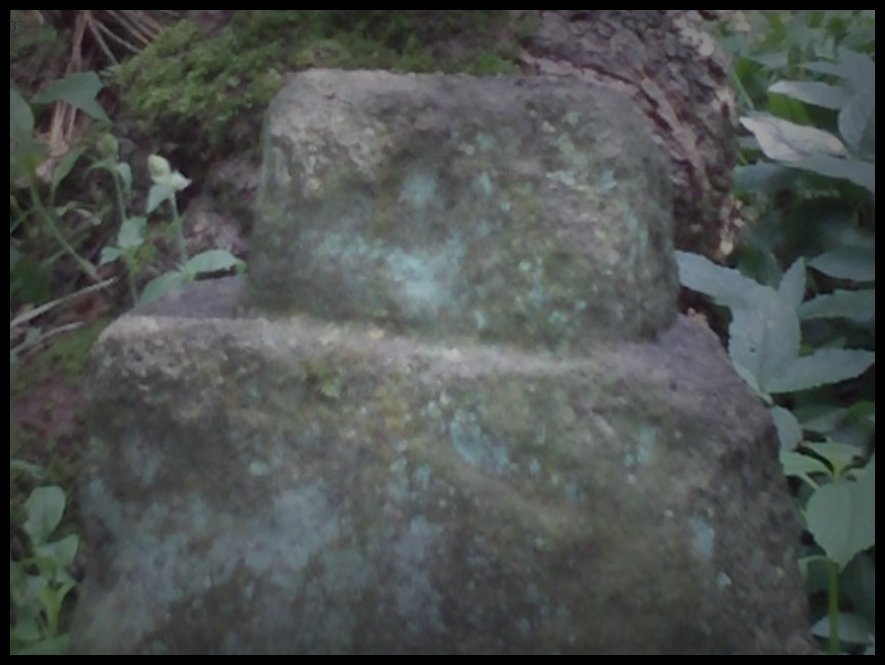


Speed's Map of 1584 showing the site of Deowuc's Burgh.
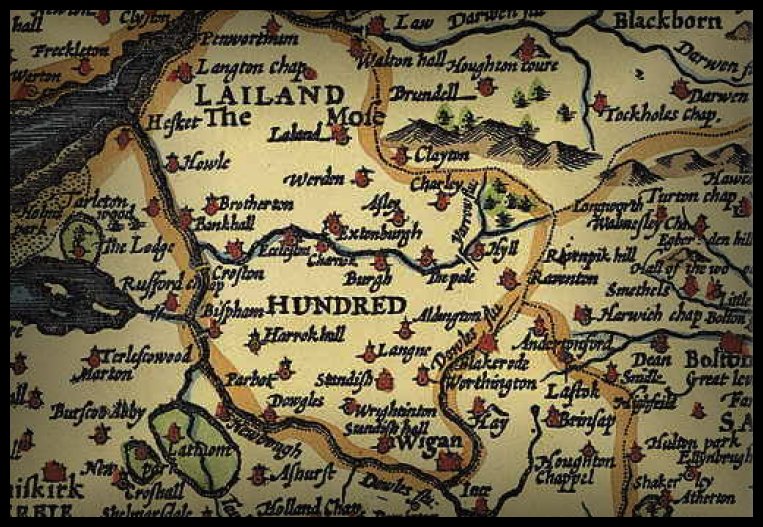
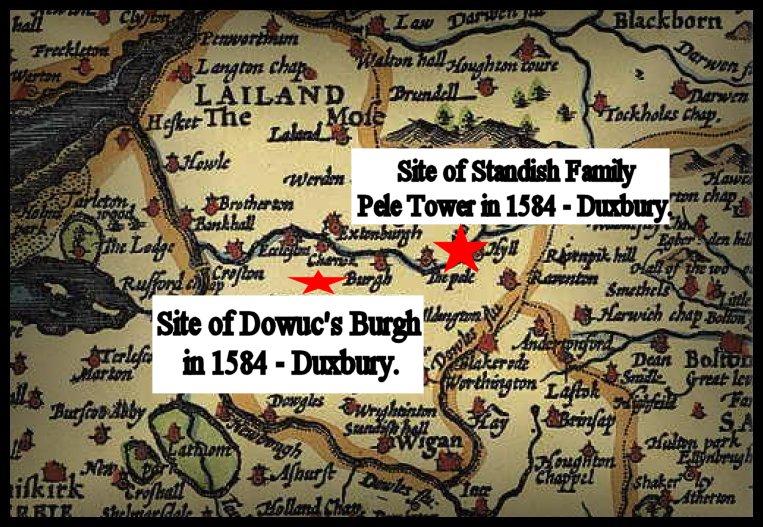
The Anglo-Saxons brought their own Language with them the basic words that gave birth to the English Language.
The English Language being a fusion of Anglo - Saxon and Norman French words.
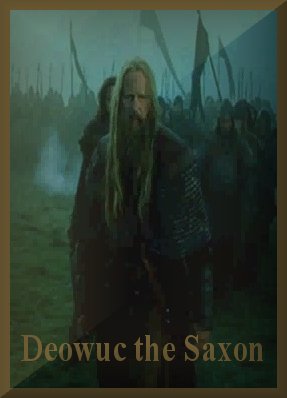
LINK - The Anglo-Saxon Language Study lesson 1.
LINK - The Lords Prayer spoken in the Anglo-Saxon Language.
Link - Manor of Duxbury - Myles Standish - Deowuc the Saxon - Deowuc's Burgh.
![]()
Family number One -- Male line Haydock bloodline and DNA.
1303 to 1647 AD. Hugh de Haydock de Standish to Alexander Standish - Lords of the Manor of Duxbury.
DNA - Female line Standish DNA and Male line Haydock DNA.
If Myles Standish was descended from the Standish family of the Pele Tower the Lords of the Manor of Duxbury 1303 - 1647 his Male bloodline and Dna would be that of the Haydock family.
Thus he would be Myles Haydock not Myles Standish.
The Standish family of the Pele on the Manor of Duxbury are descended from Alicea Standish (sister of Jordan Standish - Lord of the Manor of Standish) and her husband Hugh de Haydock. Their son Robert de Haydock was the Rector of Standish from 1275 to 1301. The Standish family papers from that period of time do not indicate the name of Robert's wife but they do very clearly name his children Hugh – Nicholas – Matilda. The Standish family papers clearly show that the son of Robert de Haydock was Hugh de Haydock who founded the Standish family of the Pele Tower upon the Manor of Duxbury. Hugh de Haydock de Standish dropped the de Haydock from his name in the year 1315 and was known thereafter as Hugh de Standish.
Hugh de Haydock could clearly change his name but NOT his male bloodline and DNA profile.
Standish family deed number 5 dated 1289 identifies Hugh de Haydock.
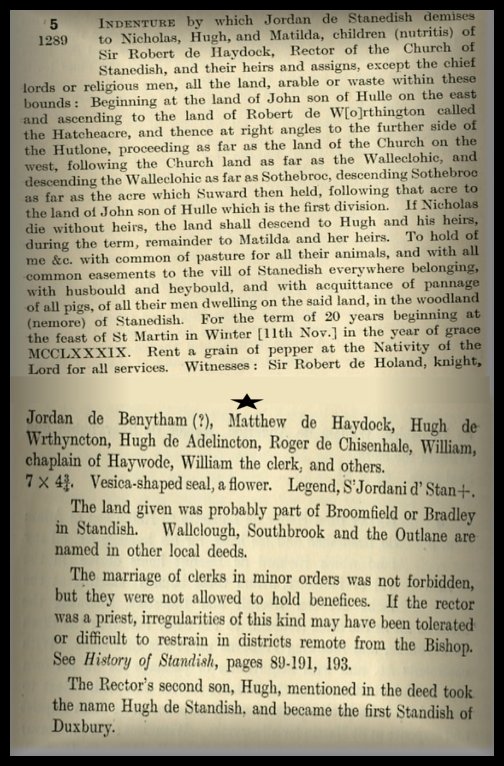
Court record dated 1304 identifies Hugh de Haydock
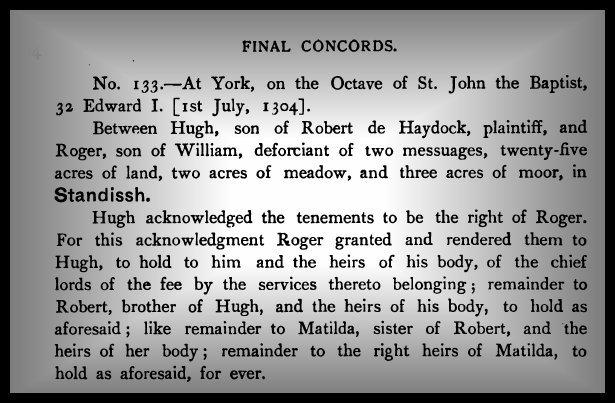
Court record dated 1321 identifies Hugh de Haydock as Hugh de Standish.
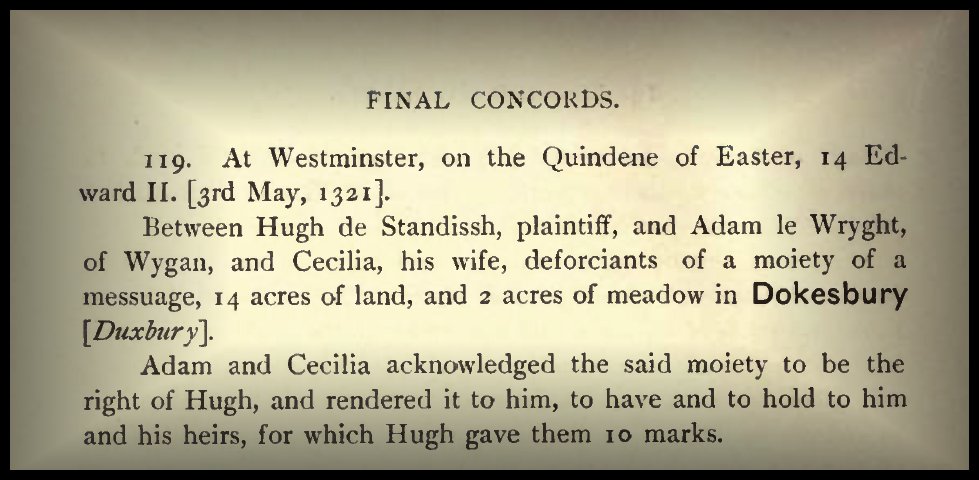
1304.This document is in the name of Hugh de Haydok de Stanedissh.

LA 8/21 Grant c. 1304: Henry son of Henry of Dokesburye to Hugh de Haydok de Stanedissh – Plot of meadow in D., namely that which Ralph, s. of Juliana, held of him at will annually and plot of moor, scrub and waste lying between Syokeffeld and the Bothounes, surrounded by wells and ditches; also mess. and plot of land called the Bothounes, with homage etc. of William Spylok, with 2 parts of common wood of D. and 2 parts of river called Yharowe which Margery, daughter of Hugh de Morle(gh?) held for life, which should revert to Henry, to Hugh in remainder, (mill reserved to Henry)Witness: William of Bradshagh, Matthew of Haydok, Henry of Chernok, William of Worthington, John of Copphul, Hugh of Haywood, clerk.
1319 Lease of Land to allow access to build the Standish Pele Tower.
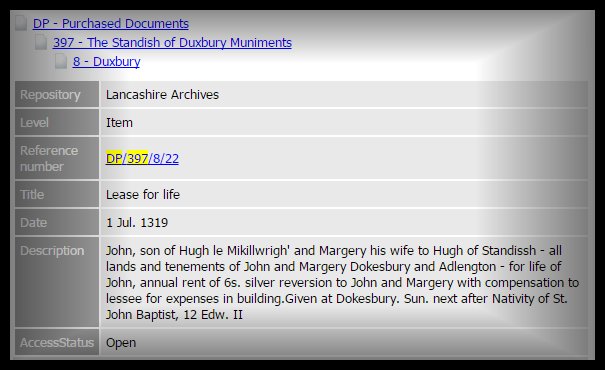
1394, The Manor of Haydock and the Haydock Family.

1644. Alexander Standish the last male of the direct line (1300 to 1644) dies.
As a result of the English civil war the Duxbury Estates were heavily in debt upon the death in 1644 of Alexander Standish the last male of the direct line. Colonel Richard Standish a cousin of Alexander secured his title to the Manor of Duxbury in June 1647.
1647. The legal transfer of the dower of Margaret Standish widow of Alexander Standish in June 1647 contained all of the Duxbury estates and properties owned by the Lords of the Manor of Duxbury. The transfer to a cousin of her husband Colonel Richard Standish also included the vast debts attached to the Duxbury estate. No challenge is documented in the Standish family papers to the legal transfer made by Margaret Standish from any other member of the Standish family. The signature upon this document brought an official end to this male line of the Lords of the Manor of Duxbury from 1300 to 1644.
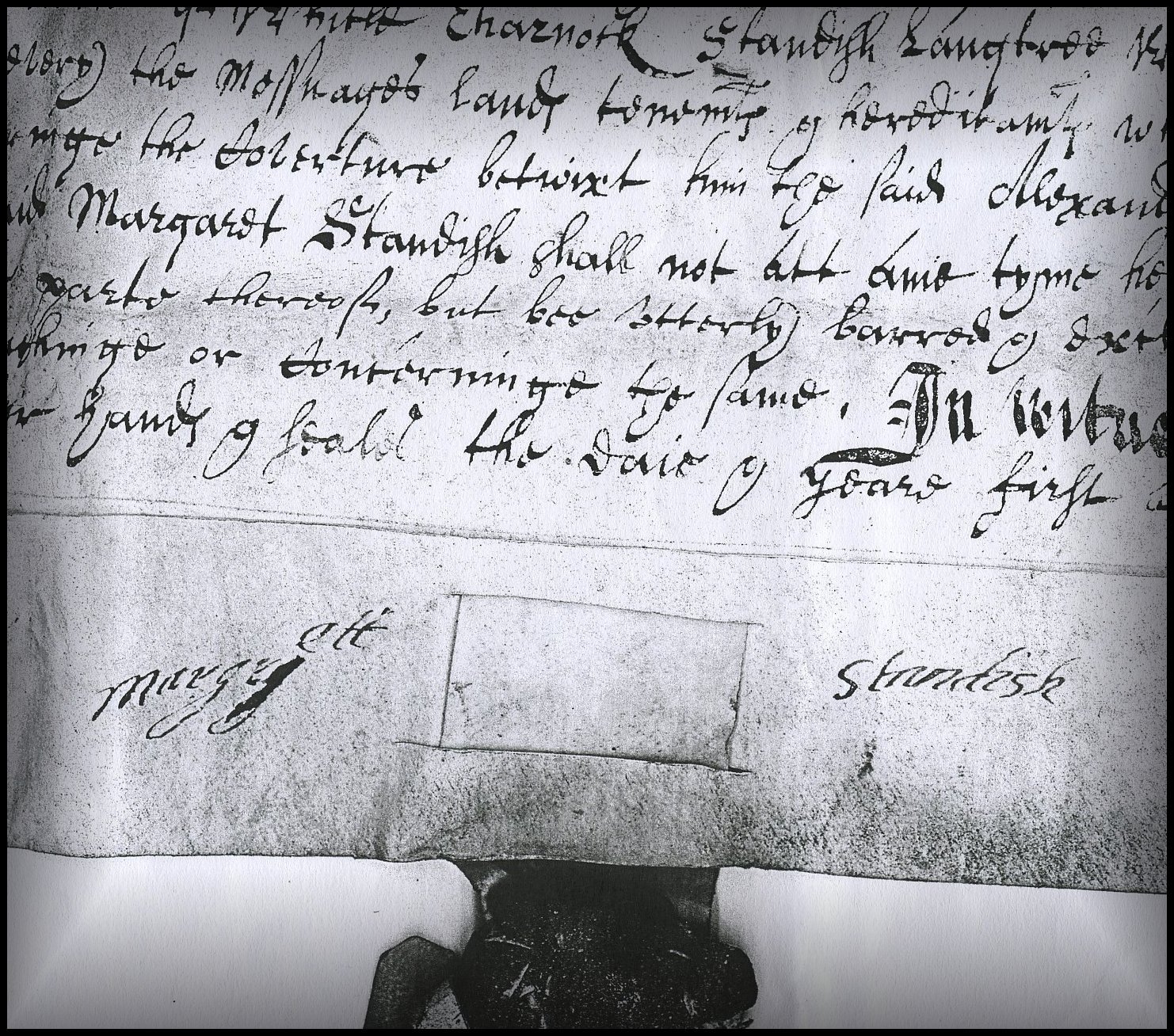
Lancashire Record Office. DP375/21/16 - Margaret Standish 15th June 1647.
Link - The Standish Family of the Pele Tower 1303 to 1647.
![]()
Family number Two -- Male line Haydock bloodline and DNA.
1647 to 1812 AD. Richard Standish to Sir Frank Standish - Lords of the Manor of Duxbury.
DNA - Female line Standish DNA and Male line Haydock DNA.
If Myles Standish was descended from the Standish family of Duxbury Hall the Lords of the Manor of Duxbury 1647 - 1812 his Male bloodline and Dna would be that of the Haydock family.
Thus he would be Myles Haydock not Myles Standish.
1647. Colonel Richard Standish and his wife Elizabeth were the new Lords of the Manor of Duxbury. Legal arrangements in June 1647 with Margaret Standish widow of Alexander Standish had completed the legal transfer.
Colonel Richard Standish married Elizabeth Legh, daughter of Piers Legh, Esquire, of Lyme (eldest son of Sir Peter Legh) by Anne Saville, daughter of Sir John Saville, of Howley, Yorkshire.
Colonel Richard Standish was descended from Hugh de Haydock de Standish who changed his name to Standish and became Lord of the Manor of Duxbury.
Colonel Richard Standish was a cousin of Alexander Standish who died in 1644. Alexander Standish was Lord of the Manor of Duxbury at the date of his death in 1644.
1647 to 1812 Richard Standish to Sir Frank Standish - Lords of the Manor of Duxbury.
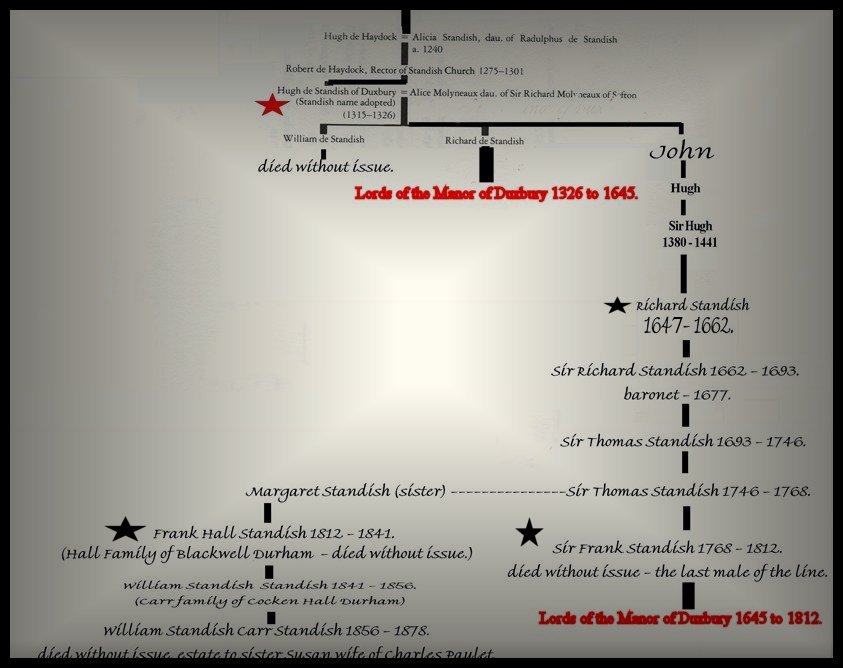
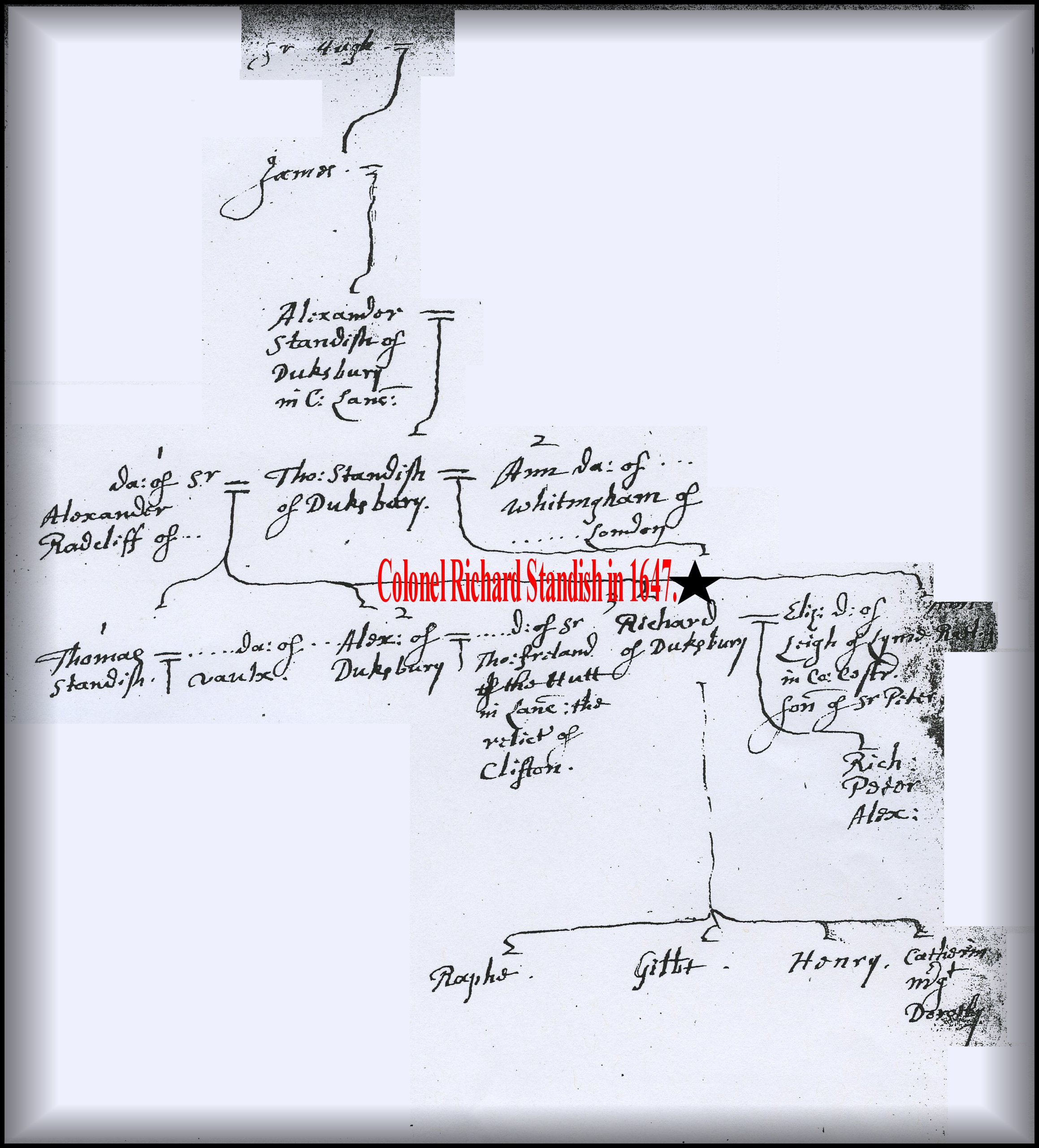
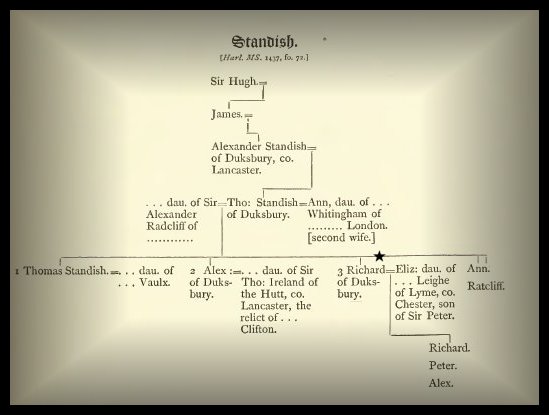
1661. March 6 -14 the deaths of Colonel Richard Standish and his wife.
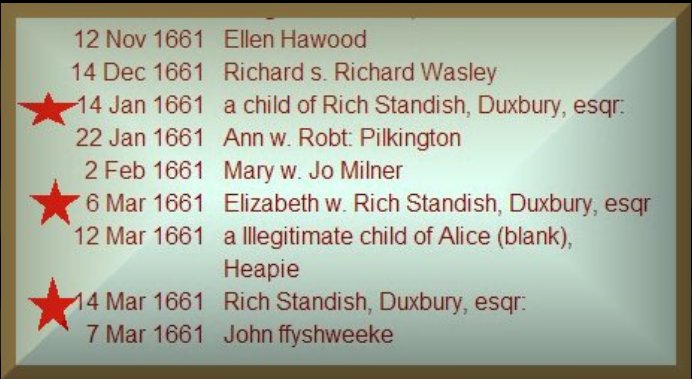
1675. Richard Standish Lord of the Manor of Duxbury.

1676. Sir Richard Standish Lord of the Manor of Duxbury.
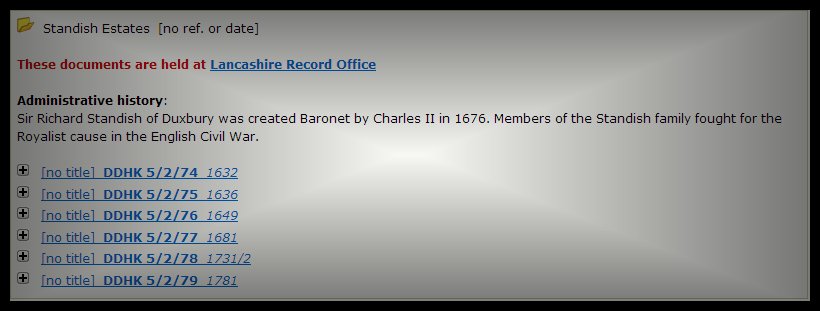
1690. Sir Richard Standish Lord of the Manor of Duxbury.
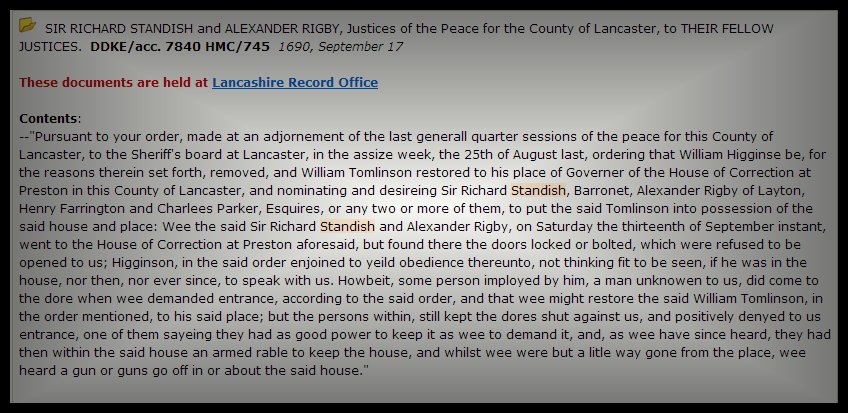
1730. Sir Thomas Standish Lord of the Manor of Duxbury.

1737. Sir Thomas Standish Lord of the Manor of Duxbury.

1784. Sir Frank Standish - from the Gamekeeper at Duxbury Hall.
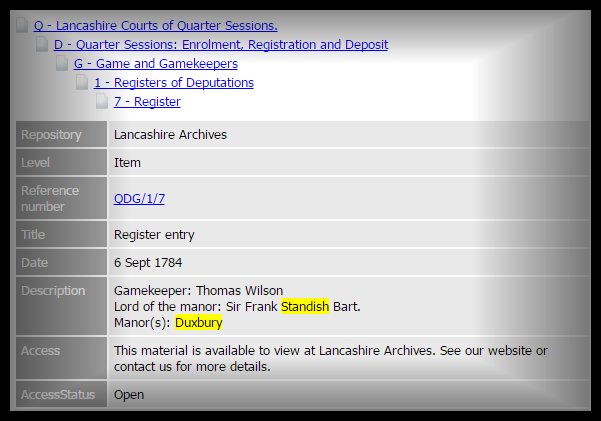
1788. Sir Frank Standish - trouble at Duxbury Hall.
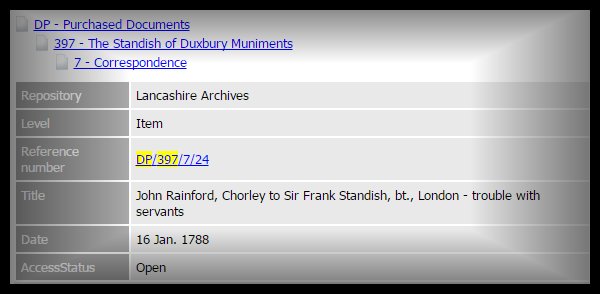
Lancashire Archives.
FILE [no title] - ref. DX 851-861 - date: 1742-1744
[from Scope and Content] Accounts of Thomas Standish of Duxbury.
FILE [no title] - ref. DX 862-910 - date: 1796-1798
[from Scope and Content] Letters & papers
concerning the Standish coal-mines.
1810. Sir Frank Standish

1812. Sir Frank Standish - Death of the last Lord of the Manor of Duxbury. Male Line (Haydock family DNA).
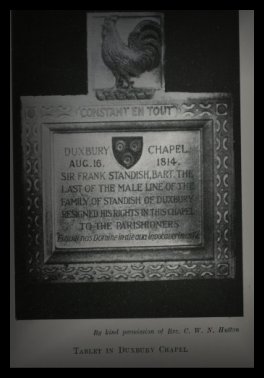
Sir Frank Standish - Notes by John Wilson 1915.
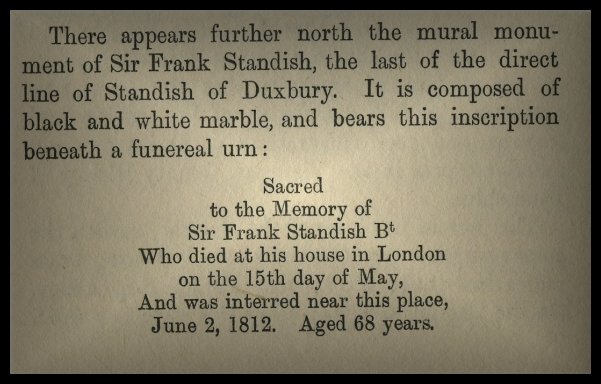
Sir Frank Standish - Monument in the Church of St. Laurence Chorley Lancashire.
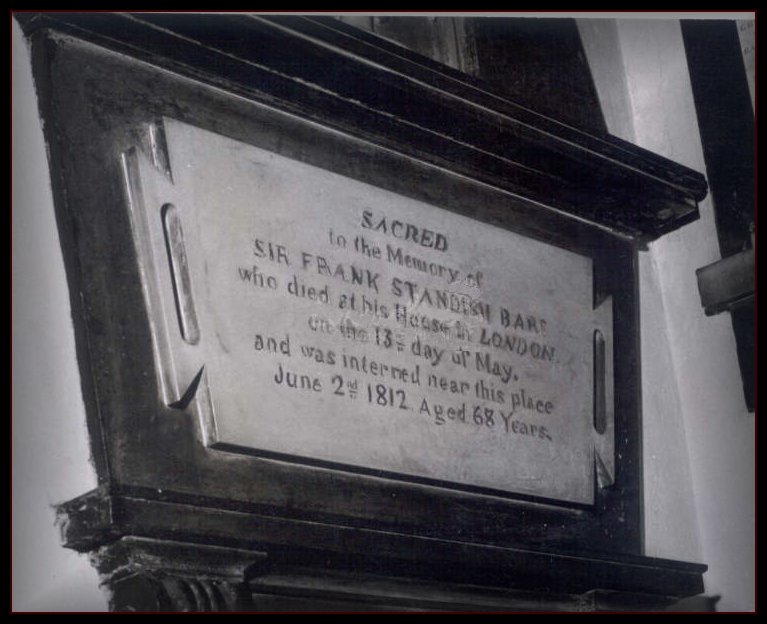
1812. Upon the death in 1812 of Sir Frank Standish (the last male of his line 1647 to 1812) the Lordship of the Manor descended to the Female Line.
![]()
Gamekeepers Cottage at Duxbury Hall.
Gamekeepers Cottage, built by Sir Frank Standish in 1795.
1830. Frank Hall Standish - from the Gamekeeper at Duxbury Hall.
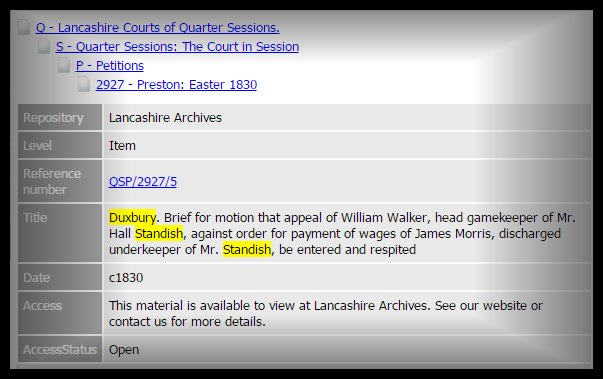
1863. Carr - Standish - from the Gamekeeper at Duxbury Hall.
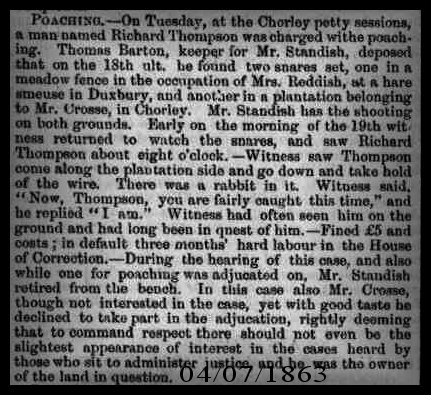
1940. Gamekeeper Cottage at Duxbury Hall.
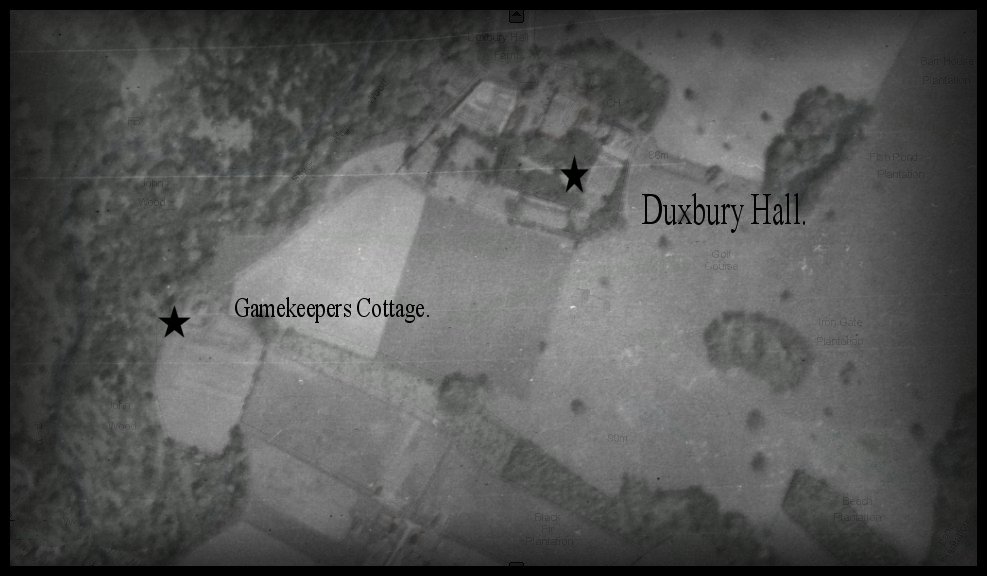
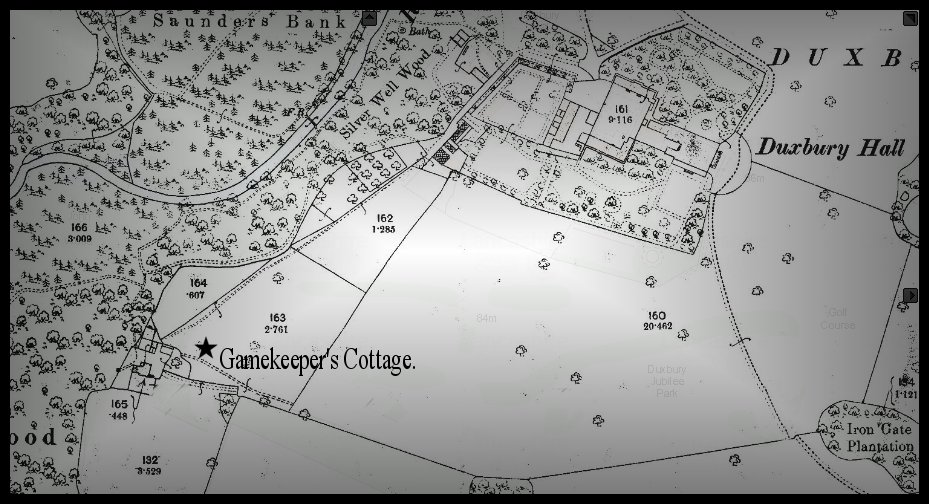
2015. Remains of the Gamekeepers Cottage at Duxbury Hall.
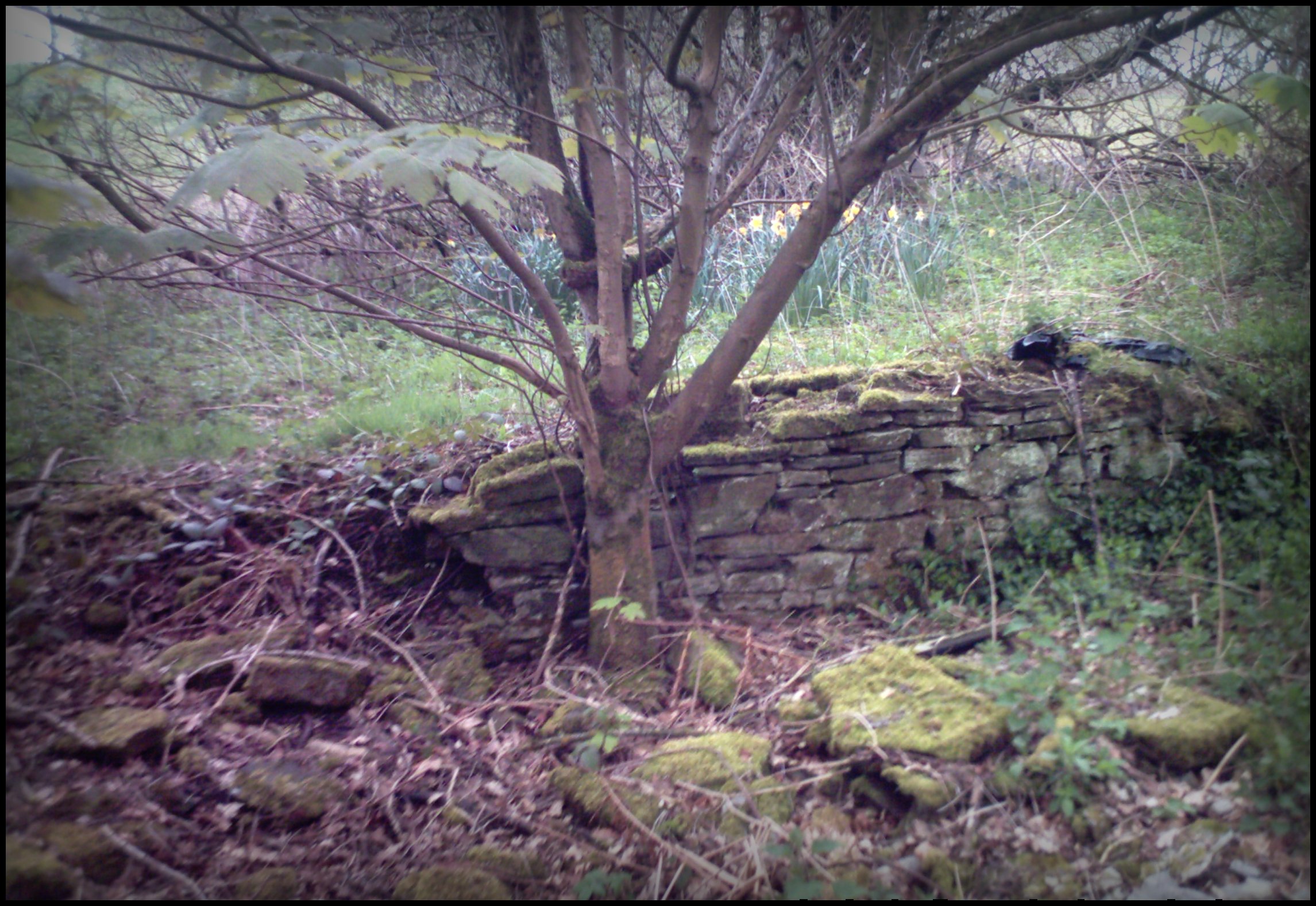
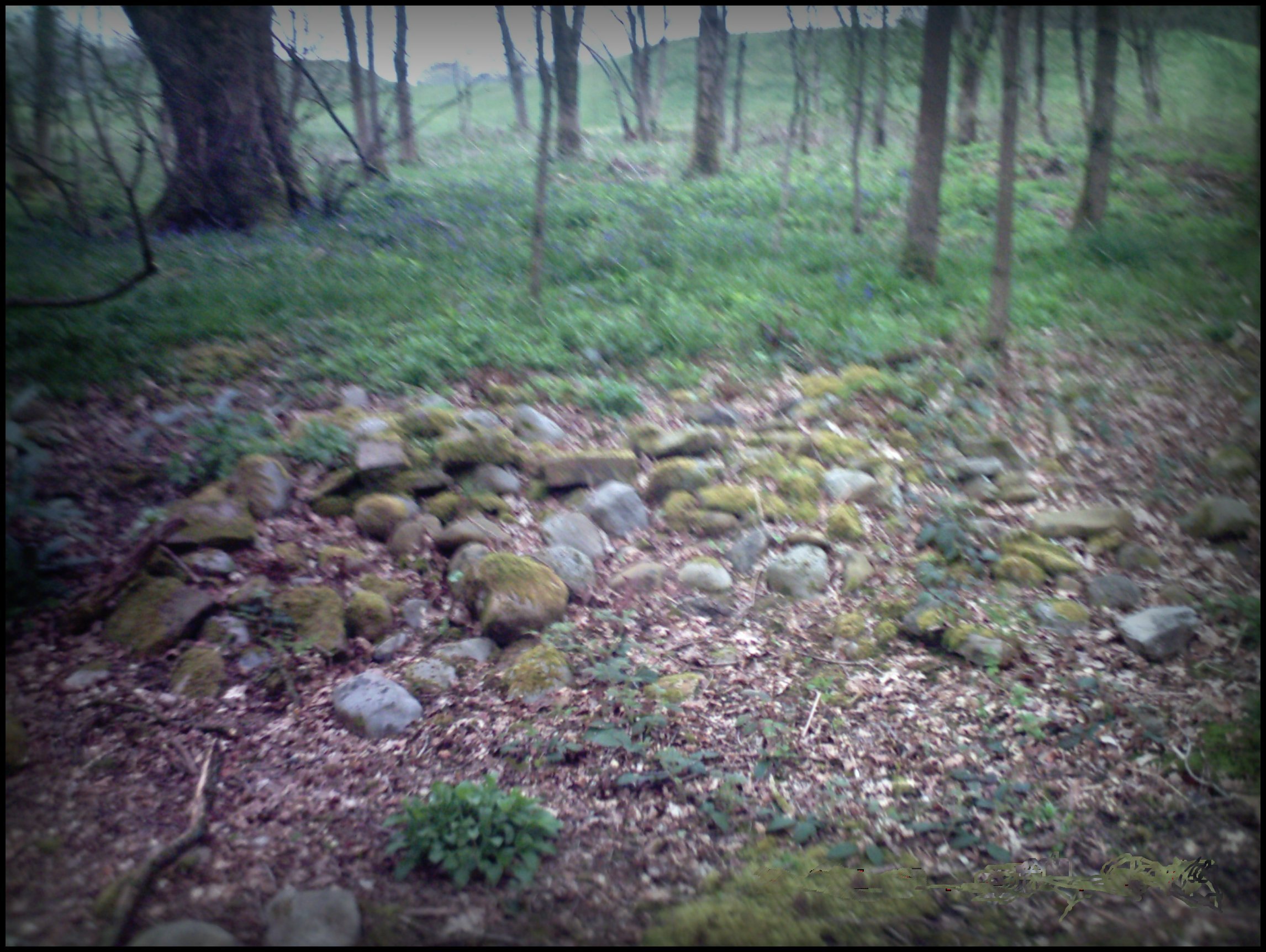
2015. Remains of the Gamekeepers Cottage including the kitchen sink!
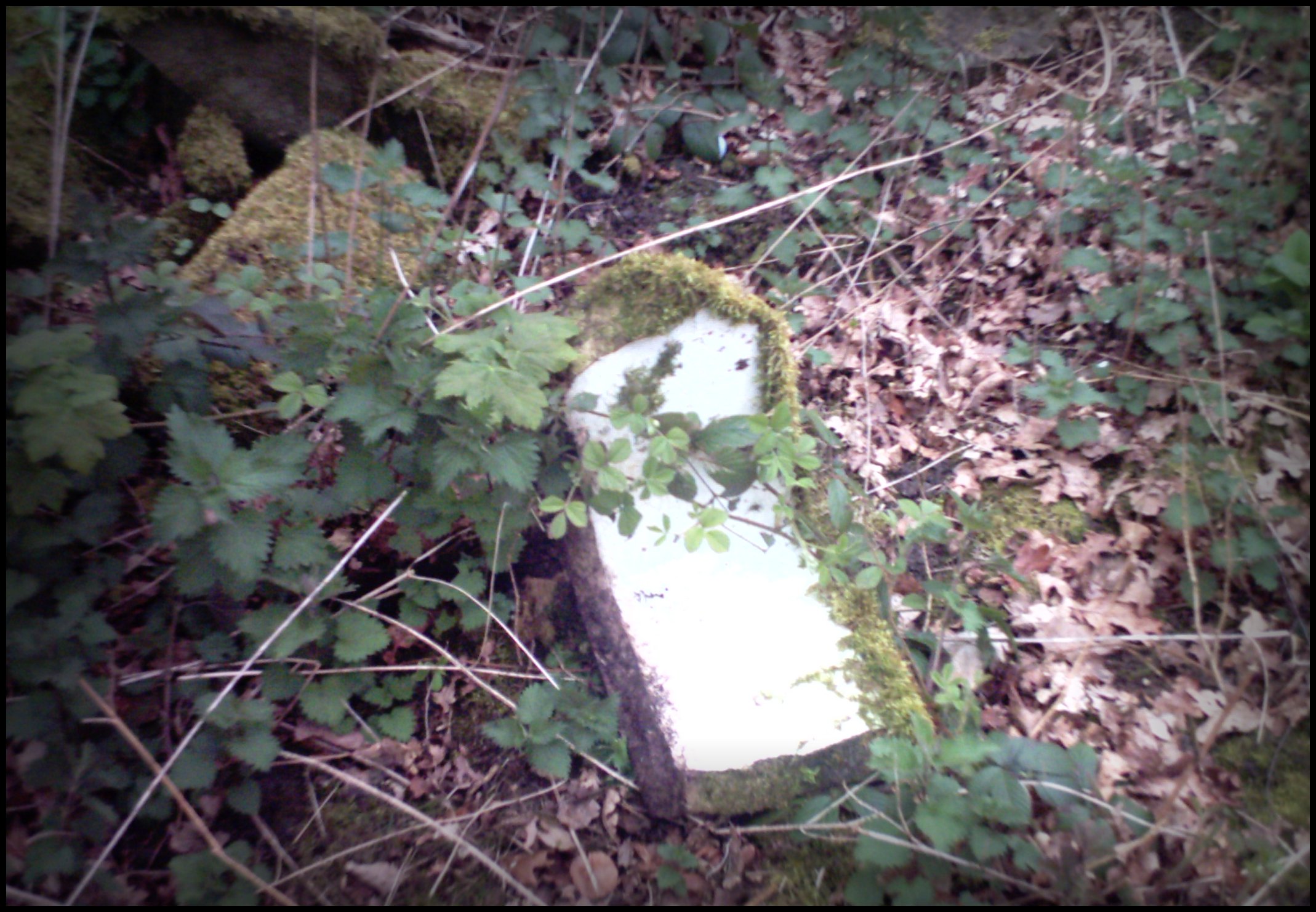
Link - The Standish Family Duxbury Hall of Duxbury 1647 to 1812.
![]()
Family number Three -- Male line Standish of Standish bloodline and DNA.
1490 to 1771 AD. Thurstan Standish of the Burgh upon the Manor of Duxbury.
DNA.
This branch of the Standish Family have a Male main line Standish of Standish Bloodline and DNA.
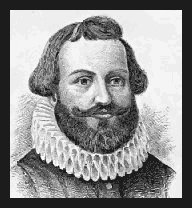

If Myles Standish was the son of Alexander Standish or his brother James who were the sons of Alexander Standish and his wife Eleanor Stanley, the great grandfather of Myles Standish would be Thurston Standish of the Burgh upon Duxbury Manor, the second son of Sir Alexander Standish Lord of the Manor of Standish 1468 to 1507. The Standish family of the Burgh were a very devout Catholic Family.
Myles Standish would thus have had a devout Catholic childhood.
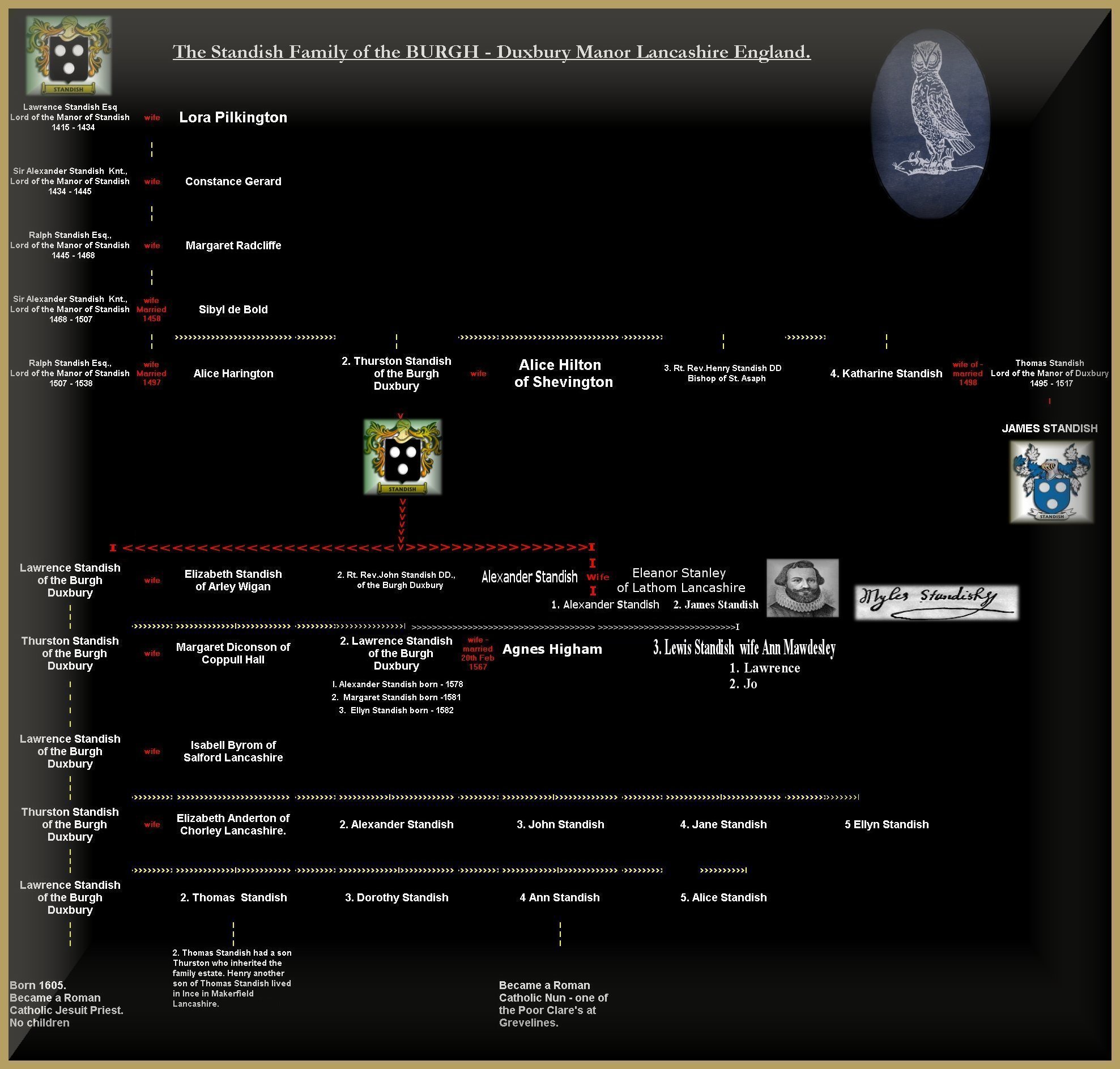
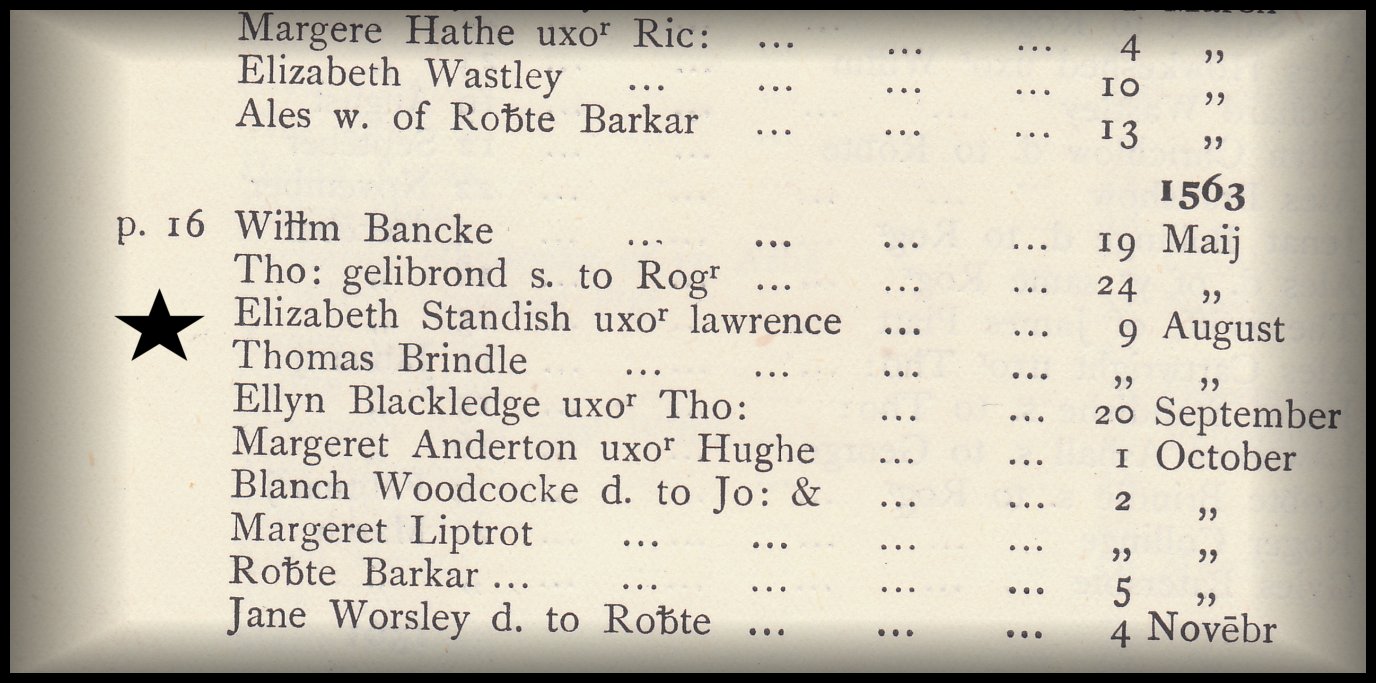
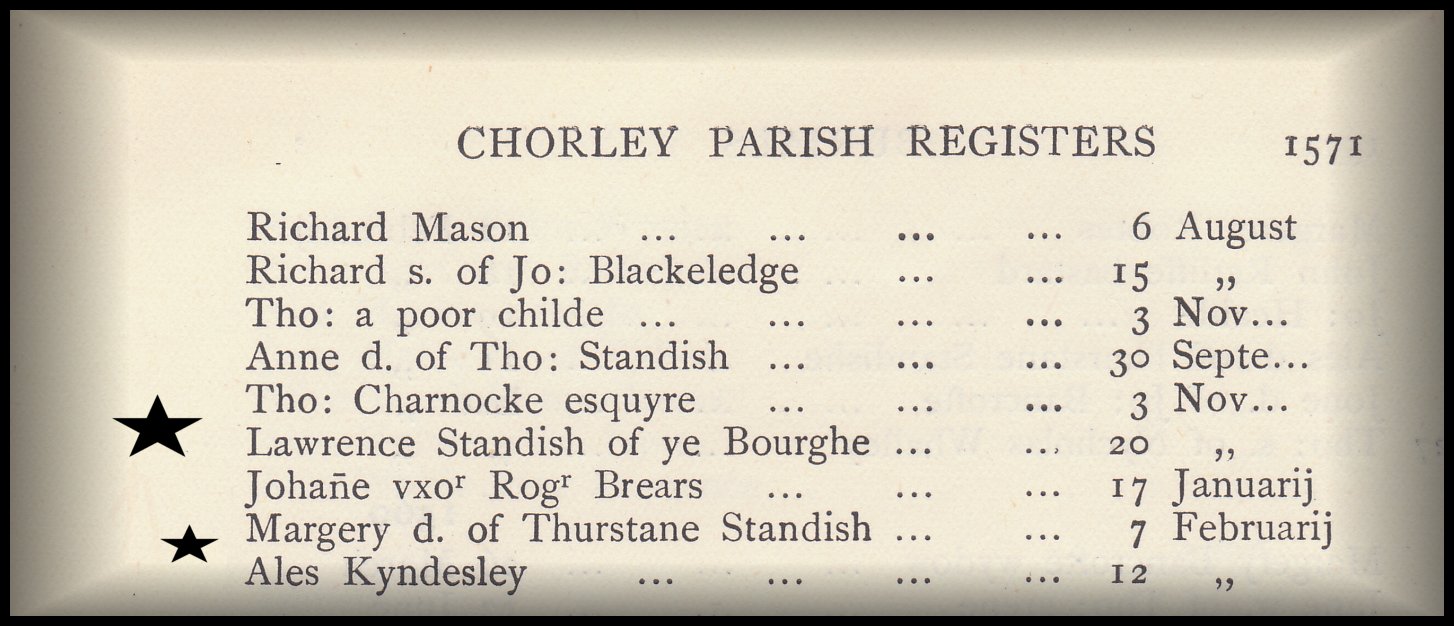
1584. MYLES STANDISH.
As a young man Myles was commissioned to fight in the Netherlands. On his return to England he was hired by the Merchant Adventurers to sail with the Pilgrims in the Mayflower. He was with the first landing party to step ashore after they cast anchor on November 11th, 1620, in the Bay of Cape Cod. He acted as the commander of the exploring parties, and rallied the pilgrims to counter the first attack by Indians on December 8th, 1620.
On December 19th, the settlers selected a site for their colony to which they gave the name New Plymouth, but the next few months were to be a time of terrible hardship. One hundred and one persons came ashore, but by Christmas 1620 there were so many sick or dead that only about half-a-dozen were left capable of self-help. It was at this time that Myles lost his wife, Rose Standish. These few had to tend the sick, make fires, cook, wash and feed the others. A later account says that all this was done 'without any growling in the least' by 'William Brewster, their Reverend Elder, and Myles Standish, their Captain and military commander'.
Myles continued his exploits as the colony prospered. In 1662 he successfully led a rescue mission to Weymouth, which was under Indian attack. In 1628 he put down a minor rebellion by break away Settlers and in 1635 led an attack on French Traders who were intent on taking land from the colony. As late as 1653 he was called upon, at the age of 70, to command the fighting volunteers of the colony against a threatened Dutch invasion.
Myles died on October 3rd, 1656, at Duxbury a settlement he had himself founded on the north side of Plymouth Bay in 1632. It is at this point in the story that the Standish connection re-appears. In his will Myles says:
"I give unto my son and heir apparent, Alexander Standish, all my lands as heir apparent by lawful descent in Ormistic (Ormskirk?), Buuscough (Burscough?), Wrightington, Maudsley, Newbarrow (Newbrough?), Cranston (Croston?), and the Isle of Man, and given to me as right heir by lawful descent, but surreptitiously detained from me, "my grandfather being a second or younger brother from the house of Standish of Standish."
Thurstan Standish "a second or younger brother from the house of Standish of Standish."
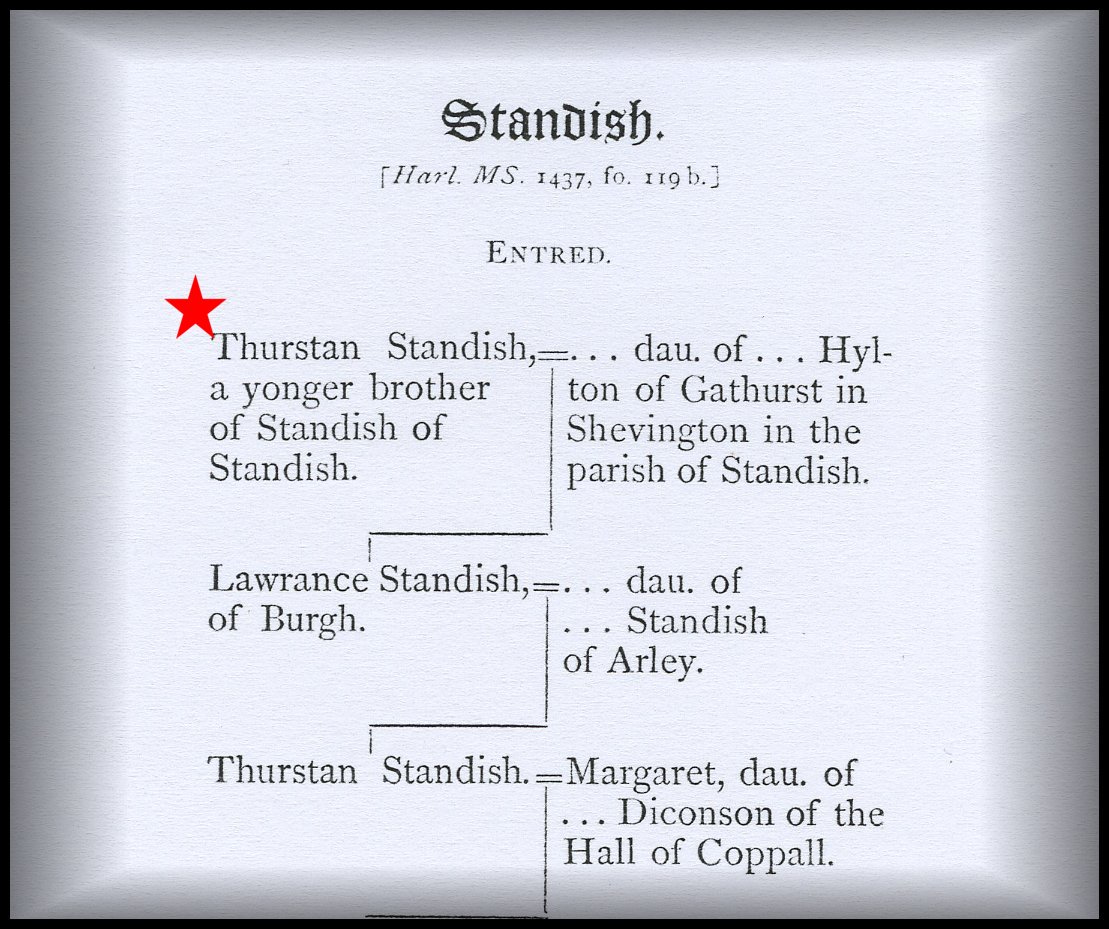
The last member of the Standish family of Lower Burgh Hall Hugh Standish died and was buried January 27th 1702.
Of the last members of the Standish family of Lower Burgh Hall one of the sons (the Eldest) was a Roman Catholic Priests and one daughter a Roman Catholic nun. Two other daughters were unmarried.
The second son Thomas inherited the Burgh Estate and had two sons Thurstan and Henry.
Hugh Standish son and heir of Thurstan was the last male of the line and was buried January 27th 1702.
Upon the death of Hugh Standish Lower Burgh Hall and lands were sold to the Crooke family of Coppull.
In 1655 Thomas Standish of the Burgh, father of Thurstan and Henry, owned the family pew in the Church of St. Laurence.
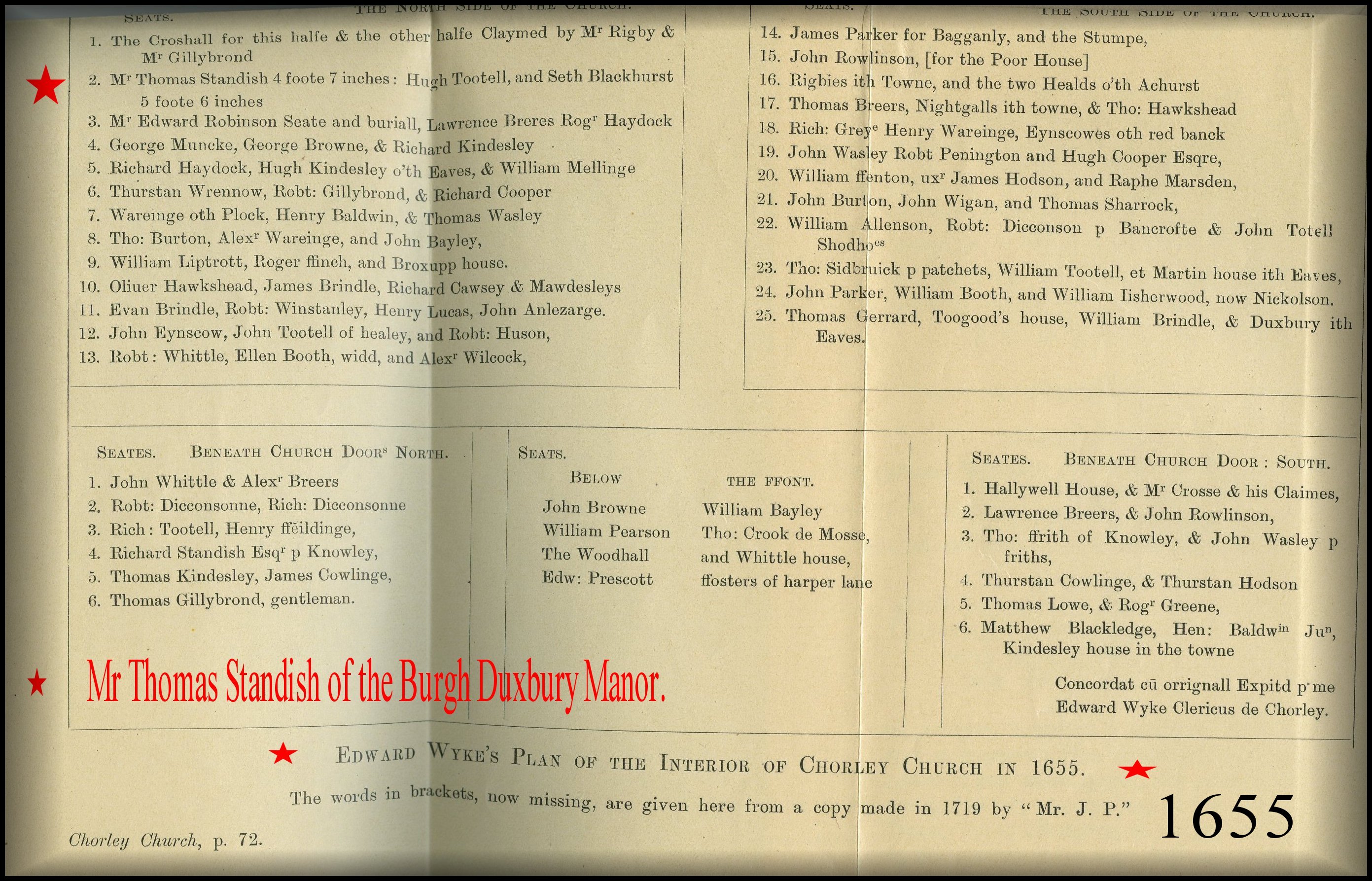
The Standish family of the Burgh upon the Manor of Duxbury had their own seat in the Church of St Laurence Chorley Lancashire. The family pew was located at the front of the Church indicating the importance and high ranking of this branch of the Standish Family.
The Standish family of the Burgh did not use the Standish pew of their cousins the Standish family of the Pele tower at Duxbury.
Lawrence Standish of the Burgh was buried at the Church of St. Laurence in 1571 but he was not be buried in the official Standish vault under the main Alter. The Standish family of the Burgh had a separate family vault located under the floor of the old church close to their family seat. This was inline with the burial vaults of other important local families of the parish.
Thus if Myles Standish did have Standish of Standish DNA as his Will indicates he must have the same DNA profile as Lawrence Standish of the Burgh who was buried at the Church of St. Laurence in 1571 for him to be born at Duxbury / Chorley in 1584. Myles Standish would then equally have a perfect DNA profile match with the DNA profile of those Standish family members buried in the Standish vault of the Church of St. Wilfrid at Standish Lancashire.
Should Myles Standish be the great grandson of Thurstan Standish of Lower Burgh Hall then the descendants of Myles in the United States of America are a branch of the Standish Family of Lower Burgh Hall, Duxbury, England and thus have a House of Standish of Standish bloodline / DNA.
The bloodline of the descendants of Myles Standish in the United States of America would also include a dash of the Royal bloodline of the Dukes of Normandy in France.
1319 Construction of a Peel Tower at Duxbury by Hugh de Haydock de Standish.
1355 Richard son of Hugh de Standish of Duxbury is the owner of land at Croston known as the Isle of Man.
1434 James Standish Esquire of Duxbury presents the skull of St. Lawrence to the church of St Lawrence at Chorley. His brother Sir Rowland Standish who was knighted at Agincourt brought the skull from Normandy France to Duxbury.
1482 Sir Christopher Standish of Duxbury knighted at Hutton field.
1487 Thurstan Standish second son of Sir Alexander Standish Lord of the Manor of Standish takes up residence on land at Burgh upon the Manor of Duxbury that his father Sir Alexander Standish had acquired from his cousin Peter Standish of Arley Hall, Blackrod in the year 1465.
1497 Thomas Standish son of Sir Christopher Standish Lord of the Manor of Duxbury marries Katherine Standish daughter of Sir Alexander Standish Lord of the Manor of Standish and sister of Thurstan Standish of the Burgh upon the Manor of Duxbury.
1567 Alexander son of Thomas Standish Esquire was born at Duxbury.
1584 BIRTH of MYLES STANDISH.
1600 Alexander Standish son of Thomas Standish of Duxbury (Haydock Male Line DNA) becomes the Lord of the Manor of Duxbury on the death of his father Thomas. Alexander married Margaret daughter of Sir Ralph Assherton of Whalley Abbey and changed his religion to that of his new wife. Alexander of Duxbury was the first Puritan Standish. Alexander commissioned the building of the Standish Pew in the church of St Laurence that incorporates the Arms of the Standish Family with the Arms of his wife’s family above the family pew. Alexander Standish died in 1622 and was buried with his wife in the Church of St Laurence.
1620 Mayflower sails to America and arrives in the bay of Cape Cod on November 11th 1620. Myles Standish stands on Plymouth Rock.
1630 Myles Standish names his land in Massachusetts America – DUXBURY.
1655 March 7th Myles Standish makes his WILL.
1642 to 1647 the English Civil War resulted in the last direct line Male descendant of Sir Christopher Standish of Duxbury (who was knighted at Hutton field in 1482) Alexander being killed in battle. The Duxbury Estates pass to a cousin Parliamentarian and Roundhead Colonel Richard Standish the new Lord of the Manor of Duxbury (Haydock Male Line DNA).
1584. The Manor of Duxbury.
Who had a "Standish of Standish" blood line at the date of the birth of Myles Standish?
In 1584 Thurstan Standish of the Burgh upon the Manor of Duxbury and his descendants were the only residents with a STANDISH of STANDISH bloodline and DNA.
1315 to 1812. Pele Tower and Hall of the Manor of Duxbury .
The Standish Family deeds clearly show that there is no Standish of Standish Male line DNA in the Standish burial vault in the Church of St Laurence Chorley Lancashire.
This incorrectly named "Standish vault" should be renamed as the burial vault of Haydock Family.
This family were Haydock of Standish their origin being Haydock of Haydock.
Their vault only contains male line DNA from the Haydock family.
Anyone researching a family connection between Myles Standish his great grandfather and any descendant of Hugh de Haydock de Standish from the Pele Tower and Hall of the Manor of Duxbury ( 1315 - 1812) are researching to prove that Myles Standish did not have a Standish of Standish Male blood line and DNA.
Such research would seek to prove that the Will of Myles Standish was incorrect regarding the statement made by Myles that his great grandfather was descended from "Standish of Standish" and thus had a Standish Male blood line / DNA.
Consequently Myles Standish would if descended from the line of Hugh de Haydock de Standish be Myles Haydock with a Male blood line and DNA from the Haydock of Standish (Haydock of Haydock) family.
1289. Hugh de Haydock de Standish of Duxbury.
The Standish Deeds clearly indicate that Hugh de Haydock was the son of Robert de Haydock the Rector of Standish.
Robert’s father was Hugh de Haydock and Alicia Standish was his mother.
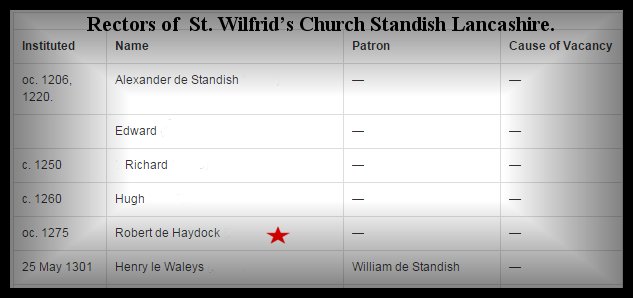
Robert de Haydock did not have a bloodline and DNA profile from the Male line of Standish of Standish.
Hugh de Haydock’s and his father Robert had a bloodline and DNA profile from the Male line of Haydock of Haydock.
Standish family deed number 5 dated 1289 identifies Hugh de Haydock.

The Standish Deeds refer to Hugh de Haydock in his childhood as the son of Robert de Haydock Rector of Standish, they then refer to him in his teenage years as Hugh de Haydock de Standish.
1303. Hugh de Haydock de Standish purchased land in Duxbury in the year 1303 and constructed a Pele tower upon it. From 1315 the Standish of Duxbury deeds refer to him as Hugh de Standish. Hugh de Haydock had dropped his family surname of Haydock and adopted his grandmother’s maiden name of Standish. Hugh Standish then passed on his new surname to his descendants who became Lords of the Manor of Duxbury and from 1300 to 1620 lived in the Pele Tower at Duxbury. In 1620 and 1820 they built the first and second Duxbury Halls. The last male of the line to be passed the Standish surname from Hugh was Sir Frank Standish who died in 1812. Hugh passed the surname Standish to all his descendants right down to the year 1812, but he also passed to those descendants his DNA profile from the Male line of Haydock of Haydock a denominator that Hugh could not change.
Among Kuerden’s abstracts are several referring to Hugh son of Robert de Haydock, Rector of Standish, and the identity of Hugh de Haydock and Hugh de Standish is established by grants from Robert son of William de Worthington to Hugh de Haydock in 1299, by Hugh de Haydock to William son of William de Worthington and Mabel his wife in the same year, and by William son of William de Worthington to Hugh de Standish of ‘what he held of him’ in 1304; Kuerden MSS. ii, fol. 145b.
Alice daughter of Richardde Molyneux of Sefton was in 1306 contracted in marriage to Hugh de Standish,she being under age; Croxteth D. Genl. i, 5.
The lands assigned to her were in1334 released by her son Richard de Standish; ibid. X, i, 6. William son of Hugh de Standish was a plaintiff regarding the same in 1332; De Banco R. 291, m. 185.
1465 to 1702. Lower Burgh Hall upon the Manor of Duxbury .
The Standish family of the Burgh are buried in the Church of St. Laurence, Chorley, Lancashire in a Standish family vault located under the floor of the old church close to their family seat.
Should Myles Standish be descended from the Burgh Standish family he would then have a Standish of Standish Male blood line and an exact DNA profile match with the DNA profile of those Standish family members buried in the Standish vault of the Church of St. Wilfrid at Standish Lancashire.
Consequently Myles Standish in common with his great grandfather would be "Standish of Standish".
On the 7th March 1655 Myles Standish made his Will and used the words "Standish of Standish" for the avoidance of doubt regarding his true line of descent.
Thus it is reasonable to assume that on the 7th March 1655 Myles Standish was himself aware that there were two very different and distinct blood lines for the Standish families of the Pele Tower / Hall and of the Lower Burgh Hall upon the Manor of Duxbury at the date of his birth.
Consequently Myles Standish used the words "Standish of Standish" in his will to denote his descent from the Standish family of the Burgh upon the Manor of Duxbury England the only Standish family on the Manor of Duxbury at the date of his birth with a Standish of Standish Male blood line and DNA profile.
Link The Standish Family of the Burgh on the Manor of Duxbury Lancashire England 1490 to 1771.
![]()
The Church of St Laurence Chorley Lancashire
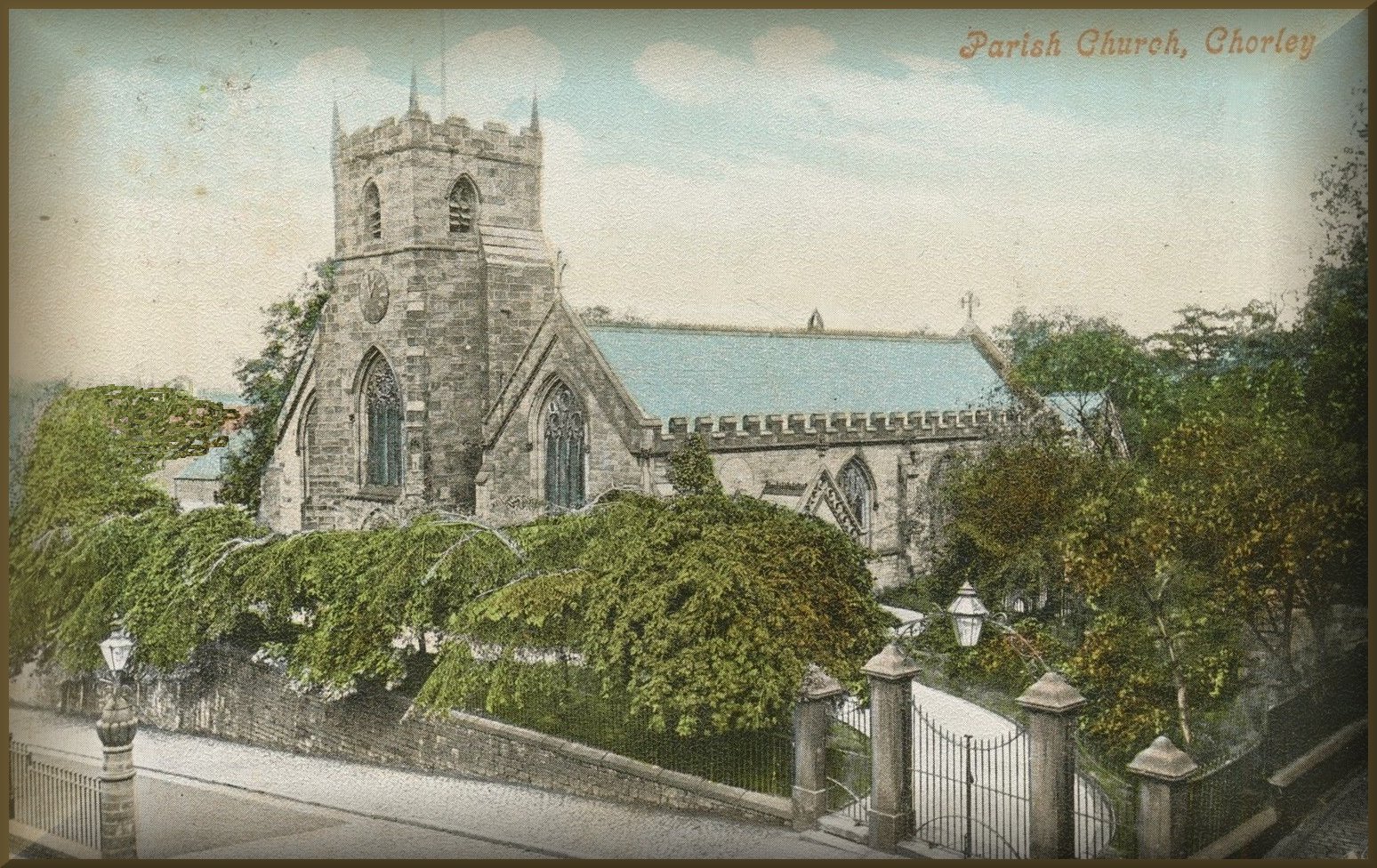
The Church of St Laurence, Chorley, Lancashire has TWO Standish family vaults under its roof.
One Standish vault contains only Haydock of Haydock family members with a Male Haydock blood line and DNA.
The other Standish vault contains only Standish of Standish family members with a Male Standish bloodline and DNA.

1584. Bloodlines and DNA of the Standish Families living upon the Manor of Duxbury.
In the year 1584 (1584 the year of the birth of Myles Standish) there were two branches of the Standish family living upon the Manor of Duxbury in Chorley Lancashire England.
1303 to 1771. Two branches of the Standish family with two very different bloodlines and DNA profiles.
1.The Standish family of the Burgh upon the Manor of Duxbury had the DNA profile and bloodline of the Male line of the House of Standish of Standish.
2.The Standish family of the Pele and Halls of Duxbury who were the Lords of the Manor of Duxbury 1300 to 1812, had the DNA profile and bloodline from the Male line of Haydock of Haydock or as the Haydock family sons were born on the Manor of Standish the DNA profile and bloodline from the Male line of Haydock of Standish.
1655 The will of Myles Standish states “ my great grandfather being the second or younger brother of Standish of Standish”.
Thus the great grandfather of Myles must have a DNA profile and bloodline from the Male line of Standish of Standish.
In the year 1655 when Myles Standish made his will he did not have any knowledge of his DNA profile, but he did know of the very distinct and different blood line between the two "Standish" families resident upon the Manor of Duxbury in the year 1584, thus the need to state and define his bloodline with the words “ my great grandfather being the second or younger brother of Standish of Standish”.
1584 - STANDISH of STANDISH - Thurstan Standish of the Burgh upon the Manor of Duxbury.

The Standish of Standish deeds relating to the Manor of Standish and the Manor of Duxbury indicate that Thurstan Standish of the Burgh was only member of the Standish family living on the Manor of Duxbury in the years 1495 to 1584 (1584 the year of the birth of Myles Standish) who had the Standish of Standish DNA profile and bloodline stated in the will of Myles Standish in 1655.
Thurstan Standish was resident at the Burgh upon the Manor of Duxbury and he was the second son of Sir Alexander Standish Lord of the Manor of Standish 1468 to 1507.
Thurstan Standish is identified by the Standish deeds as the only Standish Male living on the Manor of Duxbury in the years 1495 to 1584 with a Standish of Standish DNA profile and bloodline that enabled him to be the great grandfather stated in the Will of Myles Standish.
Thurstan Standish had the DNA profile and bloodline of the Male line of the House of Standish of Standish.
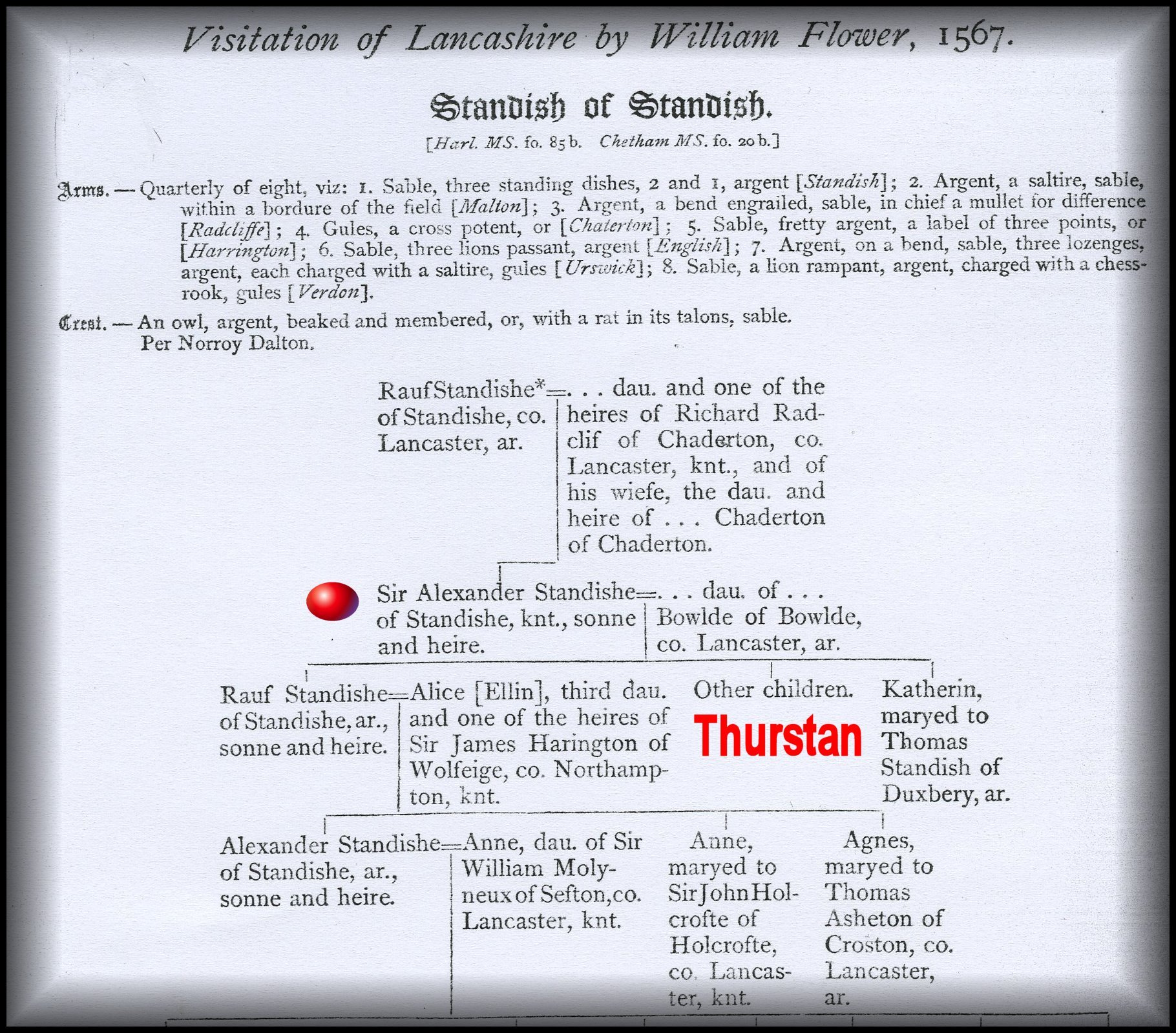
The descendents of Thurstan lived at the Burgh on the Manor of Duxbury in 1584 when Myles Standish was born.
The Pedigree of Thurstan Standish of the Burgh in Duxbury was recorded in the year 1613 and the original record from 1613 is held by the College of Arms London .

The Standish deeds clearly show that there is no Standish of Standish Male line DNA in the Standish burial vault under the Alter in the Church of St Laurence Chorley Lancashire.
This vault only contains the Male line DNA from the Haydock of Haydock family or as the Haydock family sons were born on the Manor of Standish the DNA from the Male line of the Haydock of Standish family all being descended from Hugh de Haydock de Standish.
Anyone researching a family connection between Myles Standish his great grandfather and any descendant of Hugh de Haydock de Standish are thus seeking to prove that Myles Standish was actually Myles Haydock with a Haydock of Haydock bloodline and DNA profile .
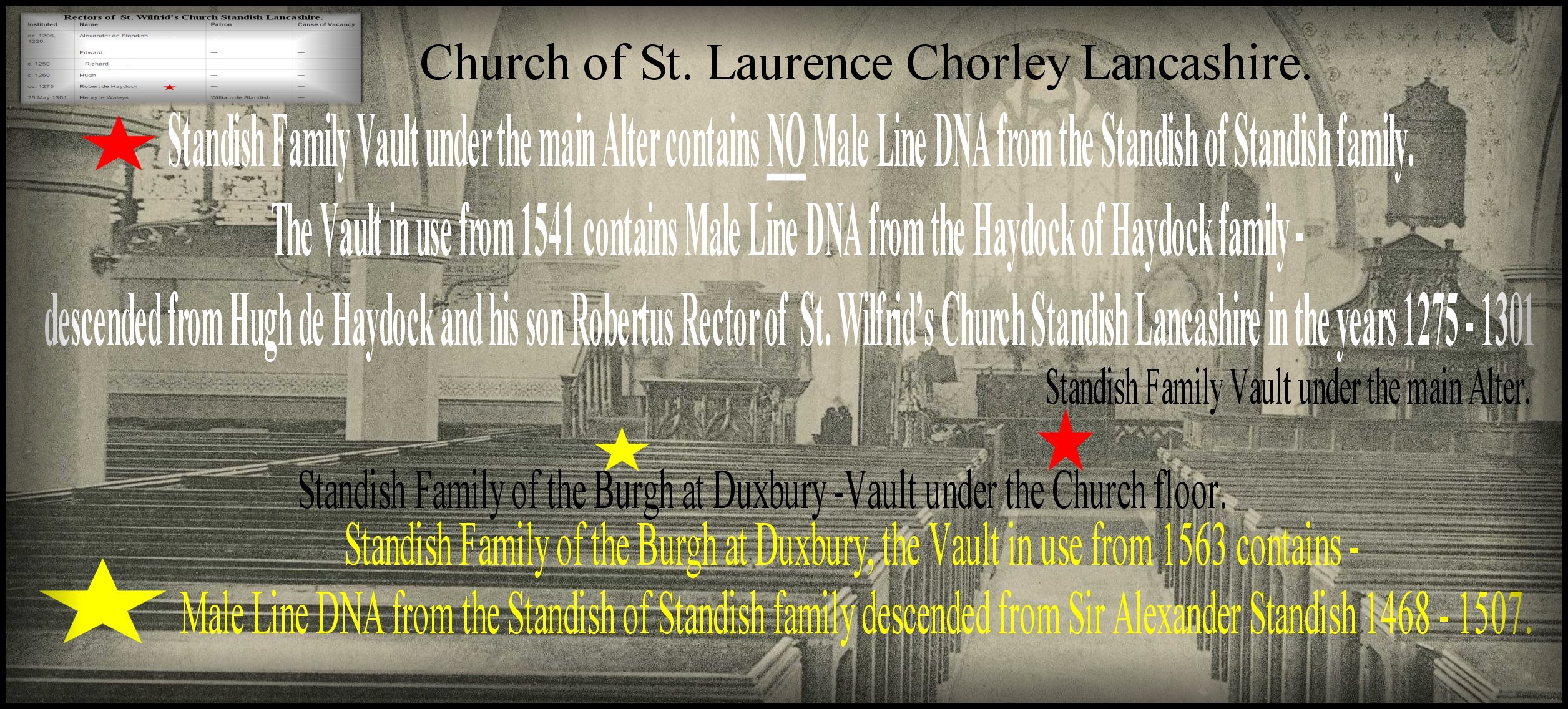
The Standish family of the Burgh upon the Manor of Duxbury had their own seat in the Church of St Laurence, Chorley Lancashire.
Lawrence Standish of the Burgh was buried at the Church of St. Laurence in 1571 his wife before him in 1563. Lawrence was buried in a small family vault under the floor of the old church close to their family seat. This Standish burial vault was inline with other burial vaults of important families of the parish.
1571. Laurence Standish of ye Burgh.
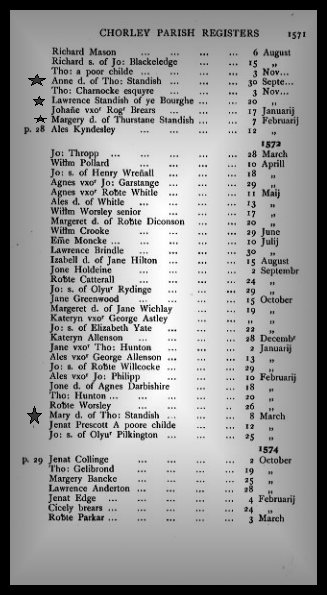
Thus if Myles Standish did have a Standish of Standish Bloodline / DNA as his Will indicates, he must have the same bloodline and DNA profile as Lawrence Standish of the Burgh who was buried at the Church of St. Laurence in 1571. If Myles Standish was born at Duxbury / Chorley in 1584 he like Lawrence Standish would have an exact DNA profile match with the DNA profile of Standish of Standish family members buried in the Standish vault of the Church of St. Wilfrid at Standish Lancashire.
If Myles Standish was the great grandson of Thurstan Standish of the Burgh upon the Manor of Duxbury, where upon the Burgh could Myles have been born?.
The Standish Family deeds record the purchase of Land and property on the Manor of Chorley and the Manor of Duxbury by the Lords of the Manor of Standish.
1423. Lower Burgh comes into the ownership of the Standish Family.
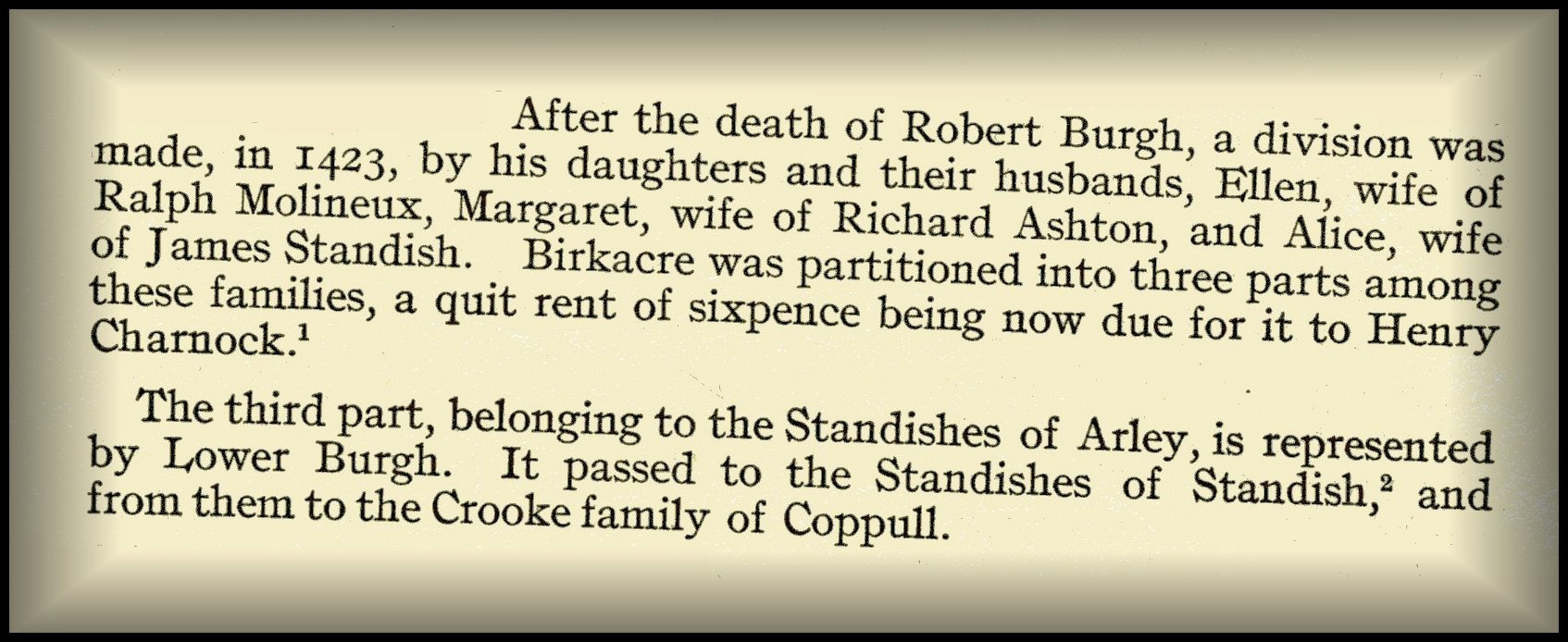
1423. Lower Burgh comes into the ownership of the Standish Family (deed 289).

1441. Lands adjacent to Lower Burgh come into the ownership of the Standish Family.
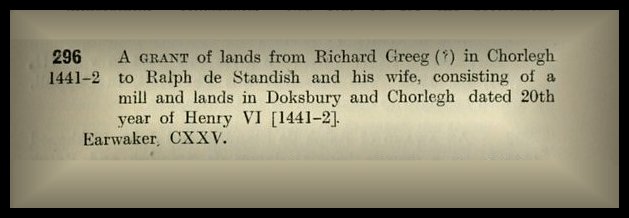
1461. A contemptuous divorce in the Standish Family of Arley.
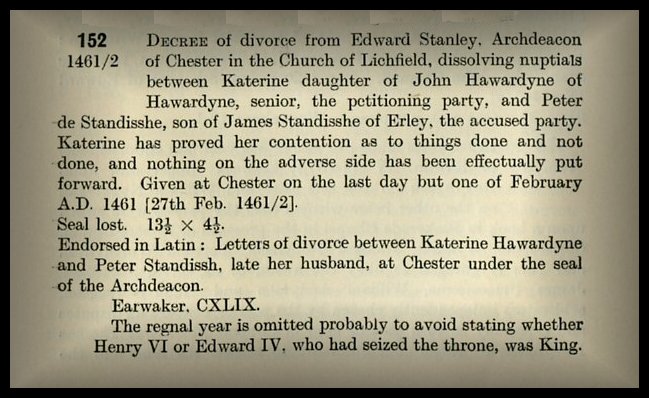
1465. Peter Standish of Arley transfers land to his cousin Alexander Standish of Standish..
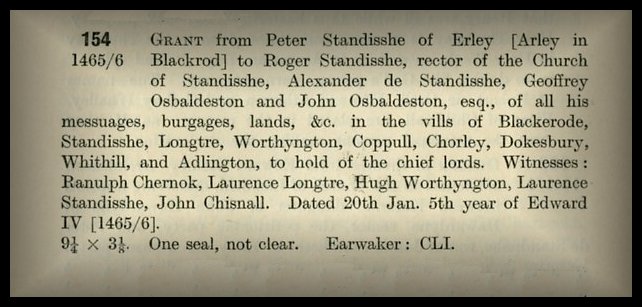
Sir Alexander Standish Lord of the Manor of Standish and Father of Thurstan Standish came into the ownership of Little or Lower Burgh in 1465/66 from the grant in 1465 by his cousin Peter Standish of Arley.
The Lower Burgh site had been occupied from around 1295 and became the residence of Thurstan Standish.
Lower Burgh Hall was rebuilt around 1550 and was the residence of Thurstan's descendants until the last of the Male line died in 1700.
Should Myles Standish be the Great grandson of Thurstan Standish then he would have been born at Lower Burgh Hall.
The Hall still stands on the Lower Burgh Site in 2015.


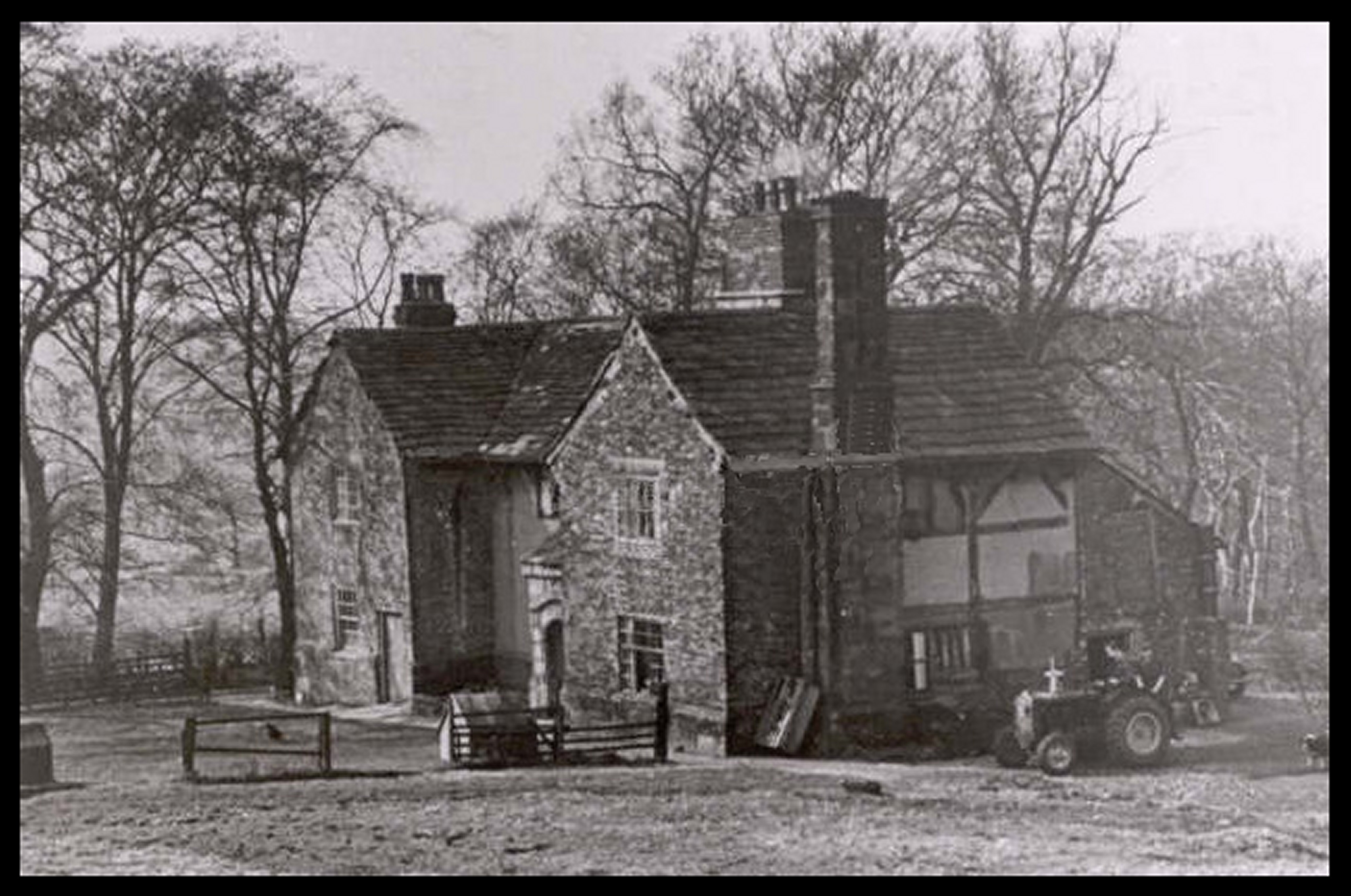
2015. Lower Burgh Hall
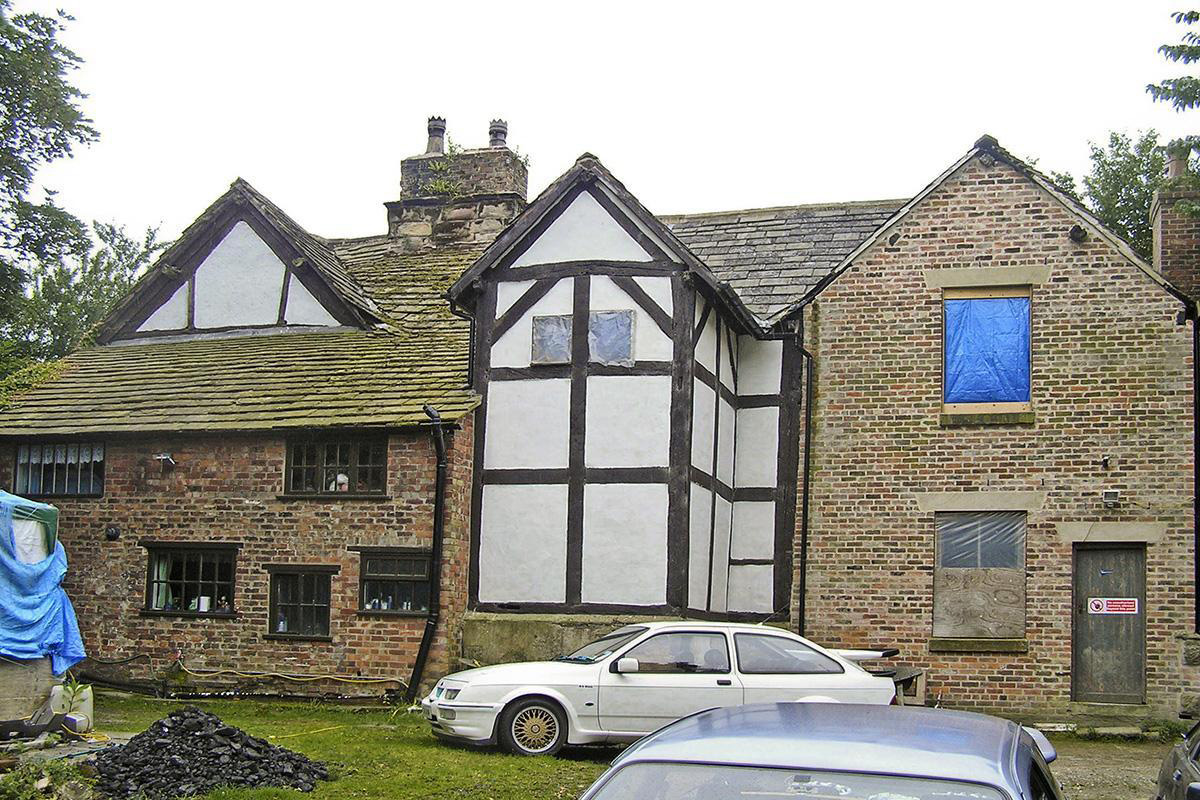
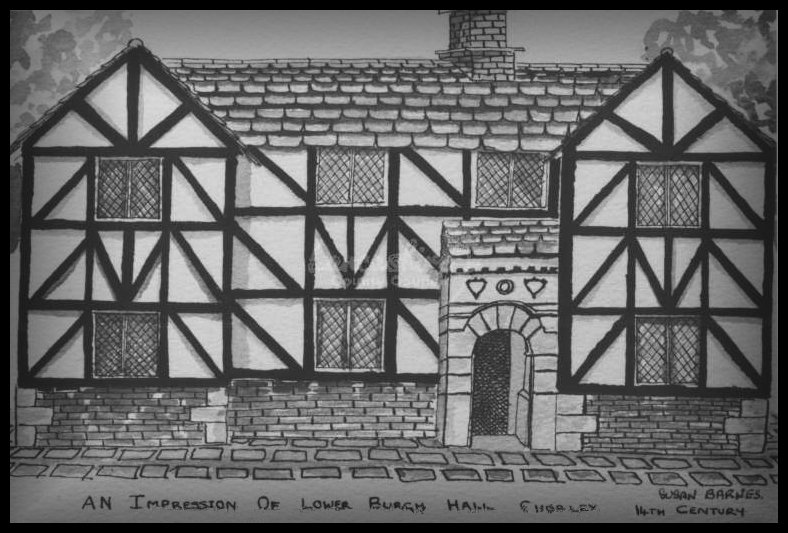
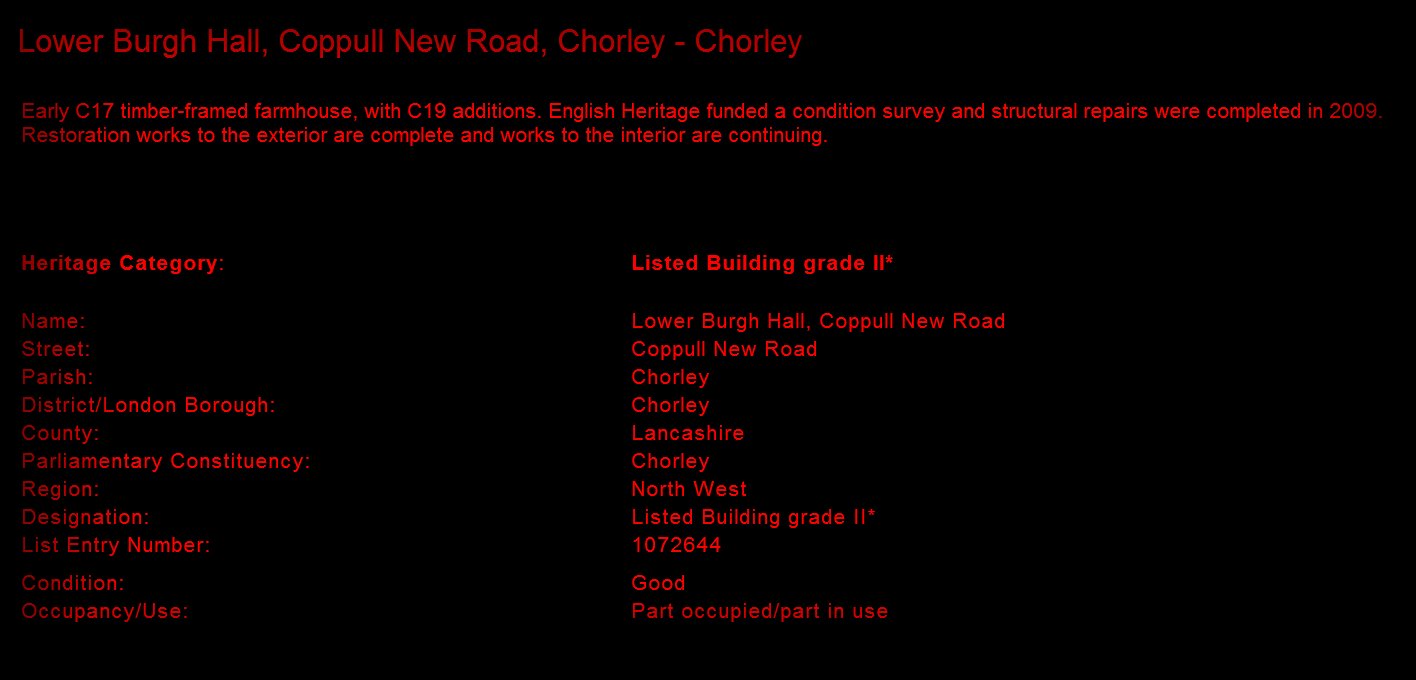
The Standish family of Erley (Arley ) died out with the death of James Standish in 1525.

1588 . Residents of the Manor of Duxbury.
Thurstan Standish is not shown as a resident of the Manor of Duxbury in 1588 because Lower Burgh became a part of the Manor of Chorley when the Manorial boundries were drawn up.

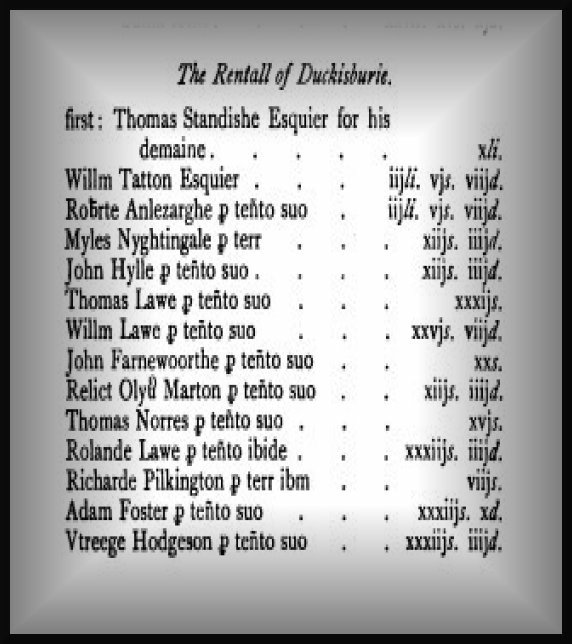
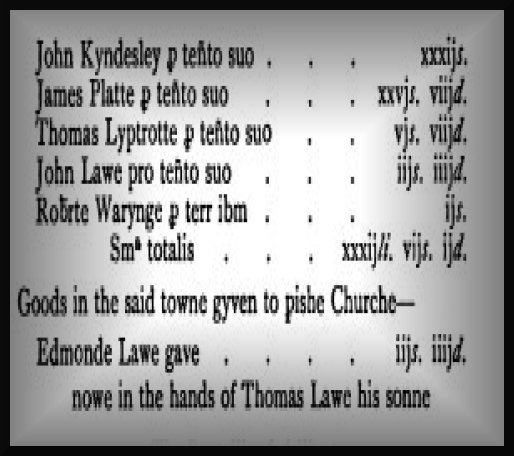
1628. Recusants Roll Chorley Manor - Thurstan Standish and his wife fined.


1628 - Still a very devout Catholic Family Thurstan Standish and his wife fined.
1628. Thurstan Standish is shown as a resident of the Manor of Chorley.

1628 Recusants Roll Duxbury & Adlington Manors.

Higher Burgh Hall was a later construction and had no connection with the Standish Families.
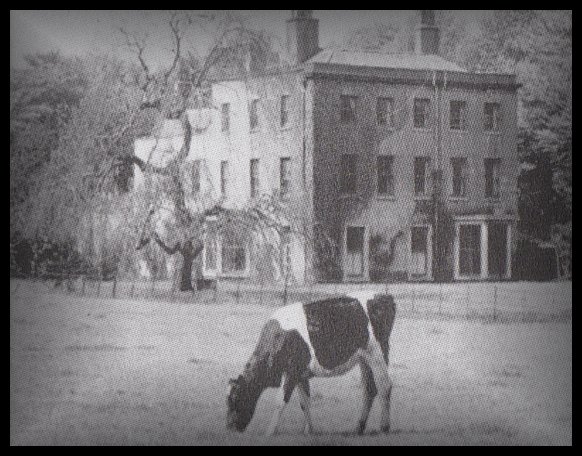
Link The Standish Family of the Burgh on the Manor of Duxbury Lancashire England 1490 to 1771.
![]()
1584. Alexander Pilkington son of Richard of the Burgh upon the Manor of Duxbury
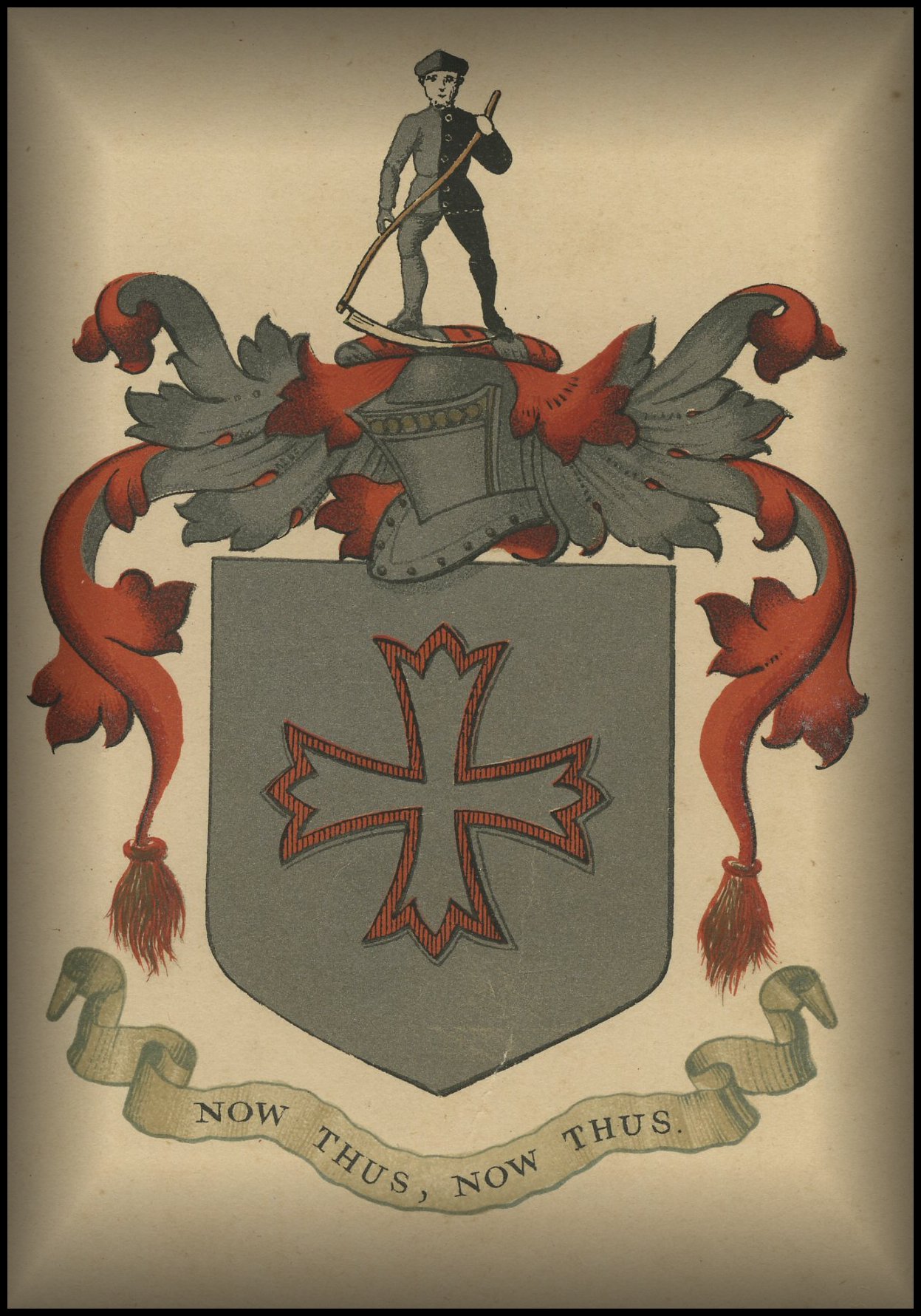
Arms of Pilkington.
1584. Residents of the Manor of Duxbury.

1584. Residents of the Manor of Duxbury.

Alexander Pilkington son of Richard of the Burgh, Duxbury and his daughters Rosa and Barbarie (daughters of Alexander) were close neighbours of the Standish Family of the Burgh upon the Manor ofDuxbury.
Rosa and Barbarie Pilkington were born at Burgh on the Manor of Duxbury around the same time as Myles Standish in 1584 and have similar names to the two wives of Myles.
The Pilkington family were close neighbours of the Standish family of Lower Burgh Hall.
If Myles Standish was born at the Standish family home Lower Burgh Hall he would have known Rosa and Barbarie in his childhood.
Rosa and Barbarie were distant cousins of Lora Pilkington who was married (1398) to Laurence Standish Lord of the Manor of Standish 1418 to 1434.
Lora Pilkington was the great great grandmother of Thurstan Standish of Lower Burgh Hall.
Thus if Myles Standish was the great grandson of Thurstan Standish, Myles would be a direct descendant of Lora Pilkington.
Myles Standish named his own daughter Lora not a common name in the Standish family, but a name commonly used in the Pilkington family.
Lora Standish (Pilkington)
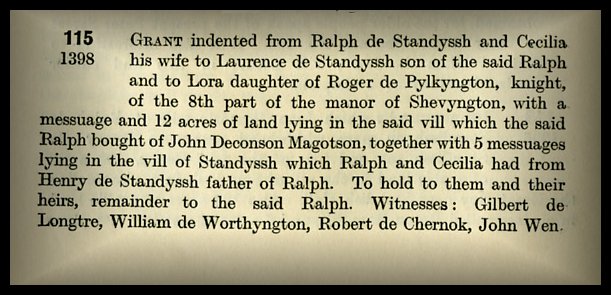

Link The Pilkington & Nightingale Families on the Manor of Duxbury Lancashire England.
![]()
Family number Four - Female line Haydock DNA.
1812 to 1898. The Last Lords of the Manor of Duxbury - descended from Margaret Standish 1726 - 1776.
Frank Hall Standish 1799 to 1840
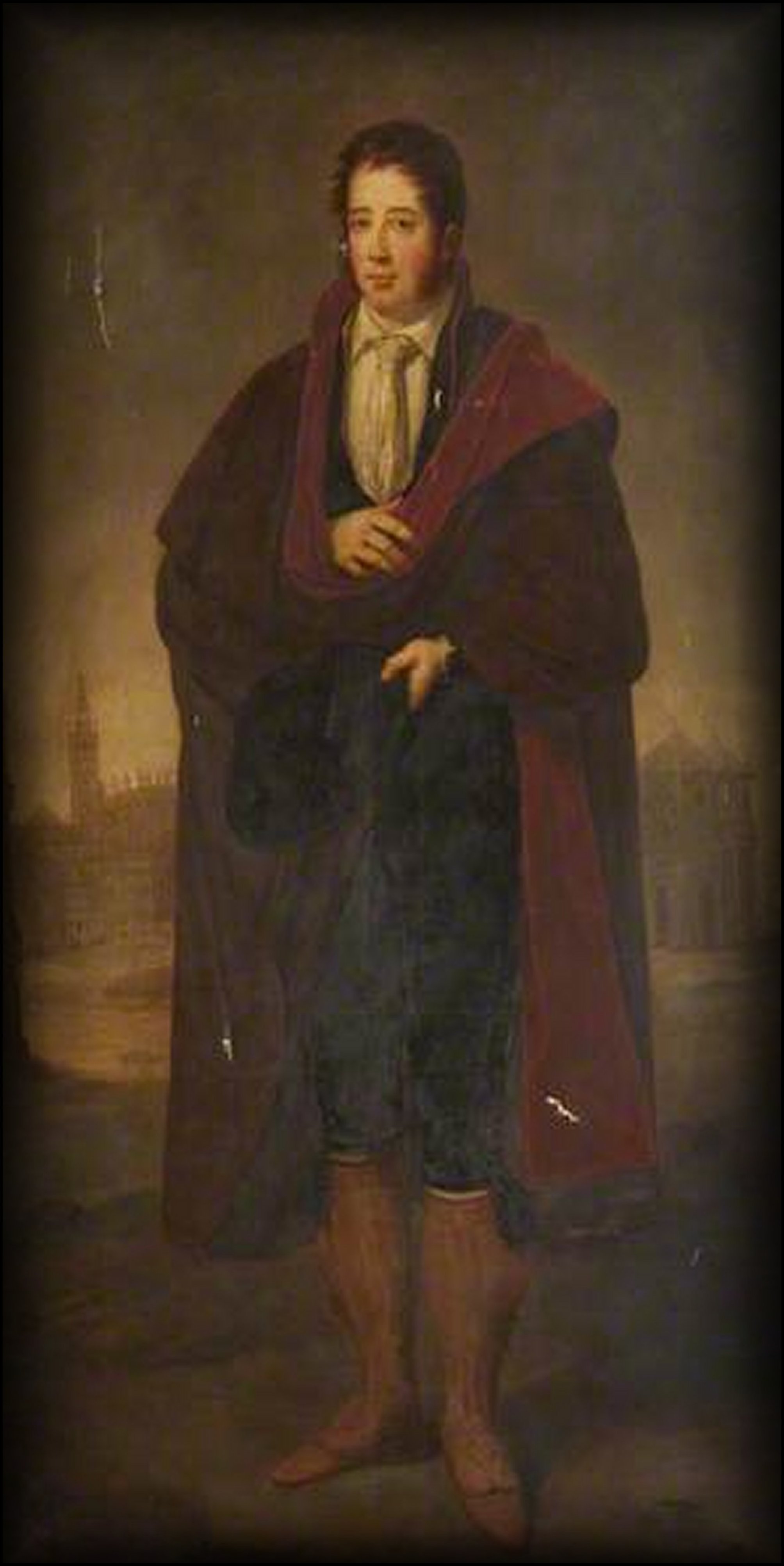
1812 The accusations of fraud in 1812 by Frank Hall Standish were totally unfounded.

Were the descendants of Myles Standish a founding father of the United States of America wilfully defrauded of their lawful inheritance to the extensive Duxbury Estates in Lancashire England on the death of the last male Standish in England - Sir Frank Standish in 1812?
Mr Bromley appointed by Standish family members in the USA to investigate their claim believed that they had been wilfully defrauded - along with many citizens in America and Lancashire England.
However Mr Bromley and Standish family members in the USA did not know that there were two very distinct bloodlines for the Standish families on the Manor of Duxbury and that Sir Frank Standish did not have a "Standish of Standish" male bloodline or descent as stated by Myles Standish in his Will "Standish of Standish".
Sir Frank Standish like the originator of his line Hugh de Haydock de Standish was Sir Frank de Haydock de Standish with a Haydock family male bloodline and DNA.
Consequently Standish family members in the USA did not have a claim on the estate of Sir Frank Standish who died in 1812.
Documentary evidence in the registers of the Parish Church of St. Cuthberts, Darlington, Durhamshire, England prove conclusively that Frank Hall (Standish) was the correct and lawful descendent of Sir Frank Standish and he had a prior claim under English Law to the Duxbury Estates of Sir Frank Standish (who died in 1812) before any other living Standish descendent in England or America.
England - Births and Christenings - 1538-1975.
Name: Frank Hall
Gender: Male
Christening Date: 08 Nov 1799
Christening Place: St. Cuthberts, Darlington, Durhamshire, England.
Birth Date: 02 Oct 1799
Birthplace: Darlington Durham England
Death Date: 1841 Cadiz Spain.
Father's Name: Anthony Hall
Mother's Name: Charlotte Key
Indexing Project (Batch) Number: C00413-8
System Origin: England-EASy
GS Film number: 1514534
Reference ID: item 6
FamilySearch (https://familysearch.org/pal:/MM9.1.1/NXC9-X5C : accessed 28 Oct 2013), Frank Hall, 02 Oct 1799.
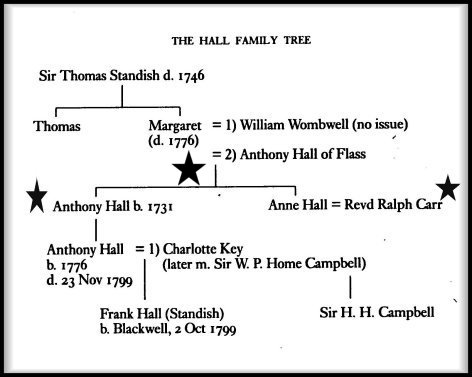
1799. Frank Hall - Lord of the Manor of EGGLESCLIFFE .
The Manor of Egglescliffe lies along the northern bank of the Tees, with Yorkshire to the south and east, Stockton and Long Newton to the north and Middleton St. George to the west .
The Manor of Egglescliffe 1717 to 1849.
Richard Elstob was called lord of Egglescliffe in 1717, and in 1726 Edward Elstob, in selling the Mill Hill here to Peter Consett, discharged it from the £20 rent-charge. Twenty-four years later John Elstob, Alice Elstob and Anne Hope, who were said to hold the interest of Henry Wood in the estate, sold the land retained by Edward Elstob to Anthony Hall.
Anthony Hall settled it in 1763 on themarriage of his son Anthony, whose son, another Anthony, succeeded him. The heir of the last-mentioned Anthony was his son Frank Hall , who in 1812 also succeeded to the estates of his cousin Sir Frank Standish, bart., of Duxbury and took the name of Standish. Frank Hall Standish was a principal landowner about 1820 and died in 1841.
His kinsman William Standish Standish succeeded him and died in 1856. The family estate in Egglescliffe was sold in 1849.
1812 Was page 32 of the parish register of the Church of St. Laurence destroyed?
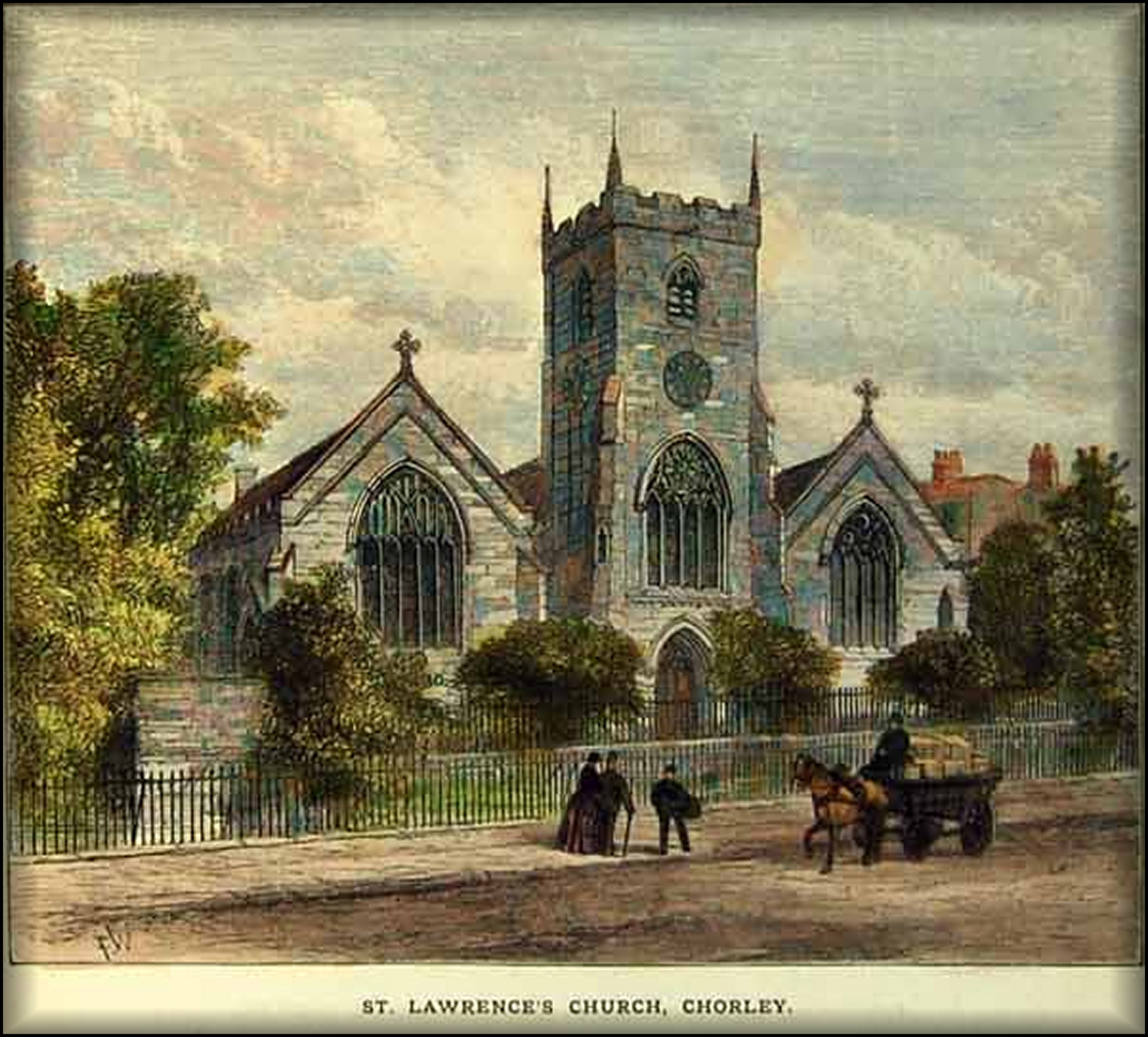
Page 39/40 of the parish register of the Church of St. Laurence was wilfully destroyed.
Page 39/40 had the top third torn off and other parts were eroded. The fact that page 39/40 of the parish register carried the births for the year 1584 the very year Myles Standish is said to have been born was in the eyes of many evidence of fraud. Some person inspecting the register saw a name of distinction in the top third of page 39/40 that gave them great concern about the right of inheritance to the estate of Sir Frank Standish (a totally unwarranted concern) thus the need to destroy the historical record. The opinion of many learned scholars and of the ordinary citizens of the Parish of Chorley was - "the parish register of the Church of St. Laurence had been wilfully destroyed".
1584. Page 39 and reverse Page 40 of the parish register of the Church of St. Laurence ,
Page 39
Page 40
The parish register of the Church of St. Laurence Standish Family Births 1557 - 1699.
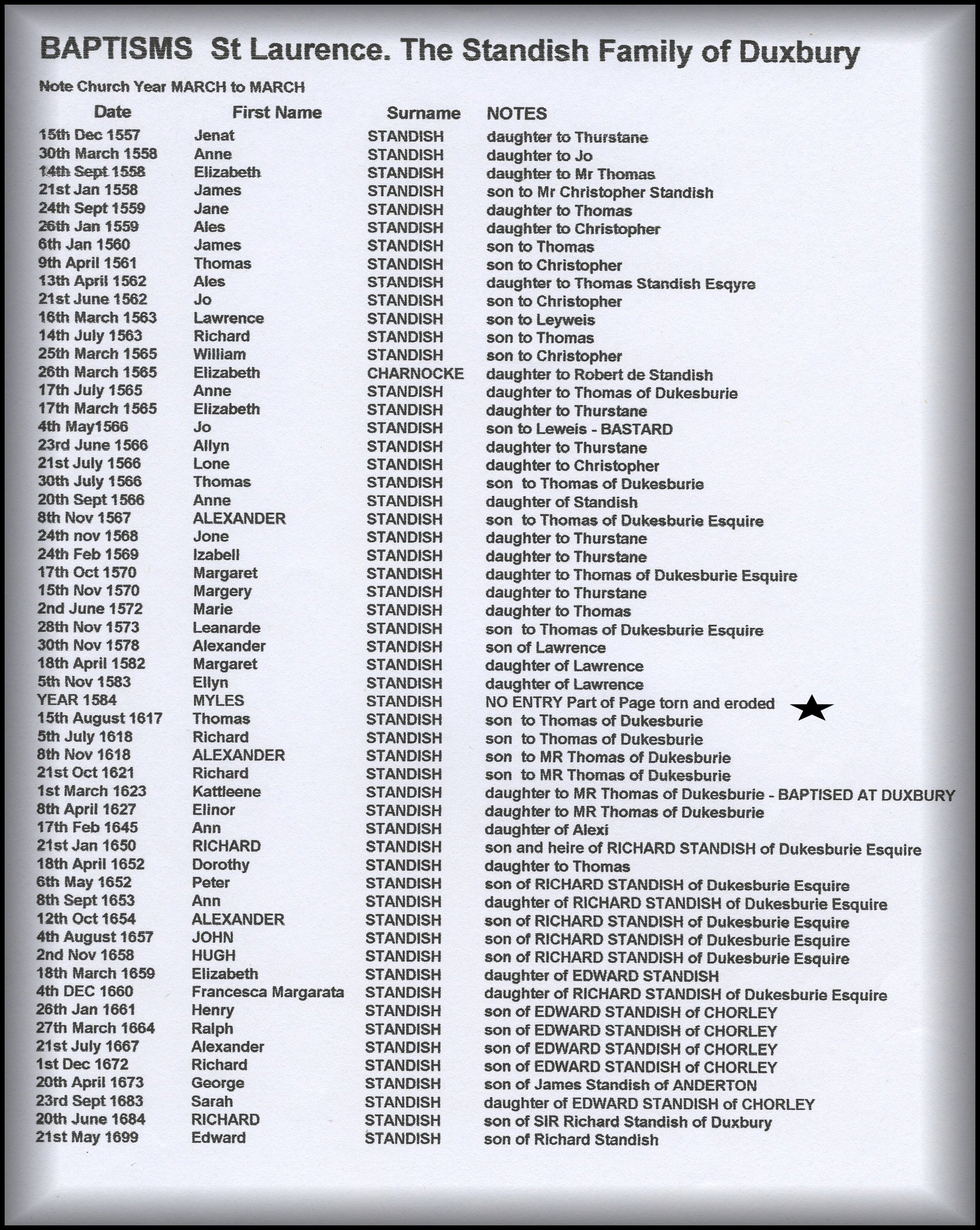
The parish register of the Church of St. Wilfrid, Standish ,Lancashire, Births 1583 - 1584 - 1585.
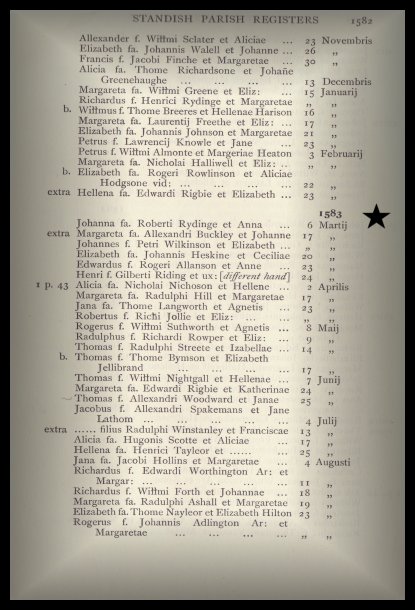
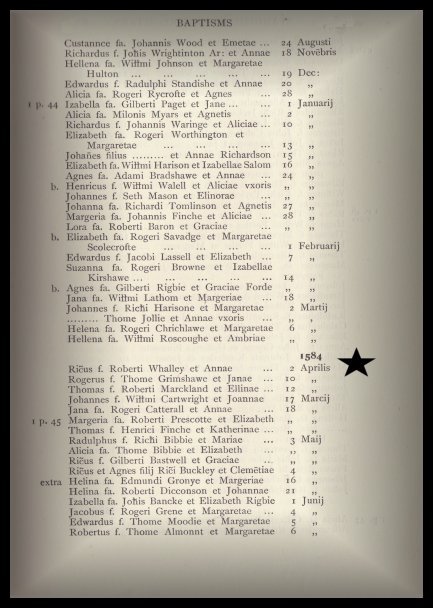
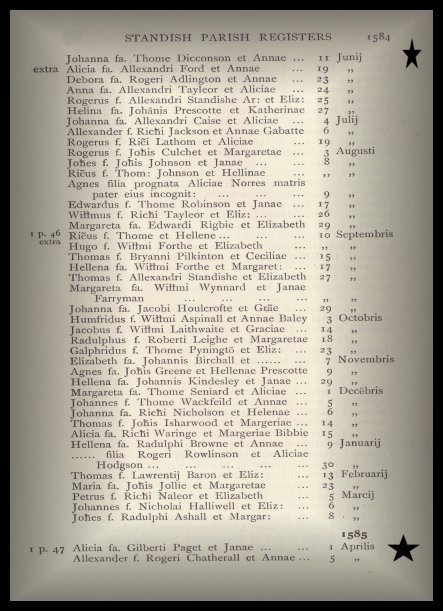
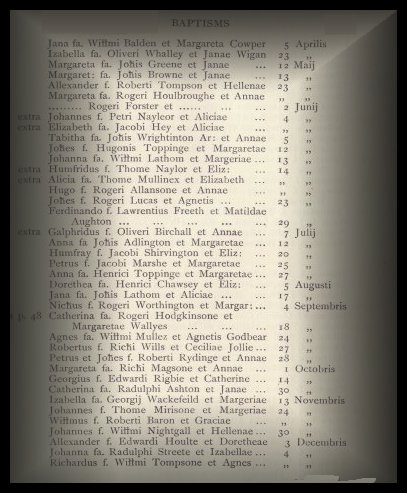
The accusations of fraud in 1812 against Frank Hall Standish were totally unfounded.
1824. Mr. Frank Hall the unloved Lord of the Manor of Duxbury.
The accusations of fraud in 1812 resulted in the new Lord of the Manor Mr. Frank Hall not being able to recruit staff locally to work at the Hall or upon the estate. The consequence of the refusal of local people to work for him meant that Frank Hall had to hire staff from other parts of England to work upon the Duxbury Estate. However the innocent staff brought to Duxbury were treated as outcasts by the local community and much abused.
A Times of London article in 1824 indicates the depth of local feeling " it had been customary to insult and abuse all persons in the employ of Mr. Hall Standish; so much so, that he found it difficult to procure servants in the neighbourhood".
Links to -
The Manor of Duxbury and the French King Louis Philippe 1773 - 1850.
The Late Frank Hall Standish of Duxbury Hall - from the Press 10th February 1841
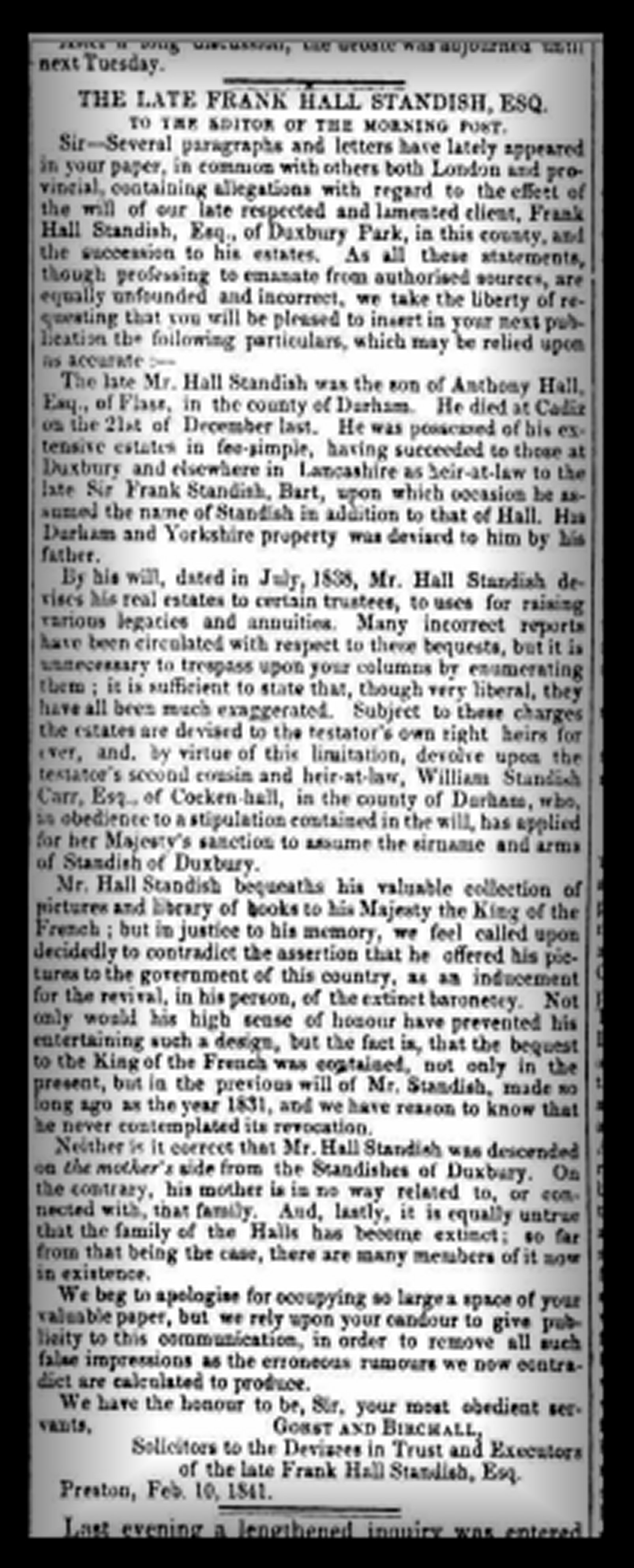
Top
1828
to 1842. Nos. DX 850 to
1201 Lancashire Archives - relate to the family of Standish of Duxbury,
especially to the succession to the estate.
FILE [no title] - ref. DX 988 - date: 1828-1844
![]() [from Scope and Content] Account of Messrs Gorst and
Birchall to the executors of Frank Hall Standish, esq.
[from Scope and Content] Account of Messrs Gorst and
Birchall to the executors of Frank Hall Standish, esq.
FILE [no title] - ref. DX 989 - date: 12 Mar
1830
![]() [from Scope and Content] Letter of attorney: Frank Hall
Standish to Thomas Birchall of Preston
and Richard Woodward of Marsh Brow in Over Hulton, gents.
[from Scope and Content] Letter of attorney: Frank Hall
Standish to Thomas Birchall of Preston
and Richard Woodward of Marsh Brow in Over Hulton, gents.
Letters and papers connected with the
succession of Frank Hall and William Carr to the estates of Standish of Duxbury, 1831-1842
FILE
[no title] - ref. DX
1023 - date: 7 Jun 1831
![]() [from Scope and Content] Letter containing details of
the Pedigree of Mr. William Crosse, a near relative of the late Sir Frank Standish of Duxbury Hall
[from Scope and Content] Letter containing details of
the Pedigree of Mr. William Crosse, a near relative of the late Sir Frank Standish of Duxbury Hall
FILE
[no title] - ref. DX
1024 - date: 4 May 1832
![]() [from Scope and Content] Letter from Frank Hall Standish (hereafter given as FHS) to T. Birchall
(solicitor) warning him of some trouble and suggesting that he have constables
and men ready to stand a siege on the house (unidentified)
[from Scope and Content] Letter from Frank Hall Standish (hereafter given as FHS) to T. Birchall
(solicitor) warning him of some trouble and suggesting that he have constables
and men ready to stand a siege on the house (unidentified)
FILE
[no title] - ref. DX
1026 - date: 2 Jan 1821
![]() [from Scope and Content] Schedule of Thomas Standish (imprisoned at Lancaster Castle) to the
Court for the relief of Insolvent Debtors, containing details of all his debts
and stating that he believes himself to be the lawful heir to the Duxbury
Estate
[from Scope and Content] Schedule of Thomas Standish (imprisoned at Lancaster Castle) to the
Court for the relief of Insolvent Debtors, containing details of all his debts
and stating that he believes himself to be the lawful heir to the Duxbury
Estate
FILE
[no title] - ref. DX
1027 - date: nd
![]() [from Scope and Content] Pedigree of William Standish Carr Esquire in relation to his title to the
Duxbury Estate
[from Scope and Content] Pedigree of William Standish Carr Esquire in relation to his title to the
Duxbury Estate
FILE
[no title] - ref. DX
1029 - date: nd
![]() [from Scope and Content] Pedigree of the Standish family of Duxbury
[from Scope and Content] Pedigree of the Standish family of Duxbury
FILE
[no title] - ref. DX
1033 - date: 23 Dec 1817
![]() [from Scope and Content] Pedigree of FHS (Heir at Law
of the late Sir Frank Standish) and Thomas Standish (claimant)
[from Scope and Content] Pedigree of FHS (Heir at Law
of the late Sir Frank Standish) and Thomas Standish (claimant)
FILE
[no title] - ref. DX
1034 - date: 19 Oct 1840
![]() [from Scope and Content] Letter from James Standish to T. Birchall regarding his claim to the
Duxbury Estate
[from Scope and Content] Letter from James Standish to T. Birchall regarding his claim to the
Duxbury Estate
FILE
[no title] - ref. DX
1036 - date: 9 Jan 1841
![]() [from Scope and Content] Letter from R. Woodward to T.
Birchall regarding an enclosed notice from James Standish not to pay any rents due to the estate of
the late Sir Frank Standish
[from Scope and Content] Letter from R. Woodward to T.
Birchall regarding an enclosed notice from James Standish not to pay any rents due to the estate of
the late Sir Frank Standish
FILE
[no title] - ref. DX
1037 - date: 13 Jan 1840
![]() [from Scope and Content] Letter from John Standish to G and B regarding his family's claim to
the Duxbury Estate following the death of FHS
[from Scope and Content] Letter from John Standish to G and B regarding his family's claim to
the Duxbury Estate following the death of FHS
FILE
[no title] - ref. DX
1038 - date: 18 Jan 1841
![]() [from Scope and Content] Letter from John Standish to G and B on behalf of his brother Thomas Standish regarding his claim to the Duxbury Estate
and a reply to the letter stating that the late FHS had left a will and that
Thomas Standish's claim is 'groundless'
[from Scope and Content] Letter from John Standish to G and B on behalf of his brother Thomas Standish regarding his claim to the Duxbury Estate
and a reply to the letter stating that the late FHS had left a will and that
Thomas Standish's claim is 'groundless'
FILE
[no title] - ref. DX
1040 - date: 23 Jan 1841
![]() [from Scope and Content] Letter from John Standish to G and B regarding the claim of Thomas Standish to the Duxbury Estate including details as
to why FHS was not the rightful heir
[from Scope and Content] Letter from John Standish to G and B regarding the claim of Thomas Standish to the Duxbury Estate including details as
to why FHS was not the rightful heir
FILE
[no title] - ref. DX
1041 - date: 3 Feb 1841
![]() [from Scope and Content] Letter from T. Birchall to R.
Woodward containing details of the Pedigree of William Standish Carr and his being the rightful claimant to
the Duxbury Estate
[from Scope and Content] Letter from T. Birchall to R.
Woodward containing details of the Pedigree of William Standish Carr and his being the rightful claimant to
the Duxbury Estate
FILE
[no title] - ref. DX
1042 - date: 1 Feb 1841
![]() [from Scope and Content] Notice of claim of W. Standish Carr as Heir-at-Law of the late FHS
[from Scope and Content] Notice of claim of W. Standish Carr as Heir-at-Law of the late FHS
FILE
[no title] - ref. DX
1044 - date: 8 Feb 1841
![]() [from Scope and Content] Letter from T. Birchall
regarding W. Standish Carr's viewing of the Standish plate
[from Scope and Content] Letter from T. Birchall
regarding W. Standish Carr's viewing of the Standish plate
FILE
[no title] - ref. DX
1046 - date: nd
![]() [from Scope and Content] Details about the family of W.
Standish Carr
[from Scope and Content] Details about the family of W.
Standish Carr
FILE
[no title] - ref. DX
1047 - date: 12 Feb 1841
![]() [from Scope and Content] Letter from John Standish to G and B regarding Thomas Standish's claim to the Duxbury Estate
[from Scope and Content] Letter from John Standish to G and B regarding Thomas Standish's claim to the Duxbury Estate
FILE
[no title] - ref. DX
1048 - date: 13 Feb 1841
![]() [from Scope and Content] Letter from Peter Standish to R. Woodward (steward of Duxbury Hall)
concerning the claim to the Duxbury Estate
[from Scope and Content] Letter from Peter Standish to R. Woodward (steward of Duxbury Hall)
concerning the claim to the Duxbury Estate
FILE
[no title] - ref. DX
1050 - date: 15 Feb 1841
![]() [from Scope and Content] Letter concerning the Standish Arms
[from Scope and Content] Letter concerning the Standish Arms
FILE
[no title] - ref. DX
1054 - date: 22 Feb 1841
![]() [from Scope and Content] Letter from J. Dunn to T.
Birchall requesting information re-the Hall Standish family
[from Scope and Content] Letter from J. Dunn to T.
Birchall requesting information re-the Hall Standish family
FILE
[no title] - ref. DX
1056 - date: 25 Feb 1841
![]() [from Scope and Content] Letter from [T. Birchall] to
J. Dunn regarding the Standish Pedigree and the evidence he
has to prove the facts it contains
[from Scope and Content] Letter from [T. Birchall] to
J. Dunn regarding the Standish Pedigree and the evidence he
has to prove the facts it contains
FILE
[no title] - ref. DX
1057 - date: 27 Feb 1841
![]() [from Scope and Content] Letter from J. Dunn to T.
Birchall requesting evidence of the parentage of Anne Hall, and a reply to that
letter providing that evidence; also included is a note regarding the visit of
Mr. and Mrs. Standish to Duxbury
[from Scope and Content] Letter from J. Dunn to T.
Birchall requesting evidence of the parentage of Anne Hall, and a reply to that
letter providing that evidence; also included is a note regarding the visit of
Mr. and Mrs. Standish to Duxbury
FILE
[no title] - ref. DX
1058 - date: 2 Mar 1841
![]() [from Scope and Content] Letter from J. Dunn to T.
Birchall containing facts about members of the Standish family
[from Scope and Content] Letter from J. Dunn to T.
Birchall containing facts about members of the Standish family
FILE
[no title] - ref. DX
1059 - date: 3 March 1841
![]() [from Scope and Content] Letter from T. Birchall to R.
Woodward giving details of Mr. Standish's movements and a visit from James Standish regarding his claim to the title
[from Scope and Content] Letter from T. Birchall to R.
Woodward giving details of Mr. Standish's movements and a visit from James Standish regarding his claim to the title
FILE
[no title] - ref. DX
1060 - date: 12 Mar 1841
![]() [from Scope and Content] Copy of a letter to J. Dunn
stating that evidence can be gained from the daughters of Mrs. Carr regarding
the Standish Carr Pedigree
[from Scope and Content] Copy of a letter to J. Dunn
stating that evidence can be gained from the daughters of Mrs. Carr regarding
the Standish Carr Pedigree
FILE
[no title] - ref. DX
1061 - date: 15 Mar 1841
![]() [from Scope and Content] Letter to T. Birchall stating
that the pedigrees of W. Standish Carr and FHS prove that W. Standish Carr is the sole Heir at Law of the late FHS
and where evidence for this can be gained
[from Scope and Content] Letter to T. Birchall stating
that the pedigrees of W. Standish Carr and FHS prove that W. Standish Carr is the sole Heir at Law of the late FHS
and where evidence for this can be gained
FILE
[no title] - ref. DX
1062 - date: 8 Apr 1841
![]() [from Scope and Content] Certificate stating that W. Standish Carr is the Heir at Law of the late FHS and
as such is now in possession of the mansion at Duxbury Park
[from Scope and Content] Certificate stating that W. Standish Carr is the Heir at Law of the late FHS and
as such is now in possession of the mansion at Duxbury Park
FILE
[no title] - ref. DX
1063 - date: 13 Apr 1841
![]() [from Scope and Content] Letter from Elizabeth Standish on behalf of her husband's brother, claiming
he is the rightful heir to the Duxbury Estate
[from Scope and Content] Letter from Elizabeth Standish on behalf of her husband's brother, claiming
he is the rightful heir to the Duxbury Estate
FILE
[no title] - ref. DX
1064 - date: 24 Jun 1841
![]() [from Scope and Content] Letter to G and B from James
Sim claiming that he investigated the claim of Peter Standish to the Duxbury Estate finding it to be false
and is prepared to give his information to them for a price; also includes
details of the line of descent
[from Scope and Content] Letter to G and B from James
Sim claiming that he investigated the claim of Peter Standish to the Duxbury Estate finding it to be false
and is prepared to give his information to them for a price; also includes
details of the line of descent
FILE
[no title] - ref. DX
1066 - date: 28 Jan 1842
![]() [from Scope and Content] Letter from G and B requesting
that a search be made of the parish registers in Warwick concerning the burial
of Ralph Standish in order to disprove a claim
to the Duxbury Estate
[from Scope and Content] Letter from G and B requesting
that a search be made of the parish registers in Warwick concerning the burial
of Ralph Standish in order to disprove a claim
to the Duxbury Estate
FILE
[no title] - ref. DX
1068 - date: 28 Jan 1842
![]() [from Scope and Content] Request from G and B to the
Revd. Knox Scott, of the parish of Whalley, that a search be made of parish
registers for information concerning the baptisms of members of the Standish family
[from Scope and Content] Request from G and B to the
Revd. Knox Scott, of the parish of Whalley, that a search be made of parish
registers for information concerning the baptisms of members of the Standish family
FILE
[no title] - ref. DX
1069 - date: 28 Jan 1842
![]() [from Scope and Content] Letter from G and B to S.
Nolcutt, Ipswich requesting that searches be made regarding the marriages of
Thomas Standish to Ann Wingfield and to Ann
Whithingham
[from Scope and Content] Letter from G and B to S.
Nolcutt, Ipswich requesting that searches be made regarding the marriages of
Thomas Standish to Ann Wingfield and to Ann
Whithingham
FILE
[no title] - ref. DX
1070 - date: 29 Jan 1842
![]() [from Scope and Content] Letter from [T. Birchall] to
R. Woodward giving details of the claim against W. Standish's title
[from Scope and Content] Letter from [T. Birchall] to
R. Woodward giving details of the claim against W. Standish's title
FILE
[no title] - ref. DX
1072 - date: 31 Jan 1842
![]() [from Scope and Content] Letter sent to T. Birchall
from the Standish Hall office accompanying a
'Register of Ancient Deeds'
[from Scope and Content] Letter sent to T. Birchall
from the Standish Hall office accompanying a
'Register of Ancient Deeds'
FILE
[no title] - ref. DX
1076 - date: 11 Feb 1842
![]() [from Scope and Content] Letter from G and B suggesting
that the claimants have confused Winwick with Warwick as the burial place of
Ralph Standish
[from Scope and Content] Letter from G and B suggesting
that the claimants have confused Winwick with Warwick as the burial place of
Ralph Standish
FILE
[no title] - ref. DX
1078 - date: nd
![]() [from Scope and Content] Information from the Deputy
Clerk of the Peace at Preston re-Standish Pedigree
[from Scope and Content] Information from the Deputy
Clerk of the Peace at Preston re-Standish Pedigree
FILE
[no title] - ref. DX
1080 - date: nd
![]() [from Scope and Content] List of dates, names and
places of baptisms, marriages and burials regarding the Standish Pedigree
[from Scope and Content] List of dates, names and
places of baptisms, marriages and burials regarding the Standish Pedigree
FILE
[no title] - ref. DX
1081 - date: nd
![]() [from Scope and Content] Extract from the parish
registers of Warwick regarding the Standish Pedigree
[from Scope and Content] Extract from the parish
registers of Warwick regarding the Standish Pedigree
FILE
[no title] - ref. DX
1082 - date: nd
![]() [from Scope and Content] Pedigree of Hall Standish as admitted for the License granted in 1814
to the late FHS
[from Scope and Content] Pedigree of Hall Standish as admitted for the License granted in 1814
to the late FHS
FILE
[no title] - ref. DX
1083 - date: nd
![]() [from Scope and Content] Evidences regarding the Standish pedigree
[from Scope and Content] Evidences regarding the Standish pedigree
FILE
[no title] - ref. DX
1084 - date: nd
![]() [from Scope and Content] Facts to be proved for the
pedigree of Standish and Carr
[from Scope and Content] Facts to be proved for the
pedigree of Standish and Carr
FILE
[no title] - ref. DX
1085 - date: nd
![]() [from Scope and Content] Pedigree of Standish Carr
[from Scope and Content] Pedigree of Standish Carr
FILE
[no title] - ref. DX
1086 - date: nd
![]() [from Scope and Content] Evidence in support of the Standish Carr pedigree
[from Scope and Content] Evidence in support of the Standish Carr pedigree
FILE
[no title] - ref. DX
1087 - date: nd
![]() [from Scope and Content] Rough draft of the pedigree of
W. Standish Carr
[from Scope and Content] Rough draft of the pedigree of
W. Standish Carr
FILE
[no title] - ref. DX
1088 - date: 17 Feb 1841
![]() [from Scope and Content] Standish Carr pedigree
[from Scope and Content] Standish Carr pedigree
FILE
[no title] - ref. DX
1134 - date: 22 Jul 1841
![]() [from Scope and Content] Letter to T. Birchall re-Standish books
[from Scope and Content] Letter to T. Birchall re-Standish books
FILE
[no title] - ref. DX
1135 - date: 22 Jul 1841
![]() [from Scope and Content] Letter to T. Birchall re-Standish books
[from Scope and Content] Letter to T. Birchall re-Standish books
FILE
[no title] - ref. DX
1143 - date: 15 Nov 1841
![]() [from Scope and Content] Letter re-sale of Standish books
[from Scope and Content] Letter re-sale of Standish books
FILE
[no title] - ref. DX
1147 - date: 29 Nov 1841
![]() [from Scope and Content] Letter to R. Woodward from T.
Birchall re-disposal of Standish estate
[from Scope and Content] Letter to R. Woodward from T.
Birchall re-disposal of Standish estate
FILE
[no title] - ref. DX
1148 - date: 4 Dec 1841
![]() [from Scope and Content] Reply from R. Woodward re-Standish estate
[from Scope and Content] Reply from R. Woodward re-Standish estate
FILE
[no title] - ref. DX
1161 - date: 3 Jun 1842
![]() [from Scope and Content] Letter to T. Birchall
re-delivery of marble statue bought by the late Mr. Standish
[from Scope and Content] Letter to T. Birchall
re-delivery of marble statue bought by the late Mr. Standish
FILE
[no title] - ref. DX
1169 - date: 13 Sep 1842
![]() [from Scope and Content] Letter from T. Birchall to R.
Woodward re-update of Standish estate business
[from Scope and Content] Letter from T. Birchall to R.
Woodward re-update of Standish estate business
FILE
[no title] - ref. DX
1170 - date: 26 Sept 1842
![]() [from Scope and Content] Letter from T. Birchall to R.
Woodward re-Standish estate business
[from Scope and Content] Letter from T. Birchall to R.
Woodward re-Standish estate business
FILE
[no title] - ref. DX
1171 - date: 26 Sep 1842
![]() [from Scope and Content] Letter from T. Birchall re-Standish estate and sale of old coins
[from Scope and Content] Letter from T. Birchall re-Standish estate and sale of old coins
FILE
[no title] - ref. DX
1191 - date: 22 Mar 1841
![]() [from Scope and Content] Letter in French re-the Standish bequest
[from Scope and Content] Letter in French re-the Standish bequest
FILE
[no title] - ref. DX
1193 - date: 31 Mar 1841
![]() [from Scope and Content] Draft of letter
written by W. Standish to the French King.
[from Scope and Content] Draft of letter
written by W. Standish to the French King.
![]()
Carr Family of the Manor of Duxbury Lancashire England 1841 to 1898.
Links to -
1841. William Standish Standish.
1856. William Standish Carr - Standish.
1841 Census of the residents at Duxbury Hall
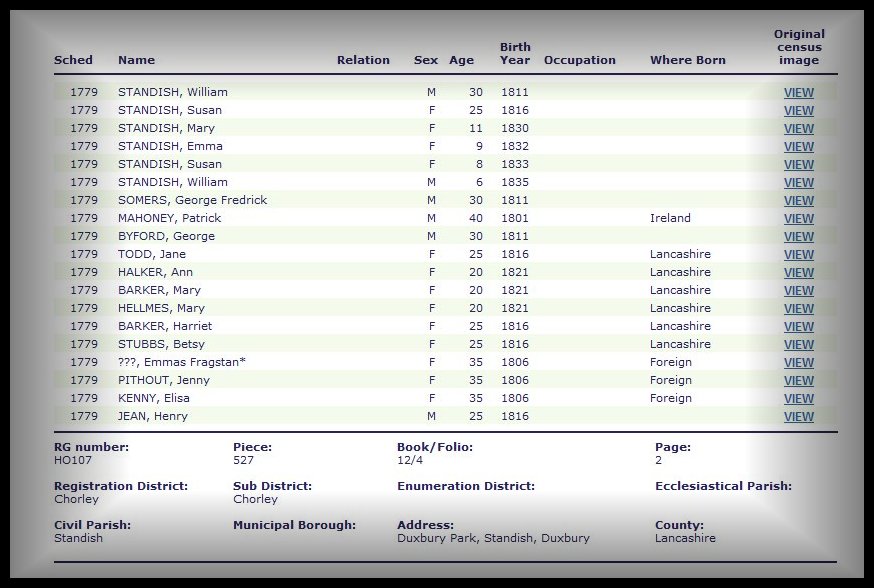
Mr & Mrs W Carr - Standish of Duxbury Hall and the King of France - from the Press November 6th 1841.
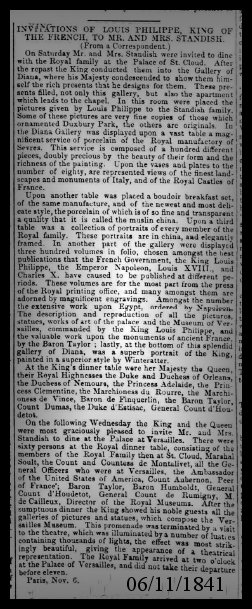
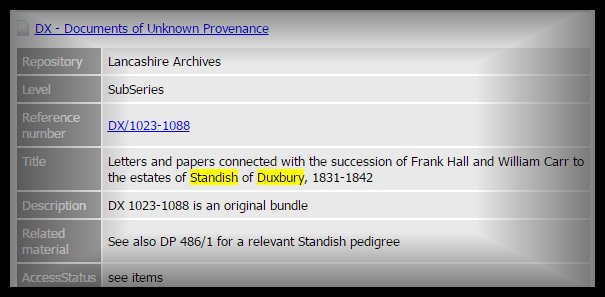
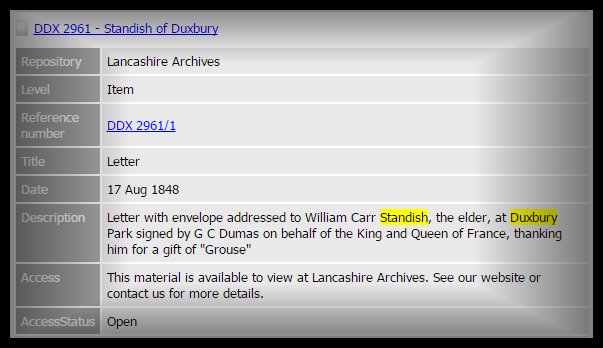
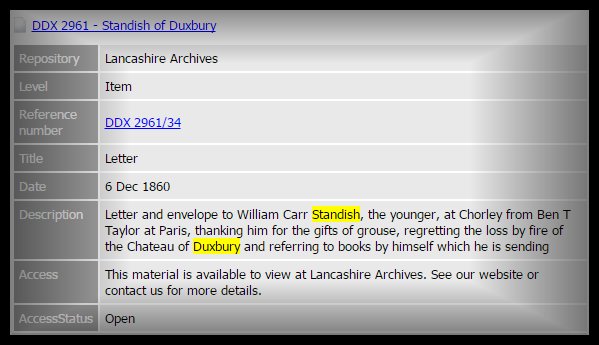
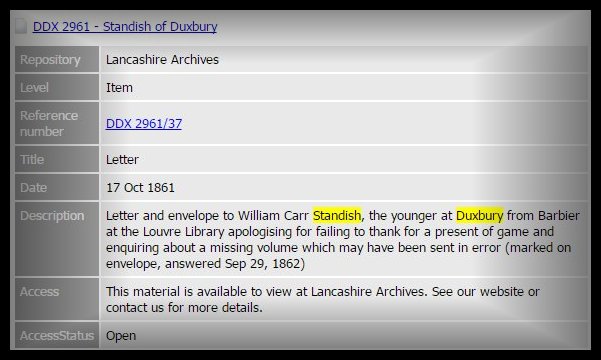
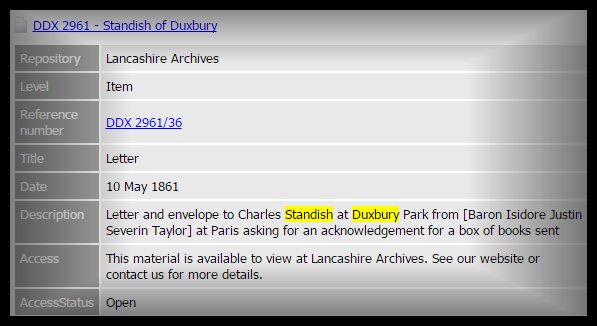

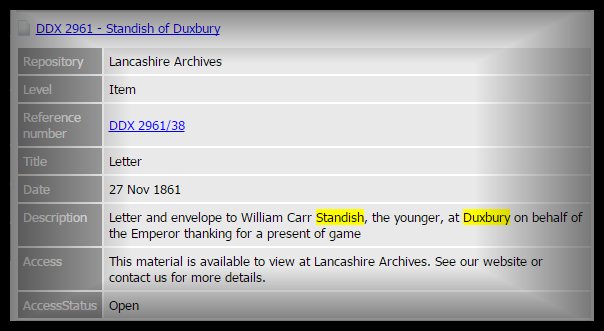
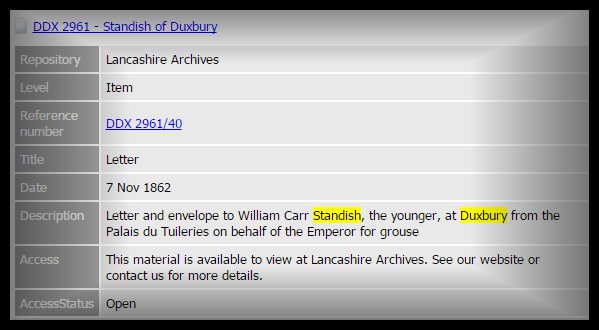
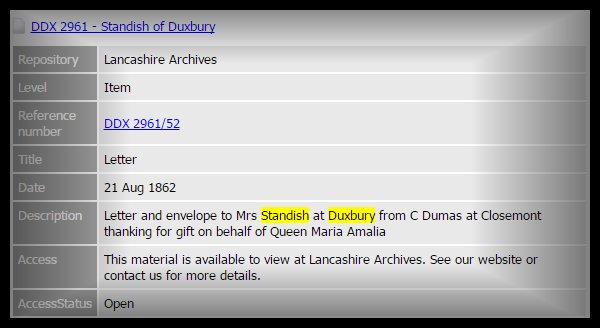
1830. Portrait of Louis Philippe de Bourbon - the last King of France.
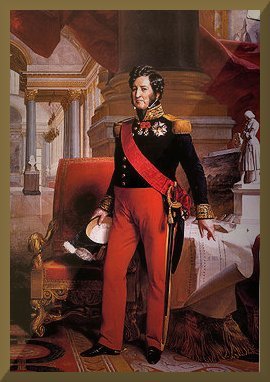
1848. King Louise Philippe of France buys the Duxbury Estate.
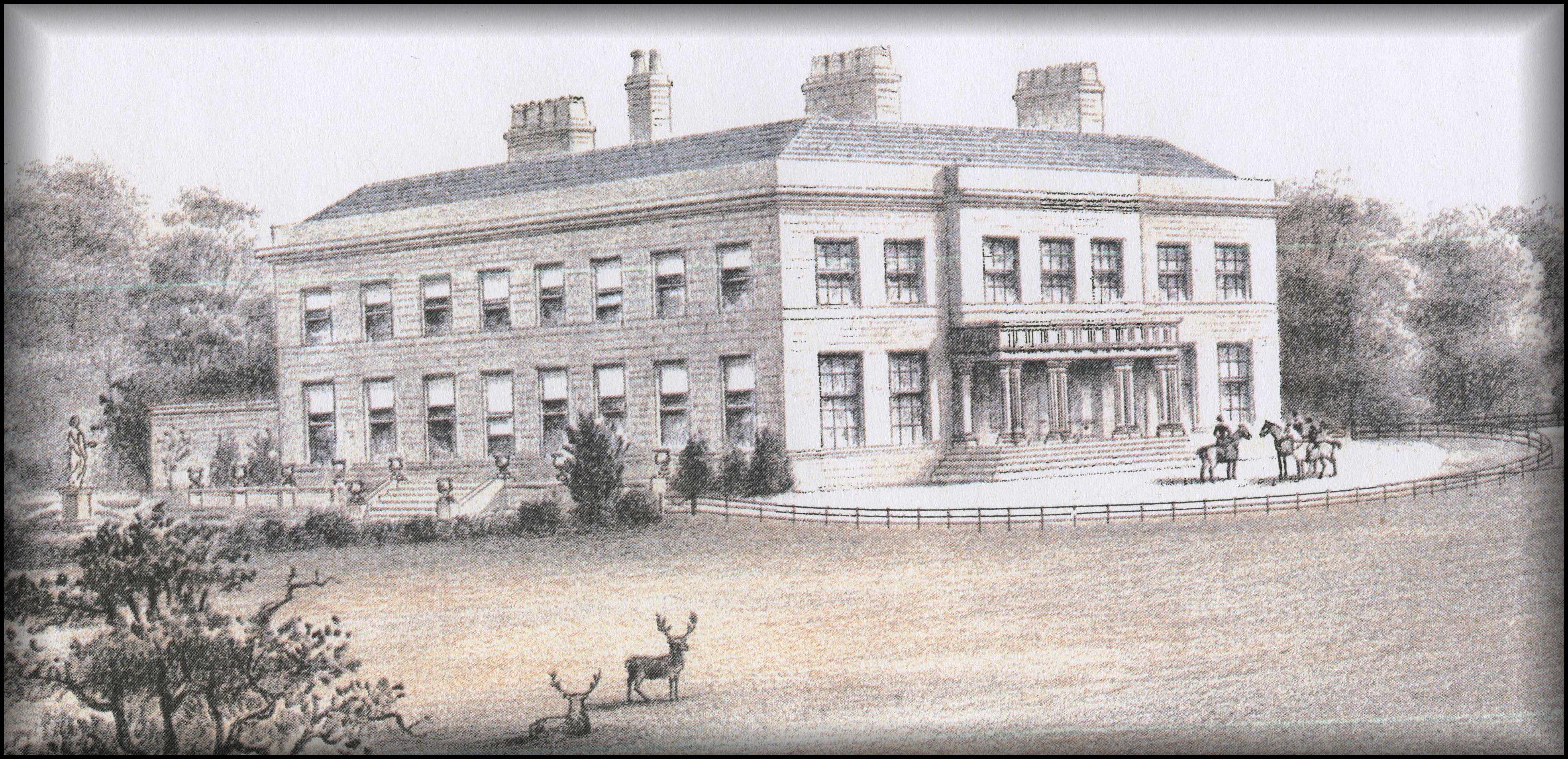
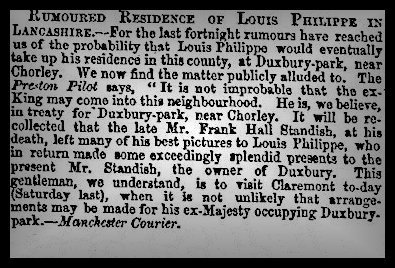
1850. Death of King Louise Philippe .

1856. William Standish (Carr) Standish of Duxbury Hall - Death.
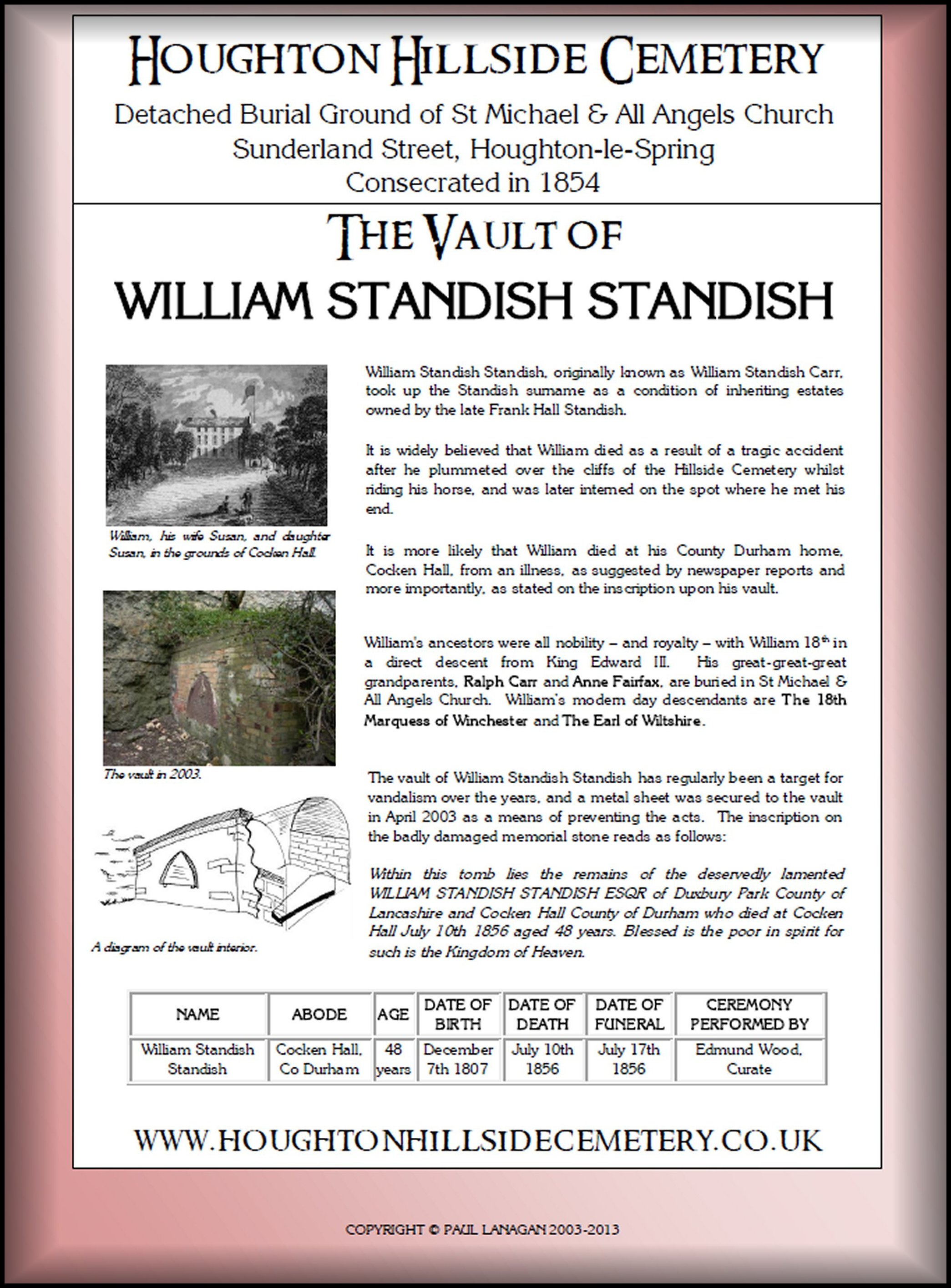
1862. William Standish Carr Standish of Duxbury Hall
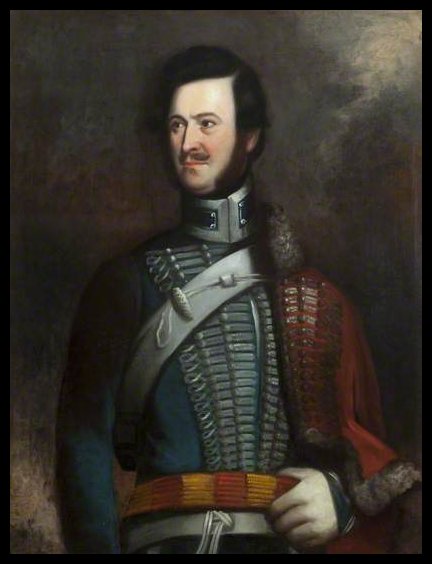
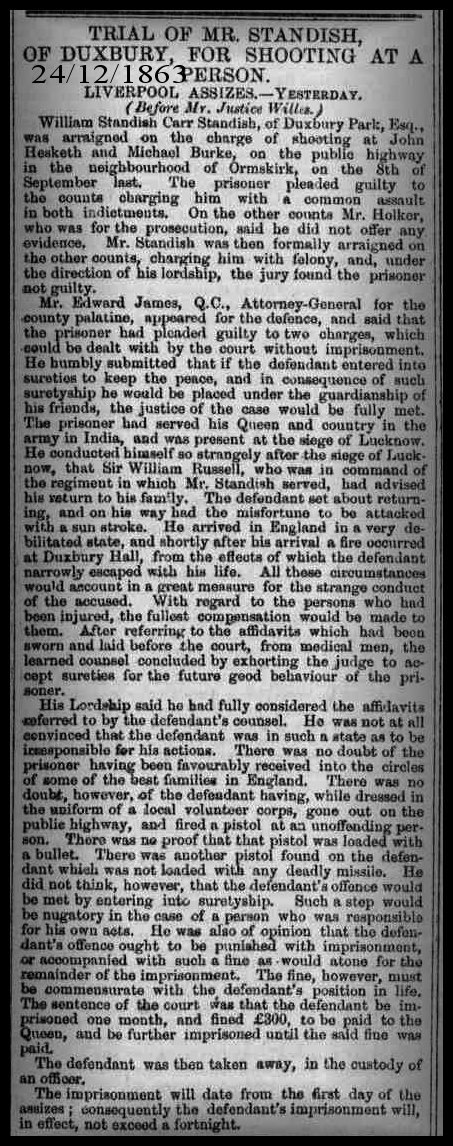
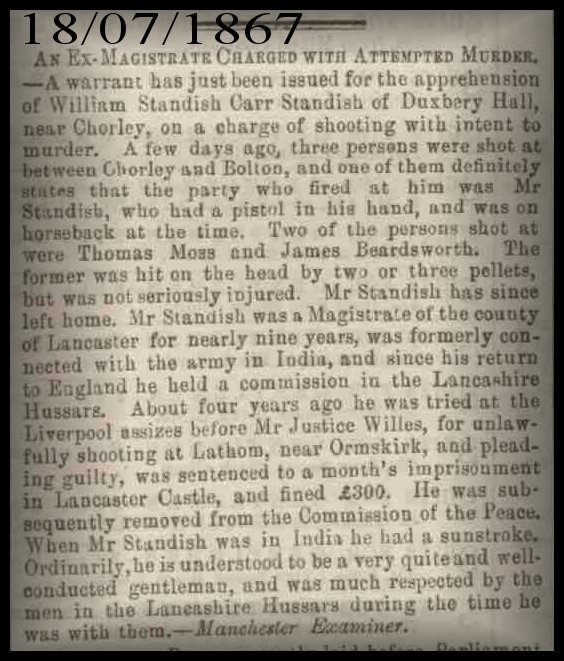
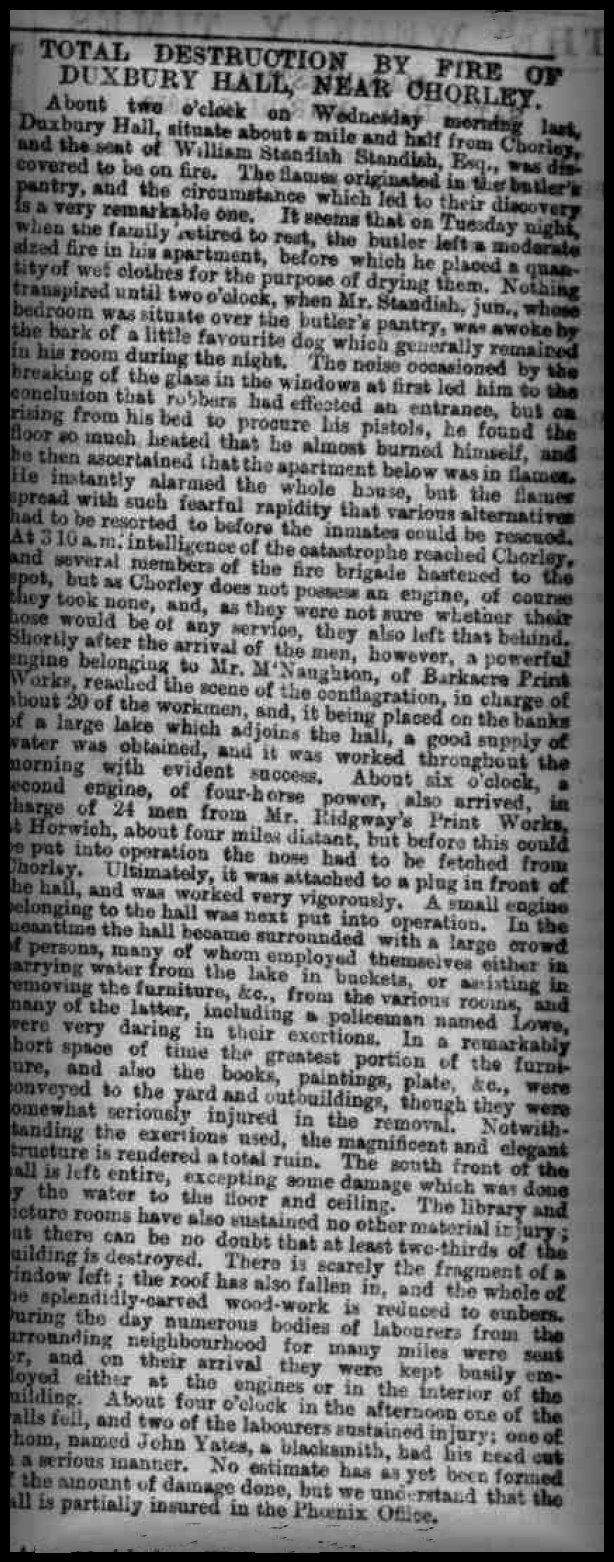
1863. Susan A G Standish of Duxbury Hall - Marriage.
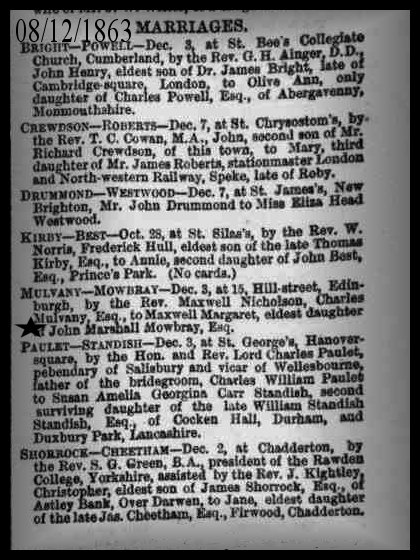
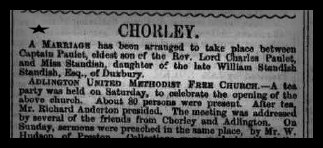


1883. Susan A G Standish - Paulett of Duxbury Hall.
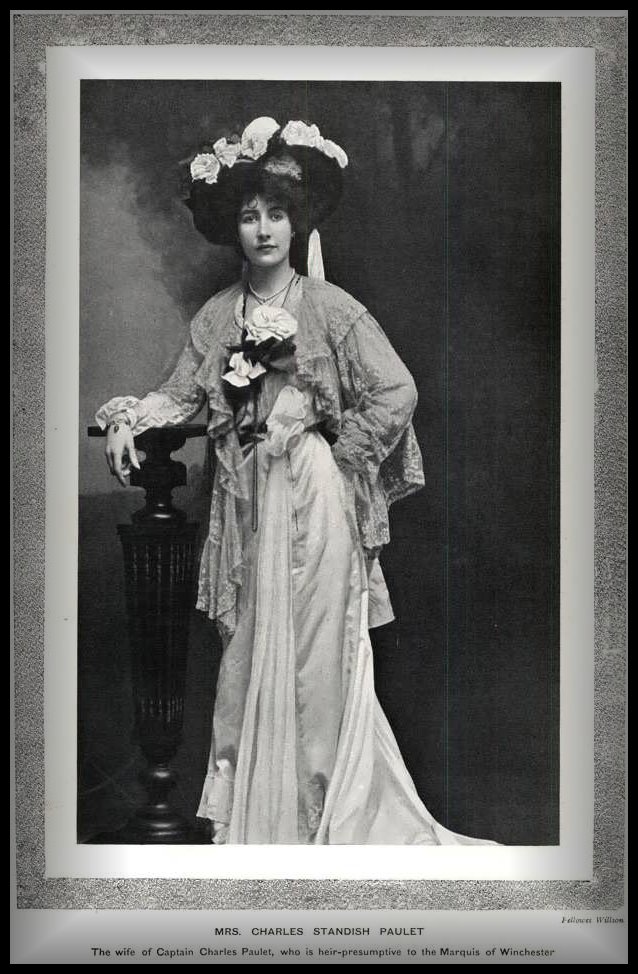
Link The Hall & Carr Families of the Manor of Duxbury Lancashire England 1812 to 1898.
![]()
The Mayhew Family of England - Canada - USA.
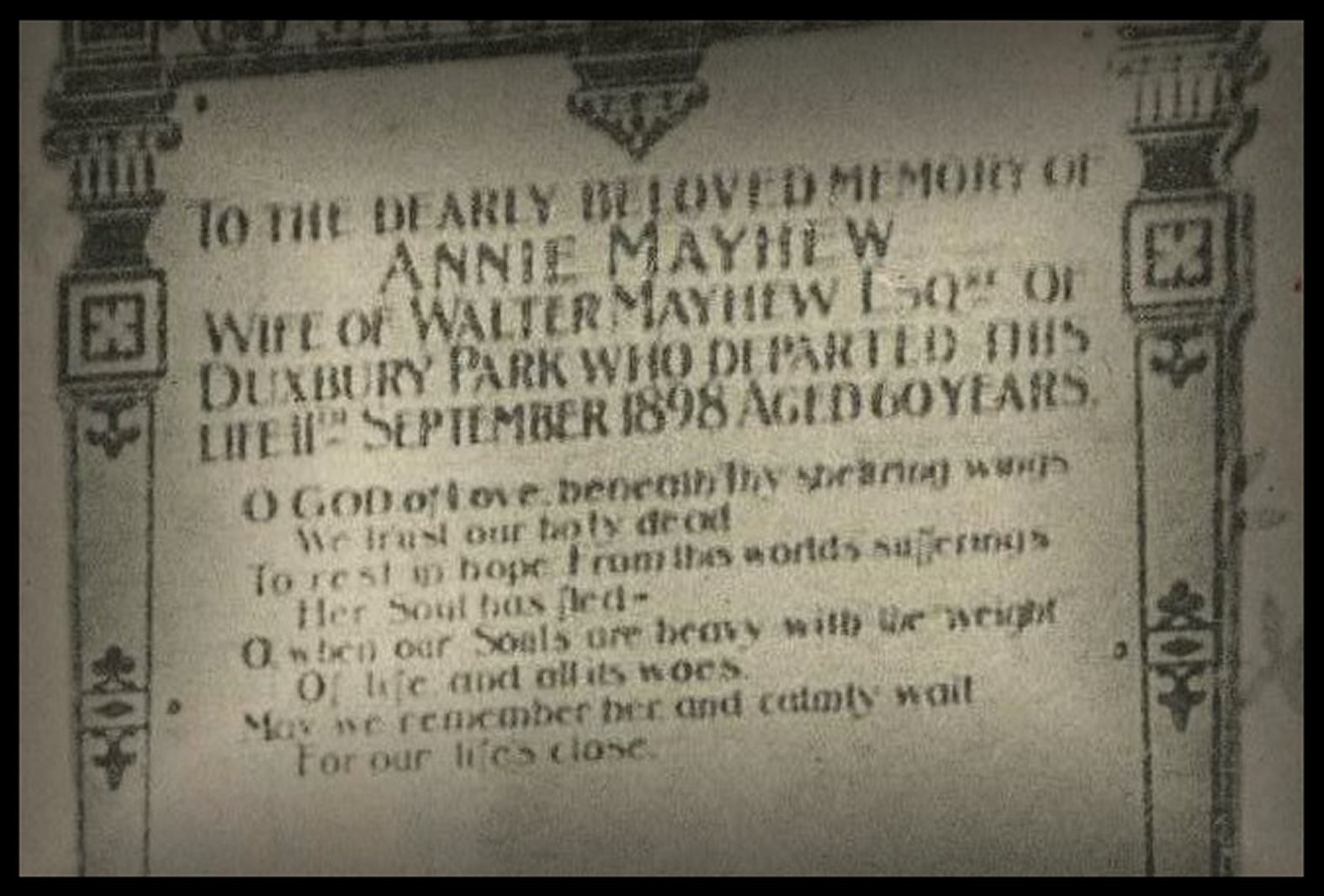
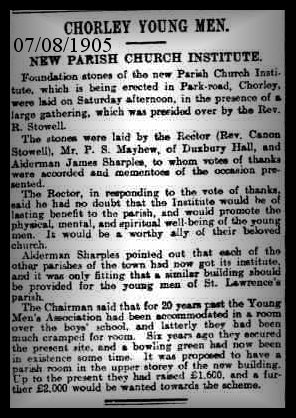
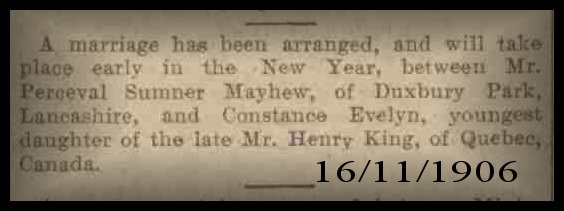
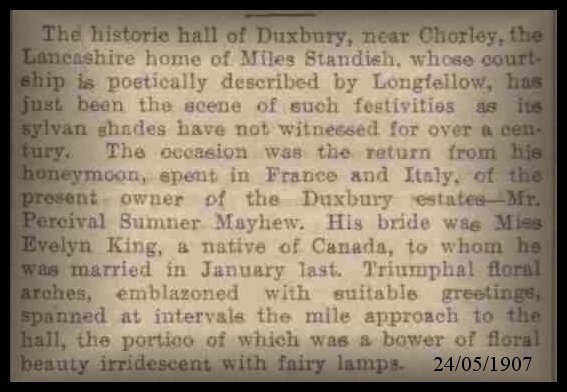
22nd of May 1907 Mr & Mrs P Sumner - Mayhew of Duxbury Hall.

22nd of May 1907 Mr & Mrs P Sumner - Mayhew of Duxbury Hall.

22nd of May 1907 Mr & Mrs P Sumner - Mayhew of Duxbury Hall.

1909 Mr & Mrs P Sumner - Mayhew and the Servants of Duxbury Hall.
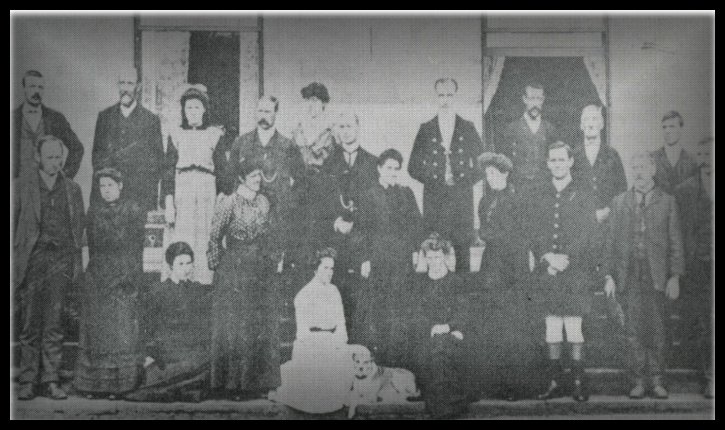
1901 Census of Duxbury / Hall.
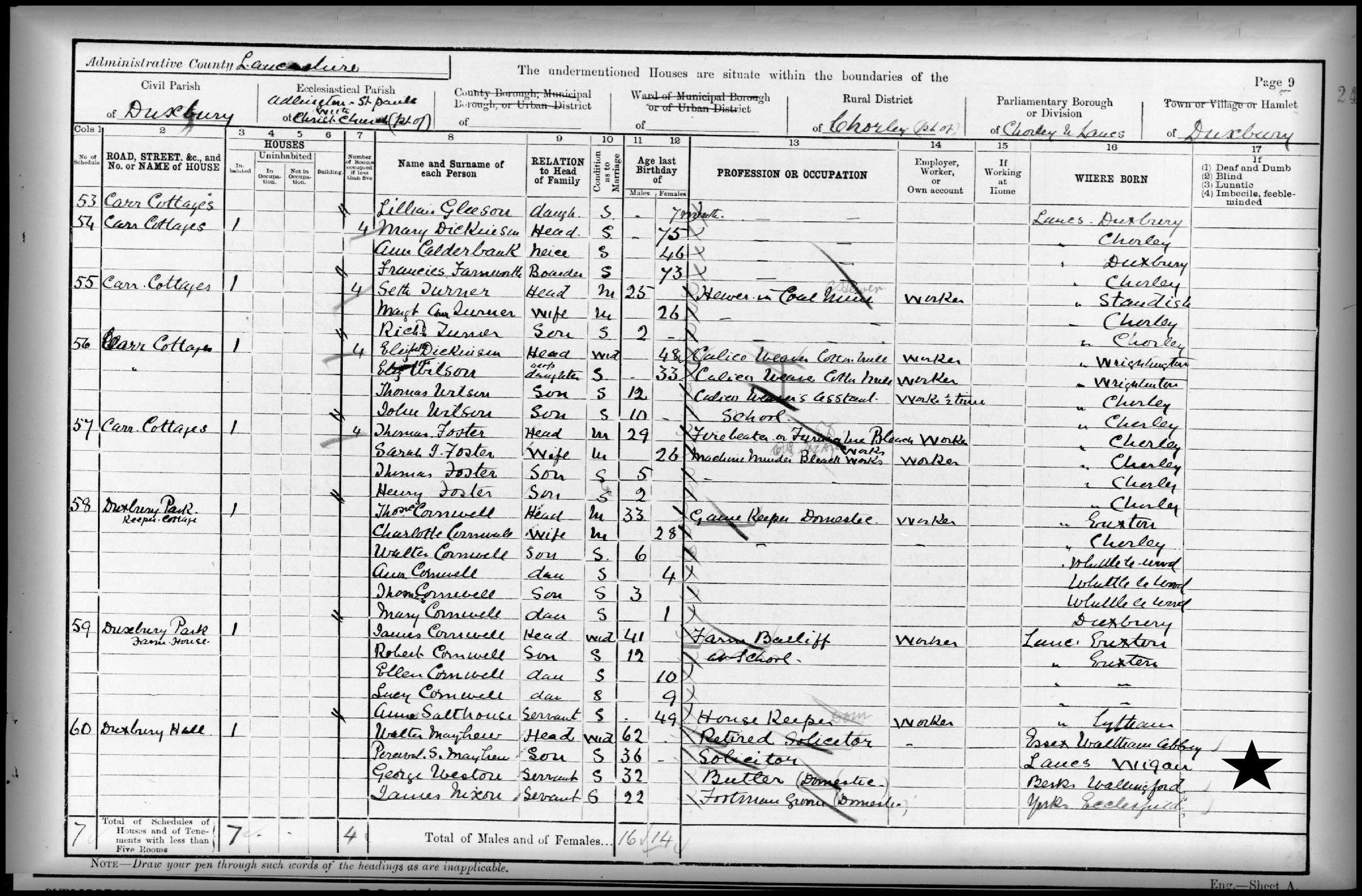
1911 Census of Duxbury Hall.
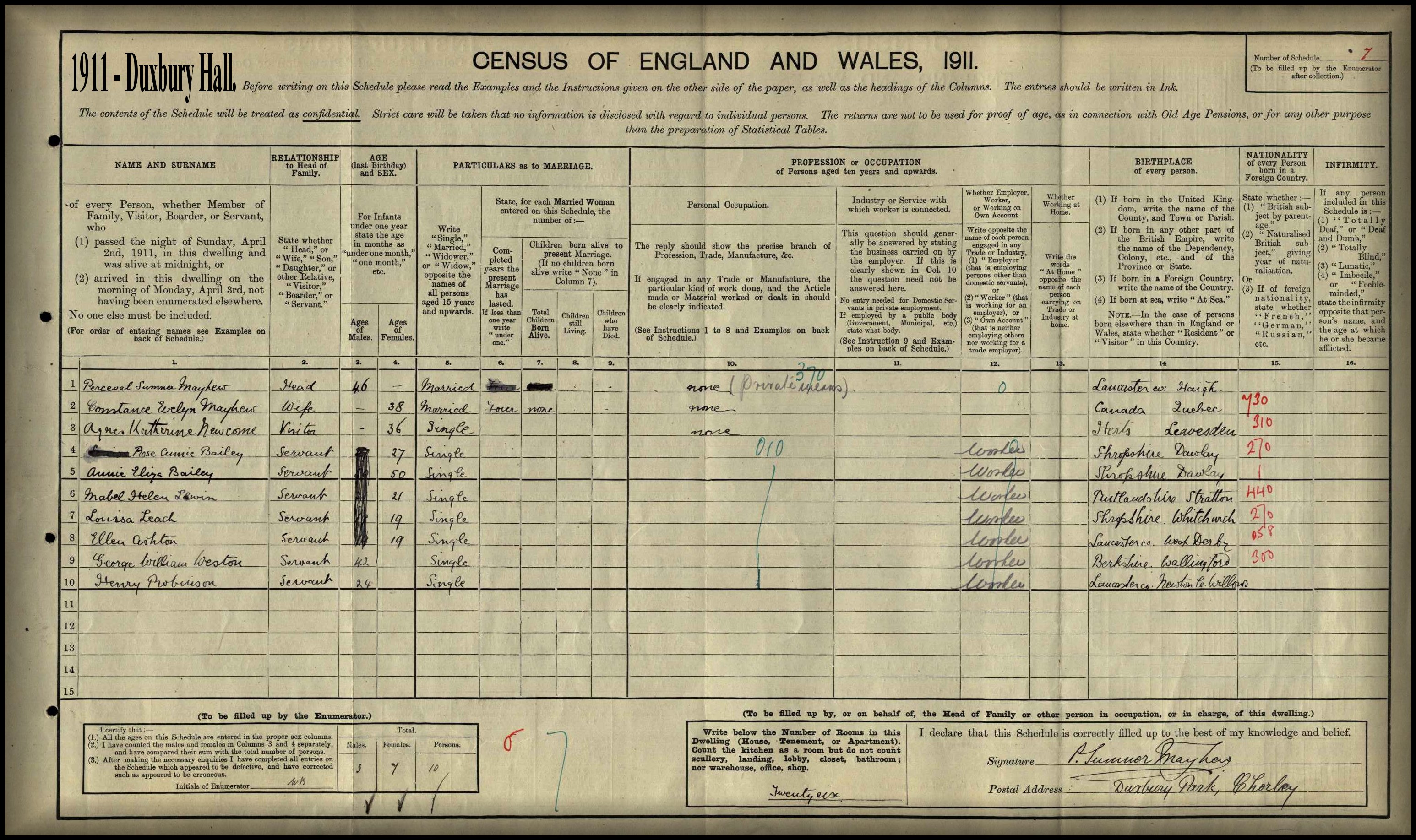
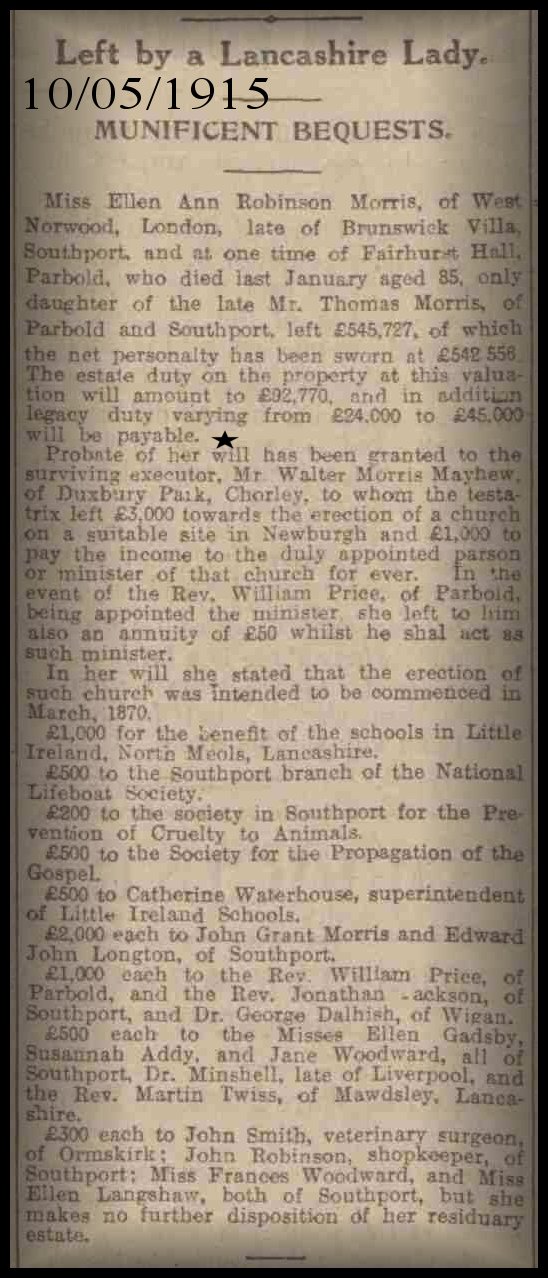
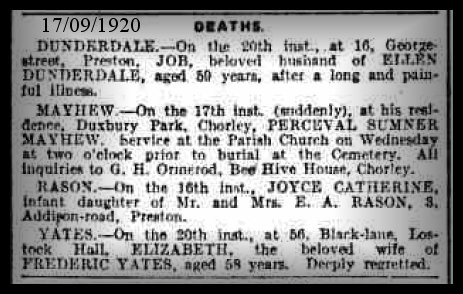 #
#
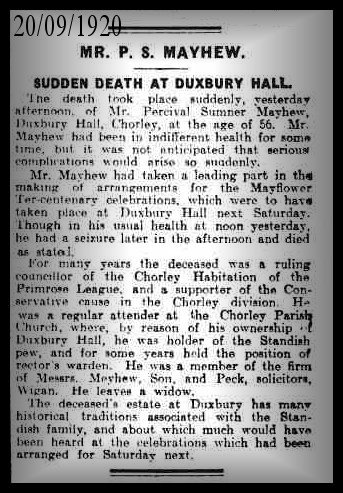
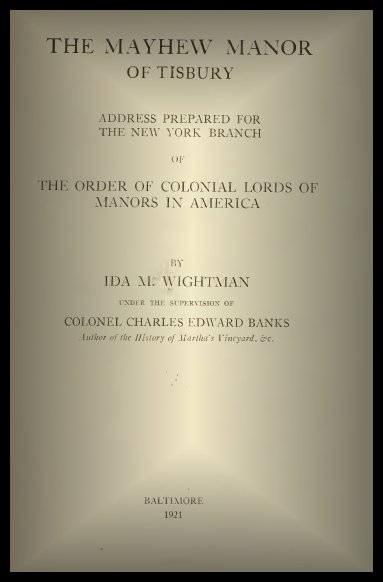
Download - pdf file - The Mayhew Manor of Tisbury.
Link The Mayhew Family of England & The Mason Family of Ireland 1898 to 2008.
![]()
1932 to 2015.
The End of the Manor of Duxbury - 1932 purchased by Chorley Town Council.
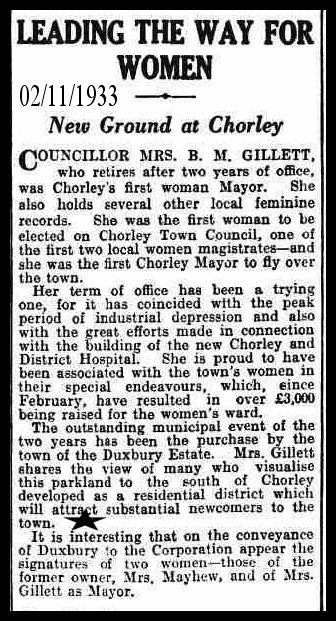
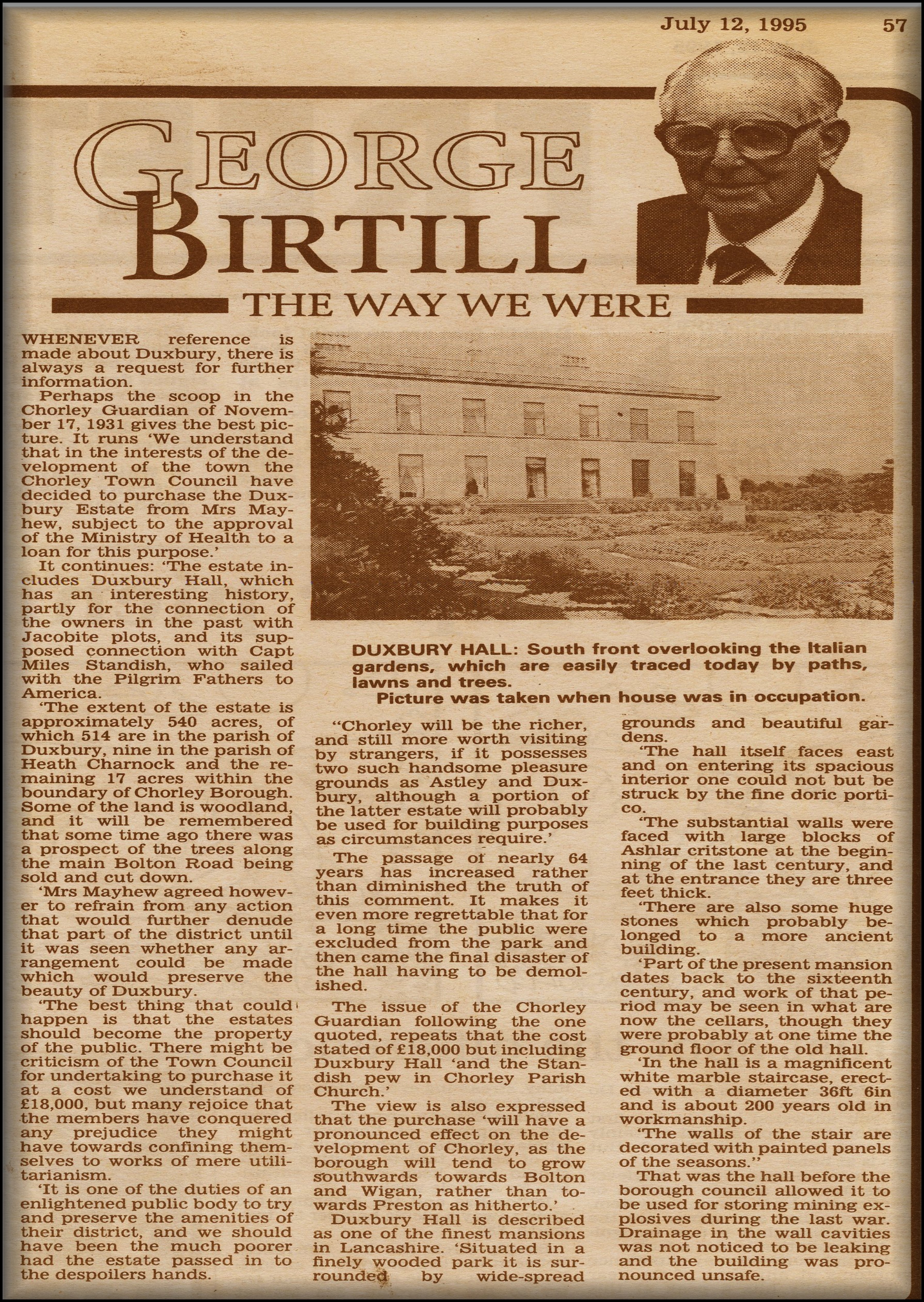
The Manor of Duxbury boundary pre 1931 alterations.
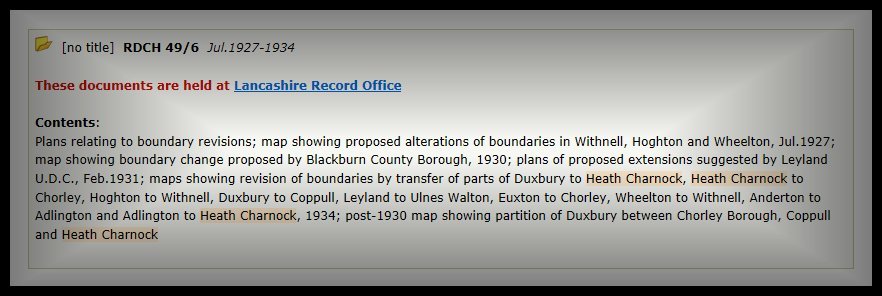
Site number 385 Manor of Duxbury Boundary.
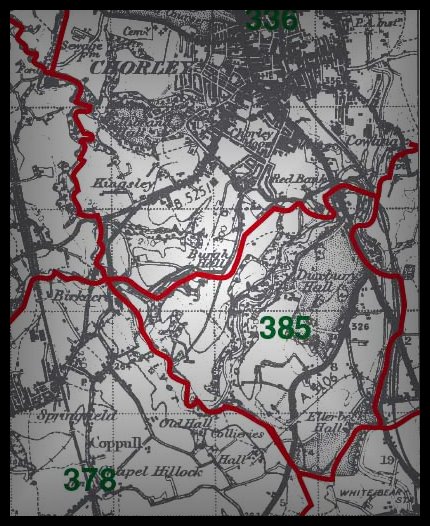
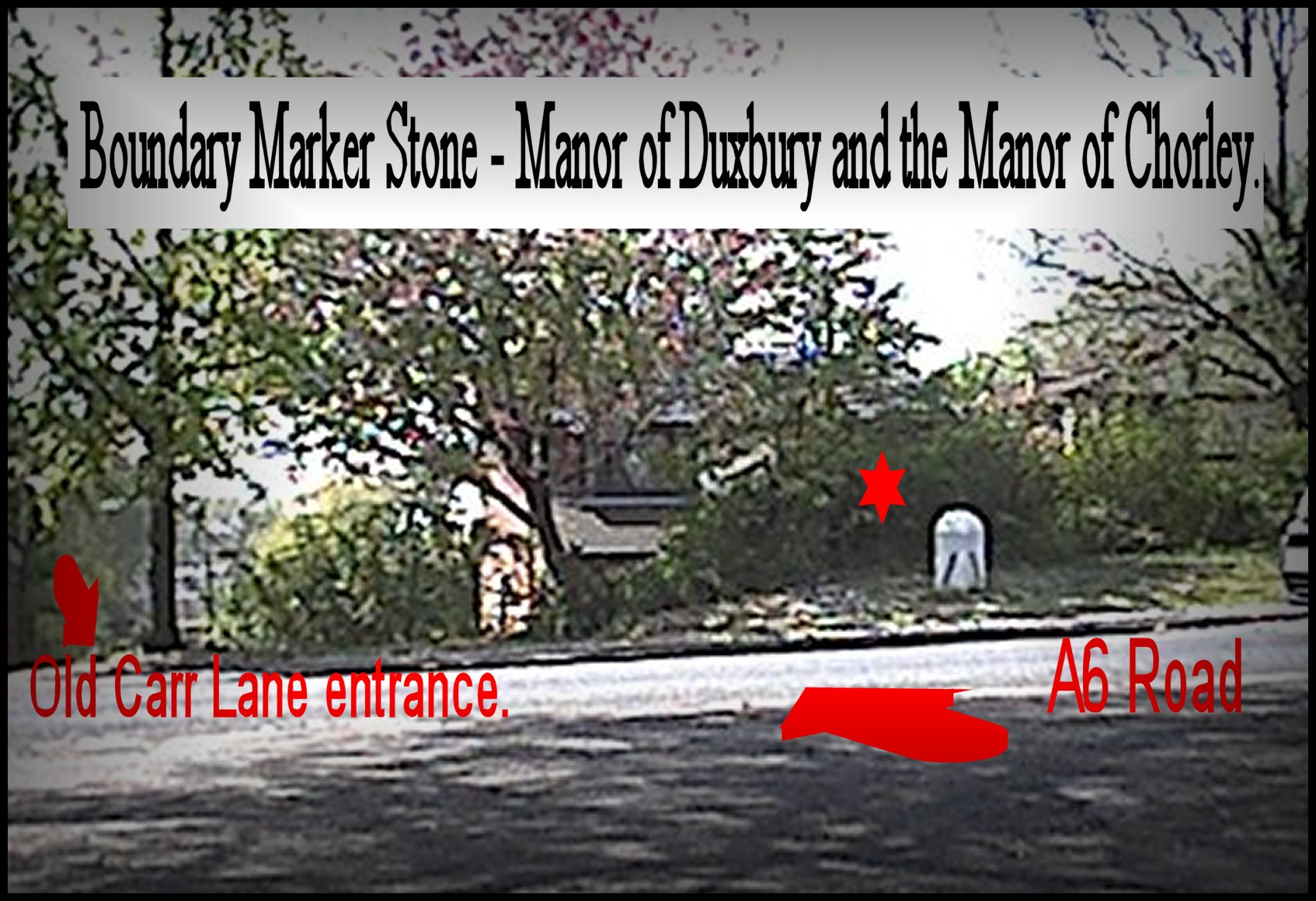
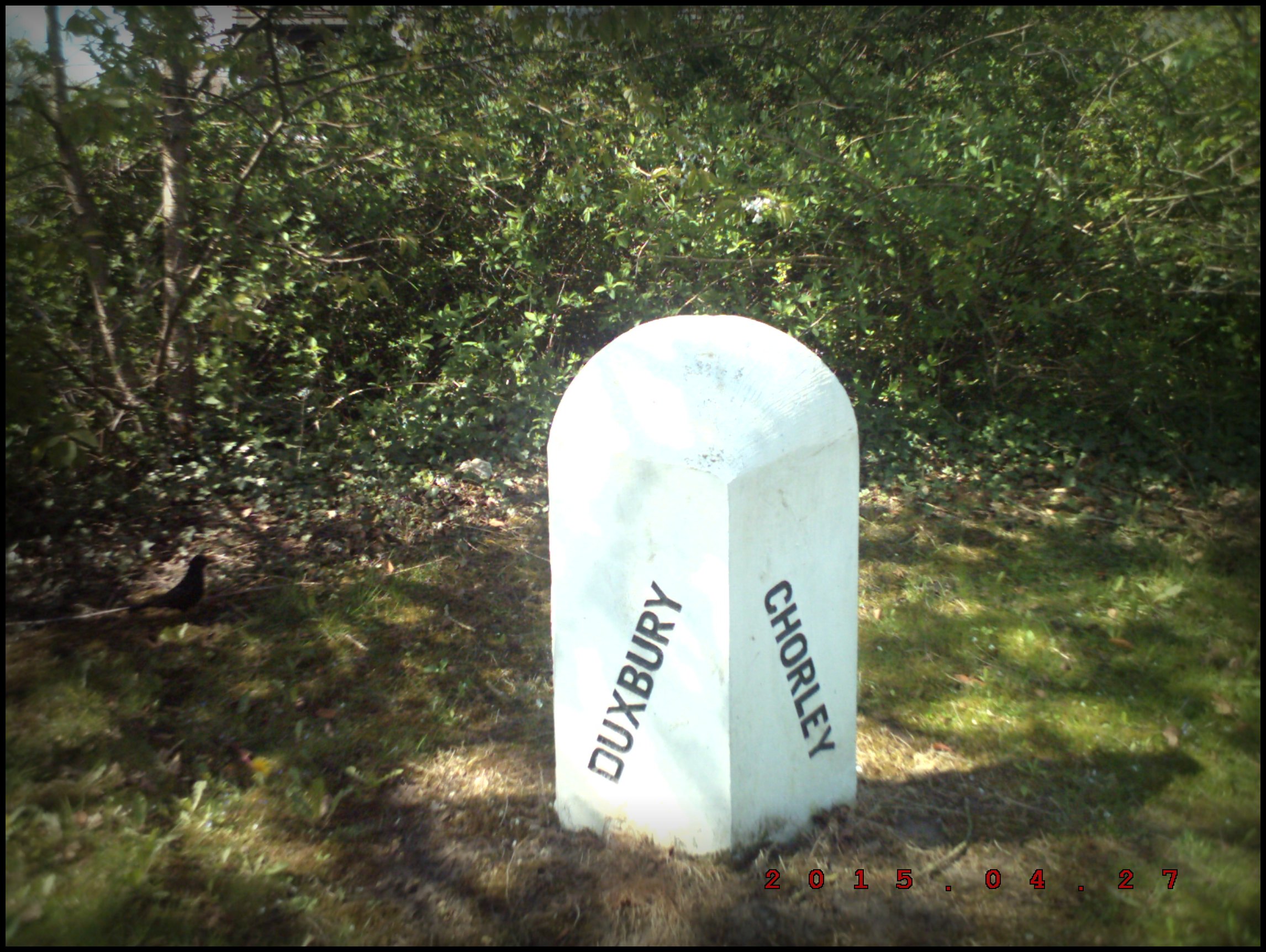
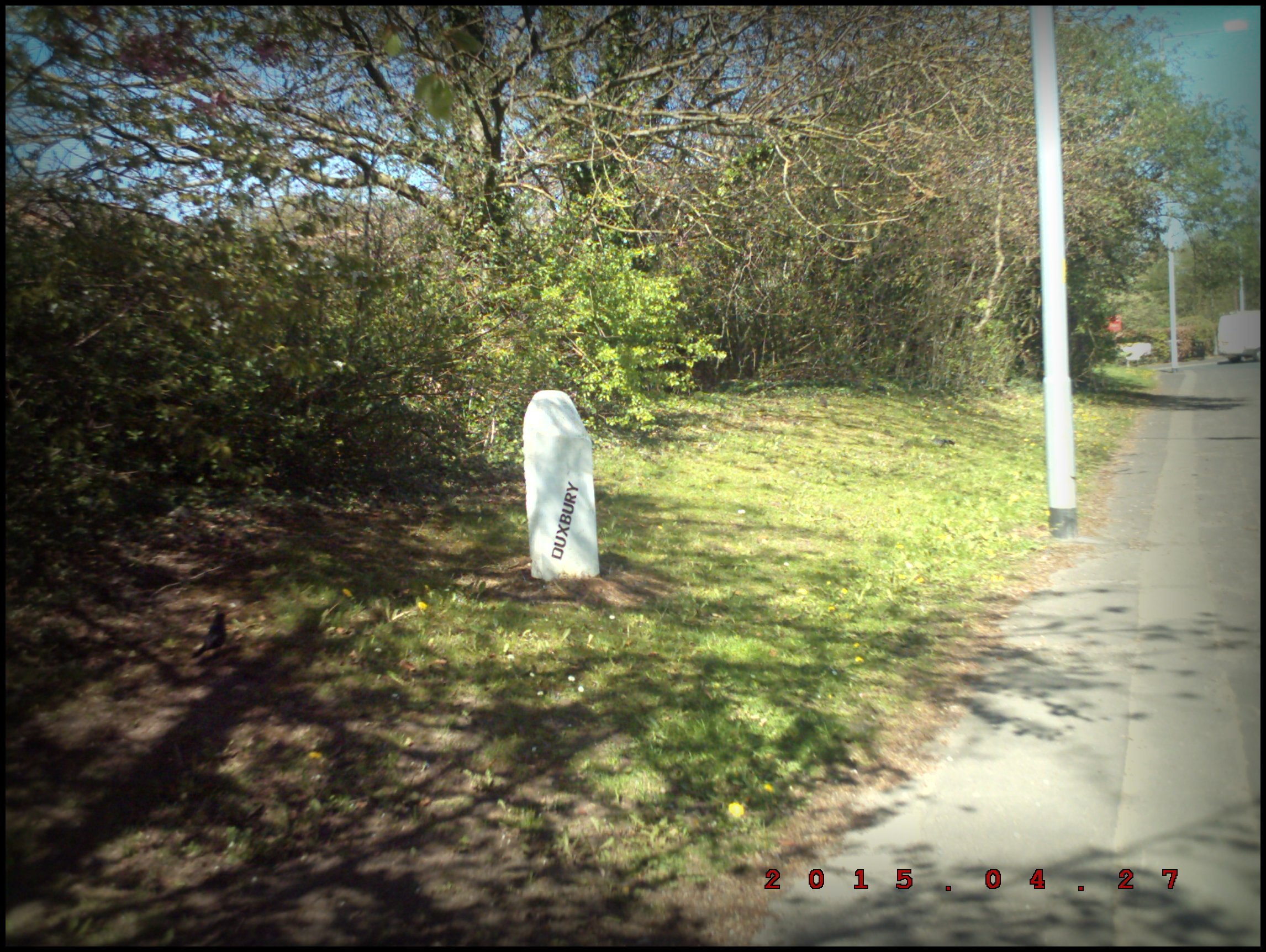
The Manor of Duxbury 2015
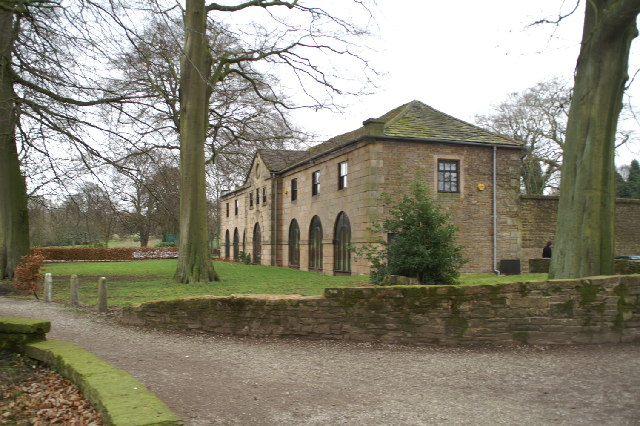
The site of Deowucs Burgh - 2015
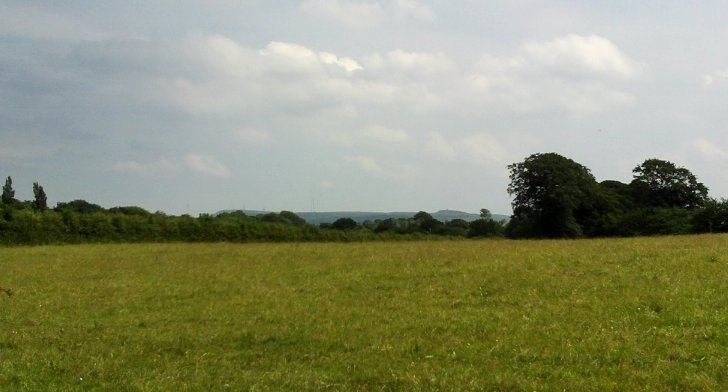
The site of Deowucs Burgh - 2015
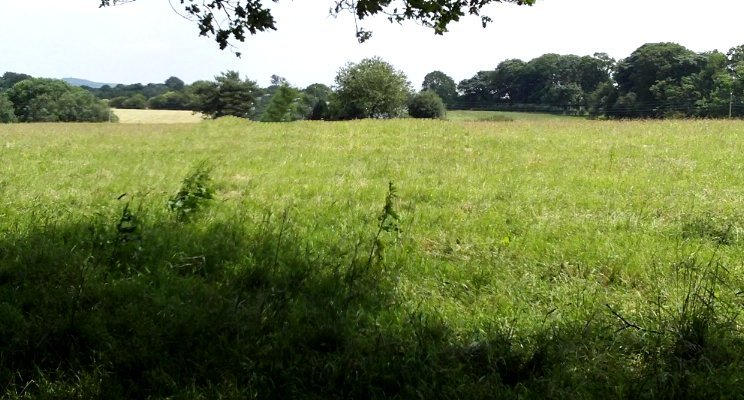
The site of Deowucs Burgh - 2015
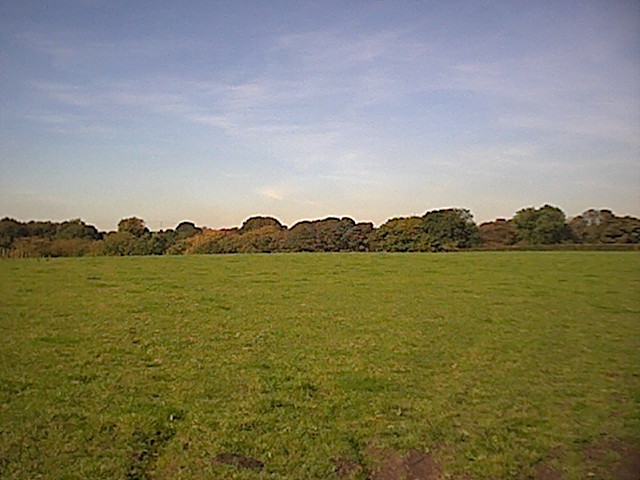
The site of Deowucs Burgh
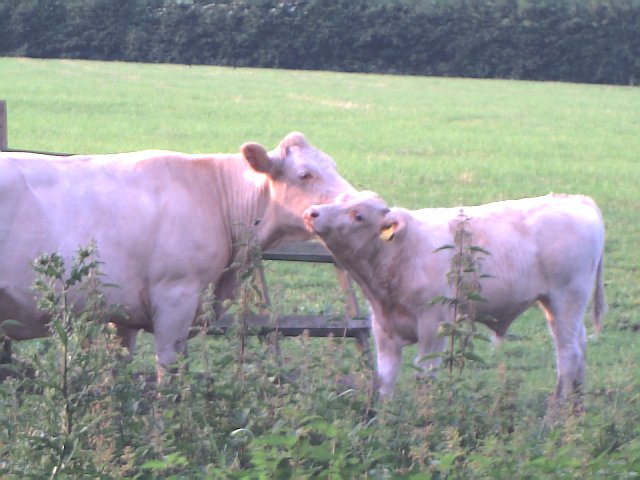
The Manor of Duxbury in Winter.
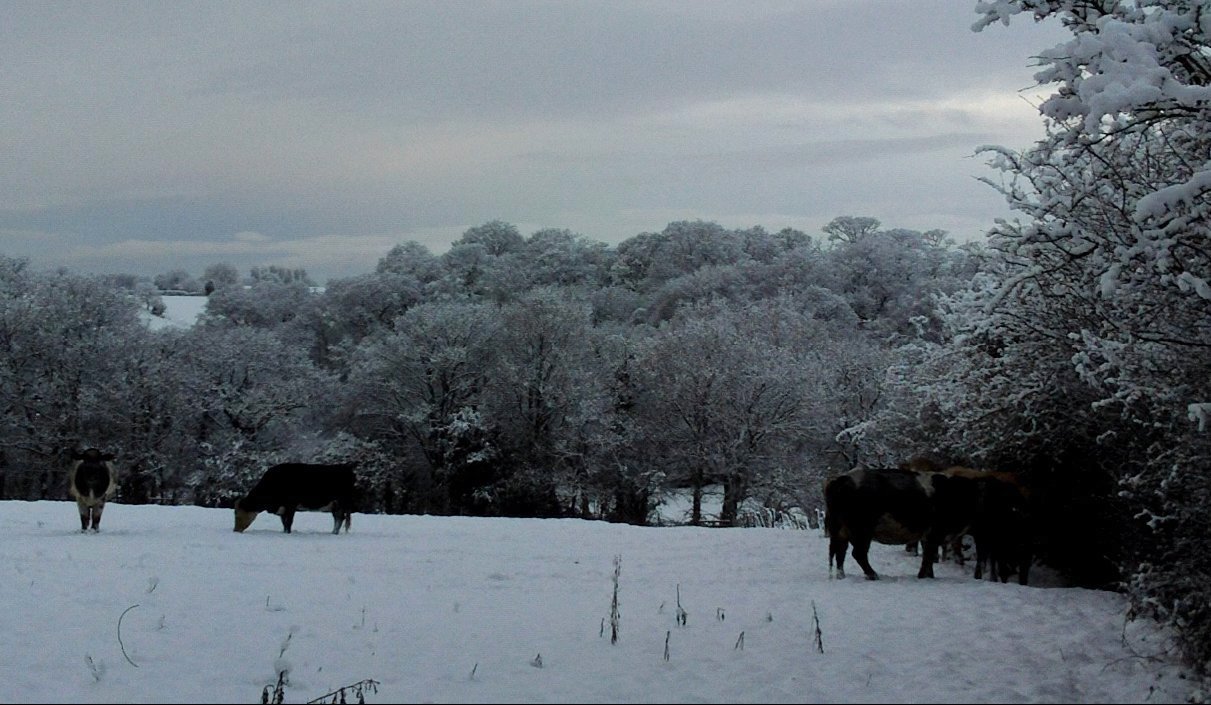
The New Manor of Duxbury - 2015
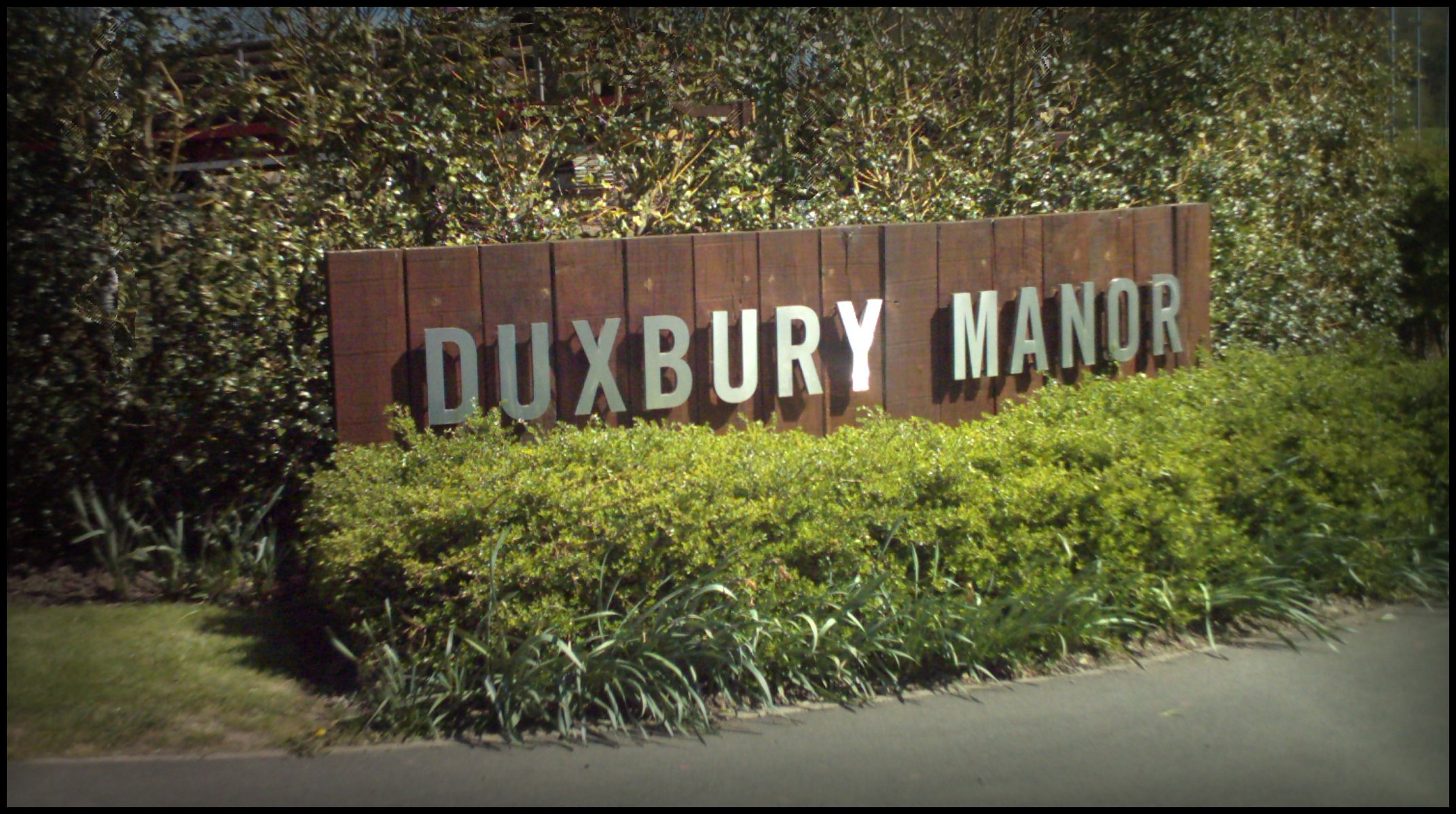
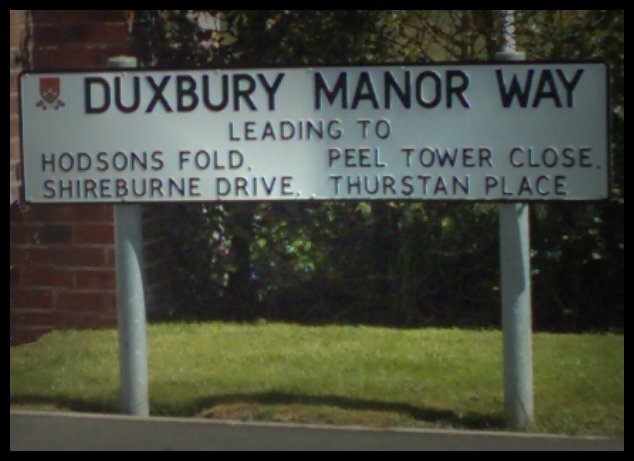
History upon a road sign - 2015
1. The Hodson family took over the Peel Tower site when it was vacated by the Standish family who moved into the first Duxbury Hall.
2. The Peel Tower stood on the hill top just above the Duxbury Manor development site.
3. The Shireburne Family were the Lords of the Maor of Chorley.
4. Thurstan Place in honour of Thurstan Standish of the Burgh.
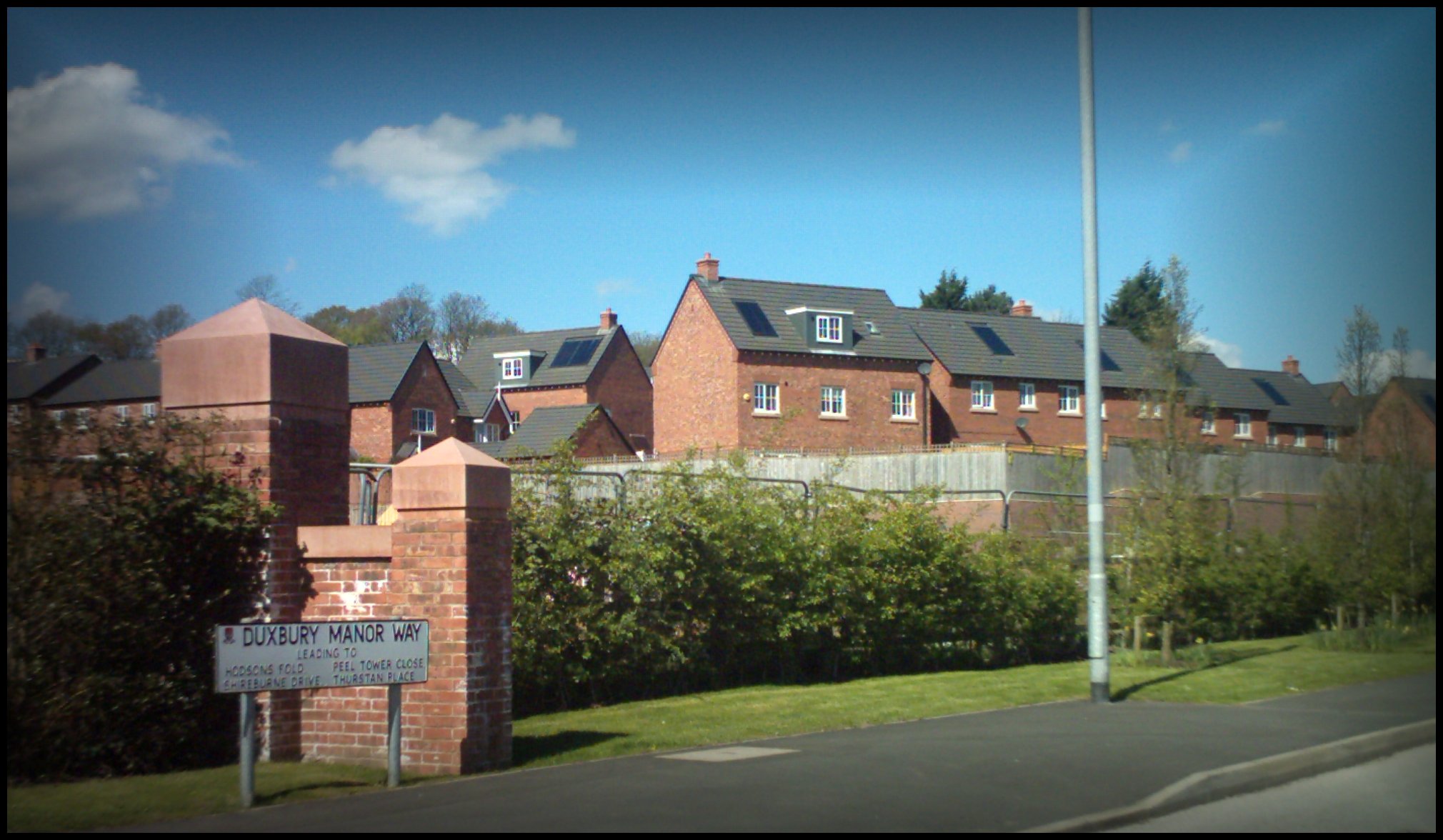
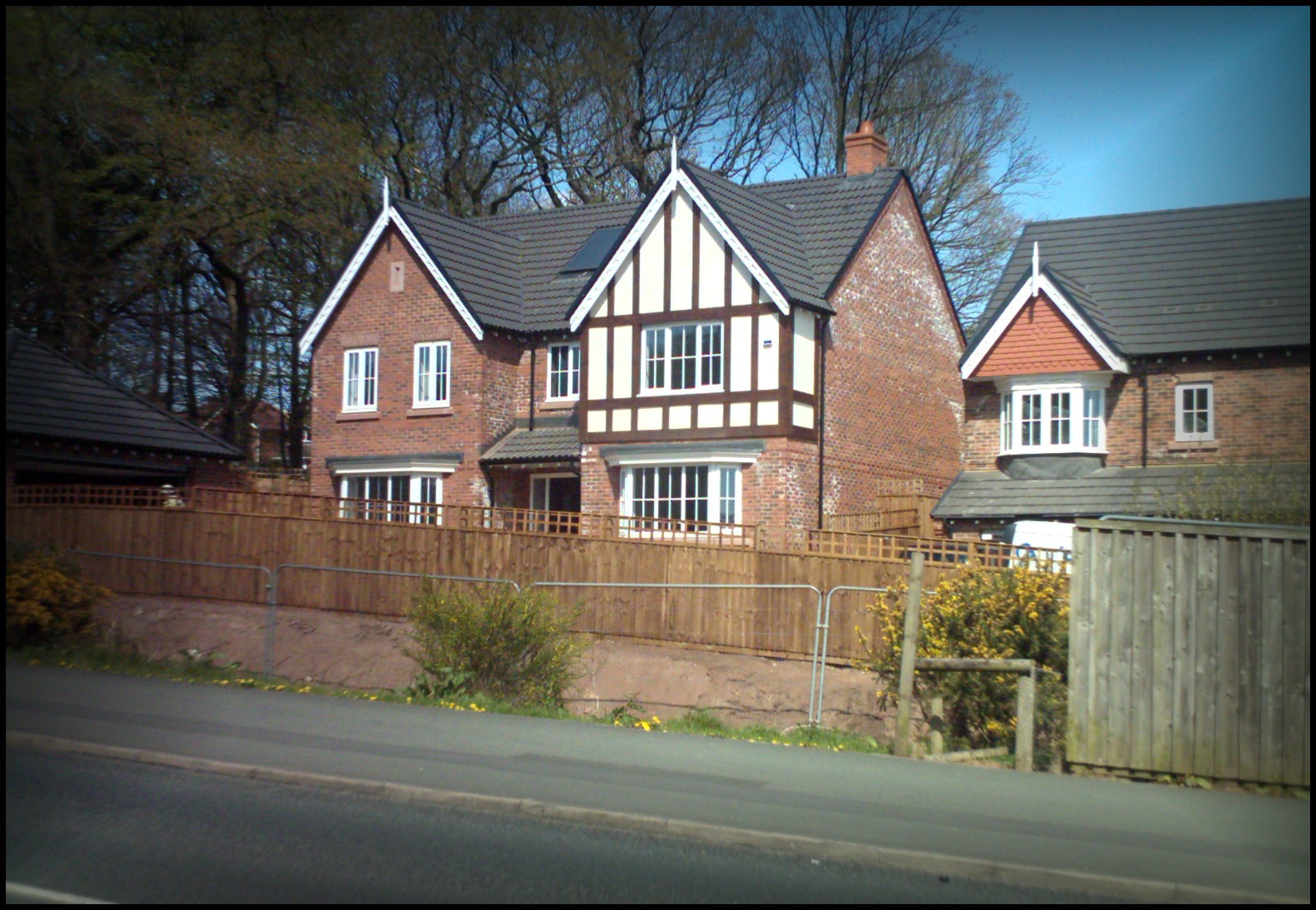
![]()
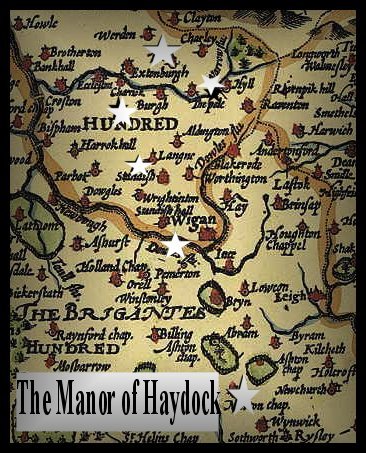
The MANOR of HAYDOCK.
Hedoc, 1169; Heddoch, 1170; Haidoc, 1212.
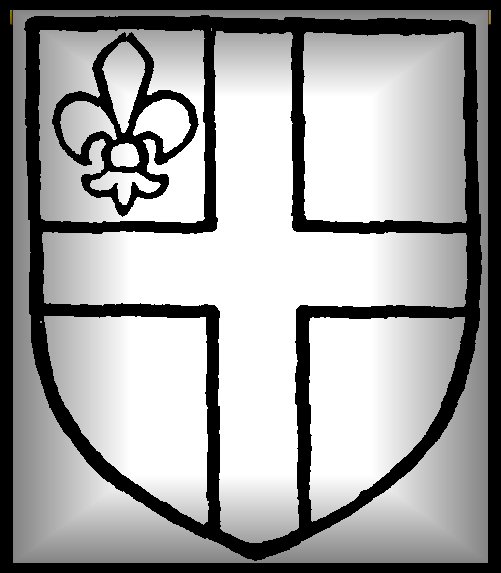
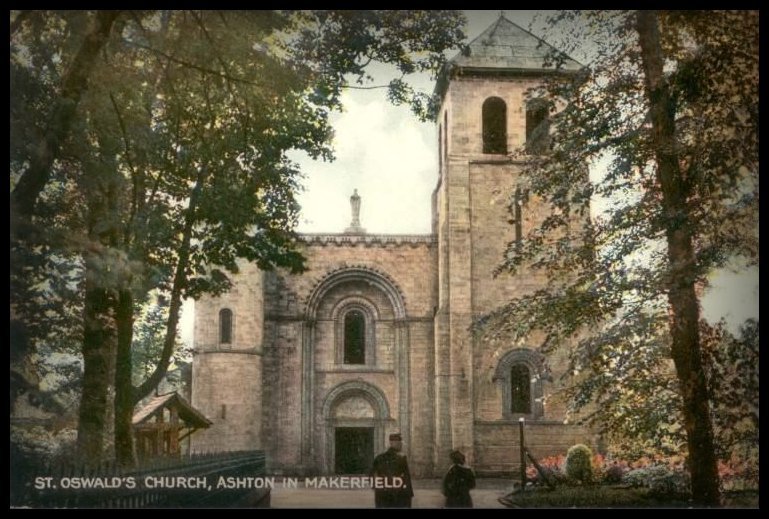
Link The Manor of Duxbury Part 2.
![]()
The Burgh and Ellerbeck Lands of the House of Standish of Standish.
Other Residents of the Manor of Duxbury.
![]()